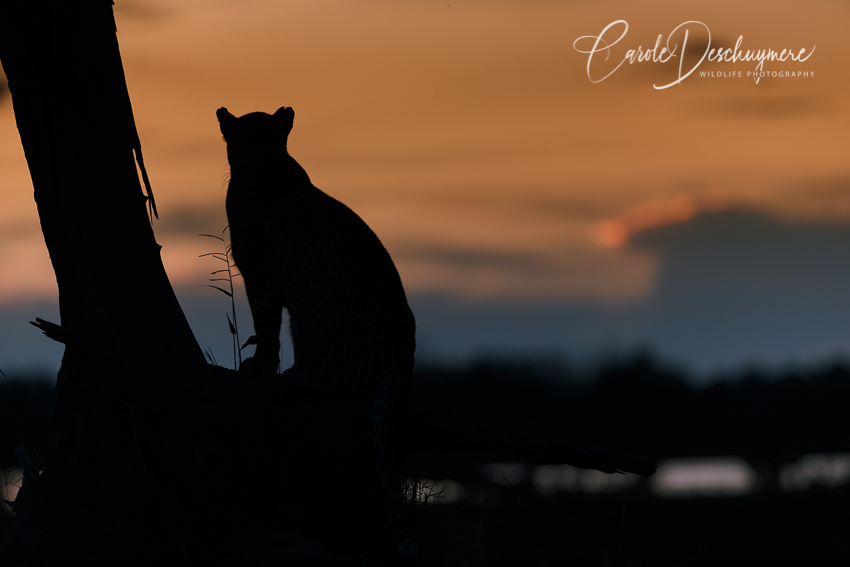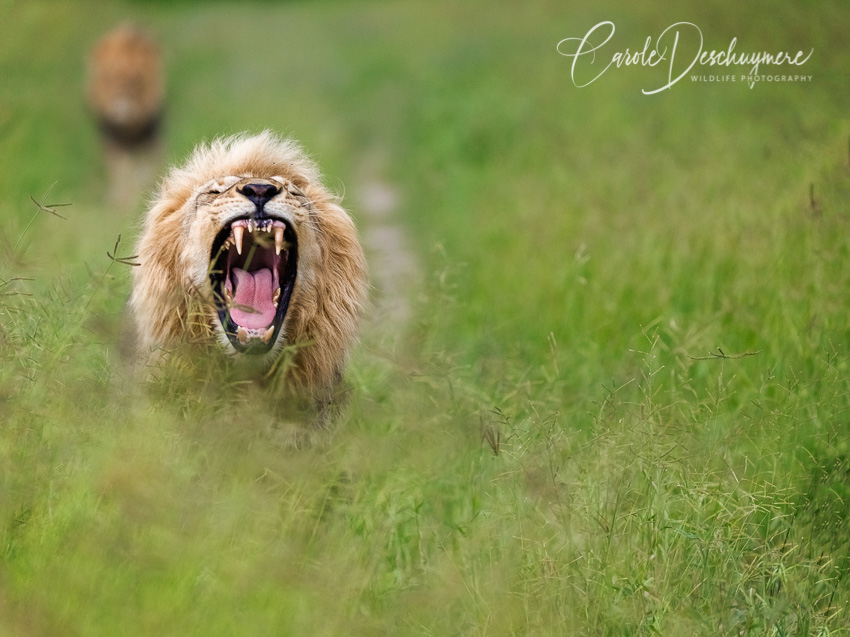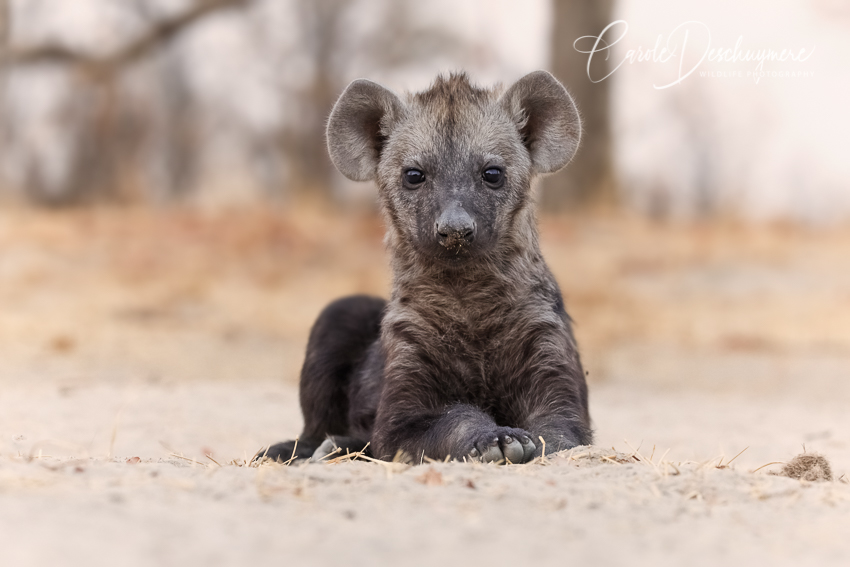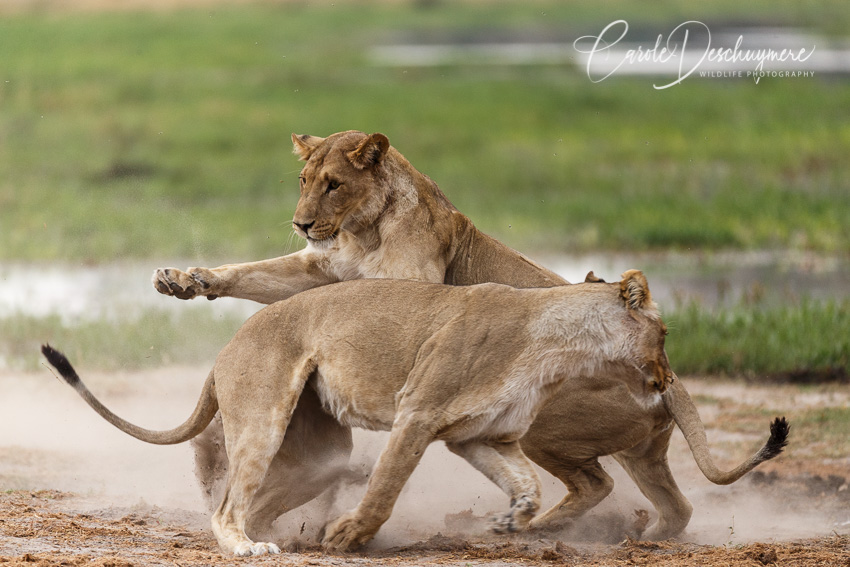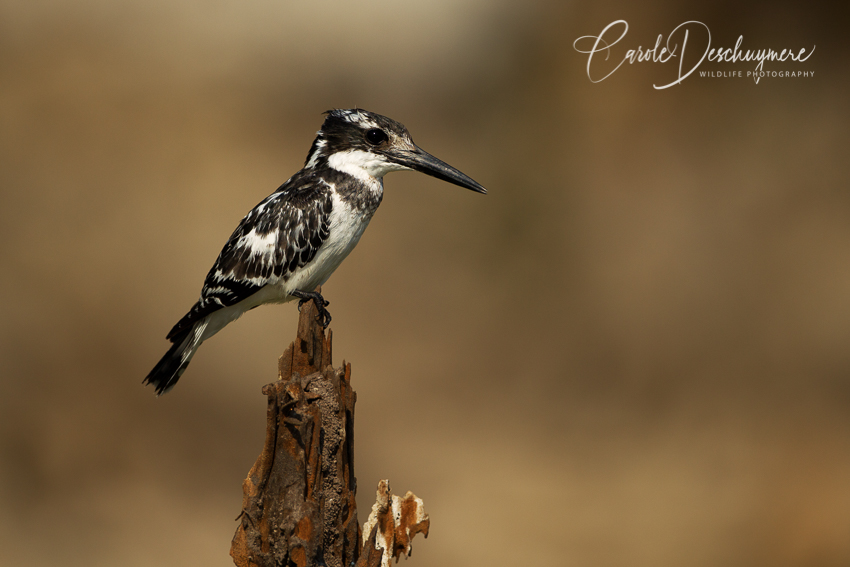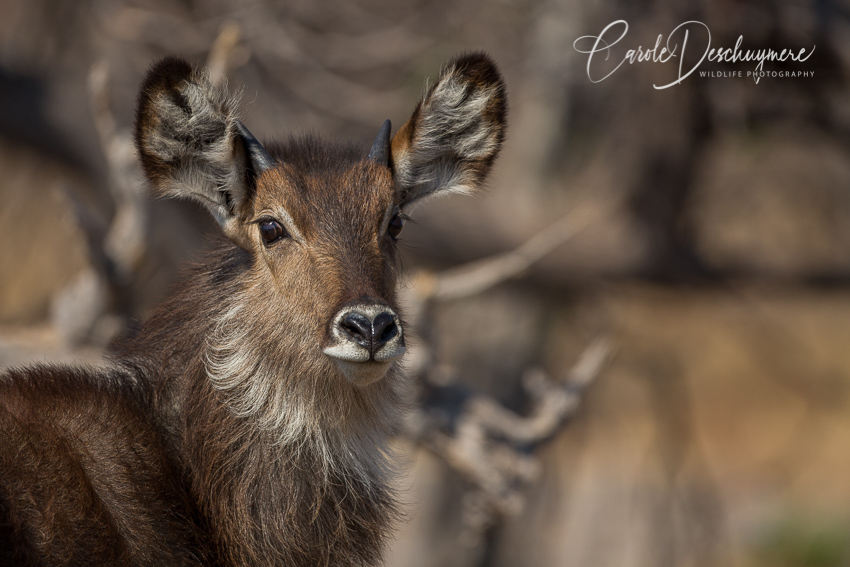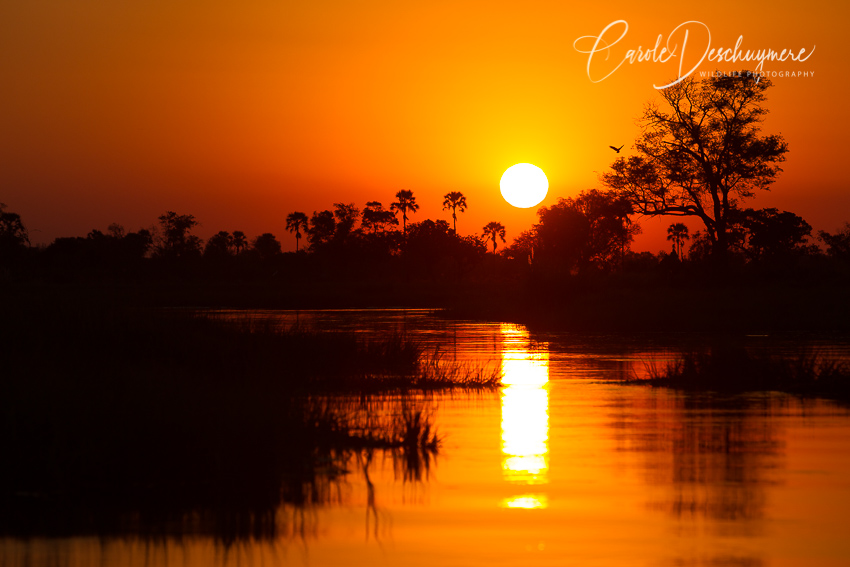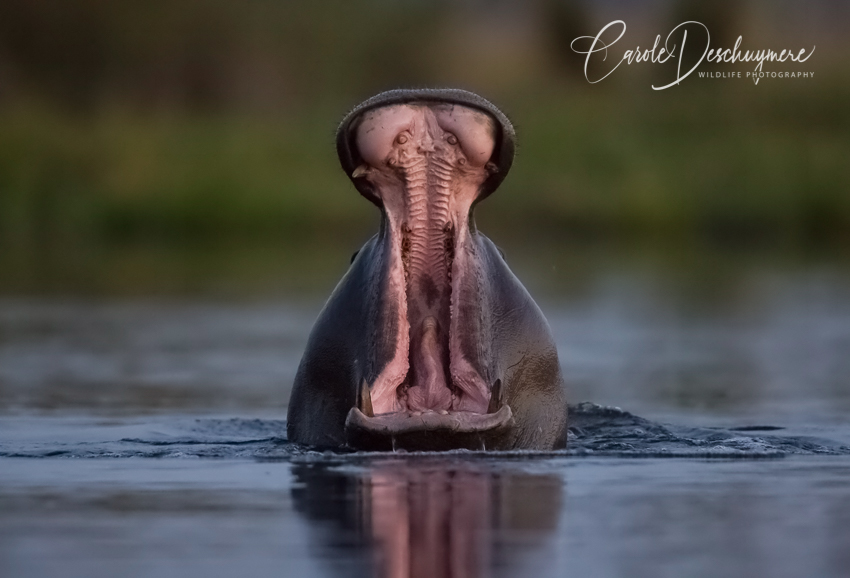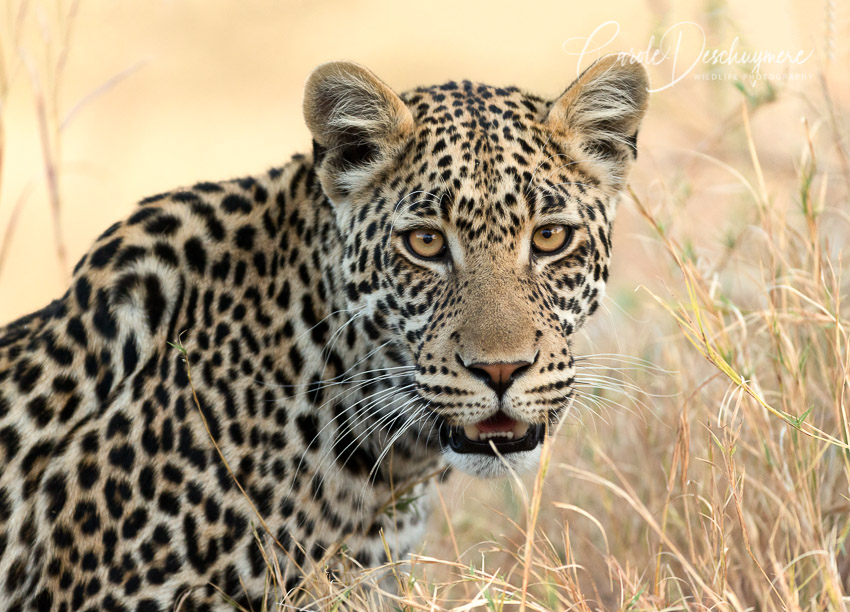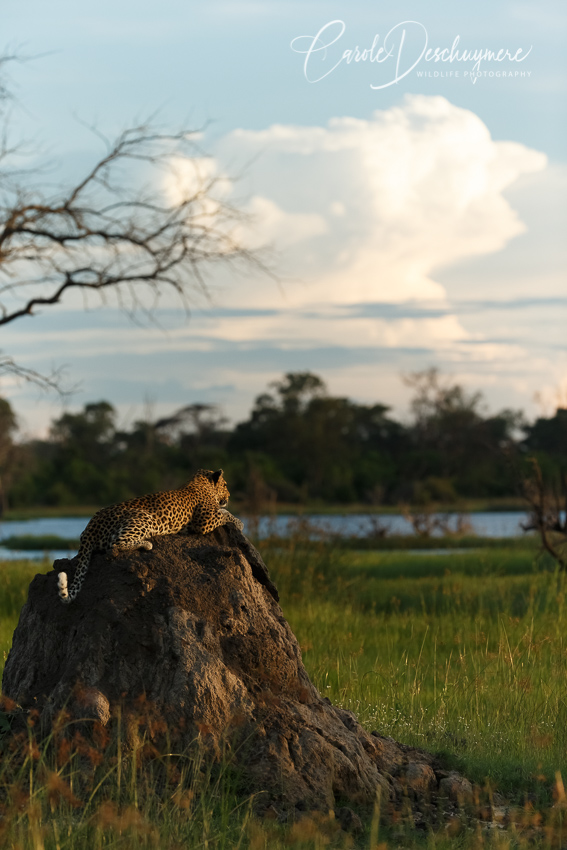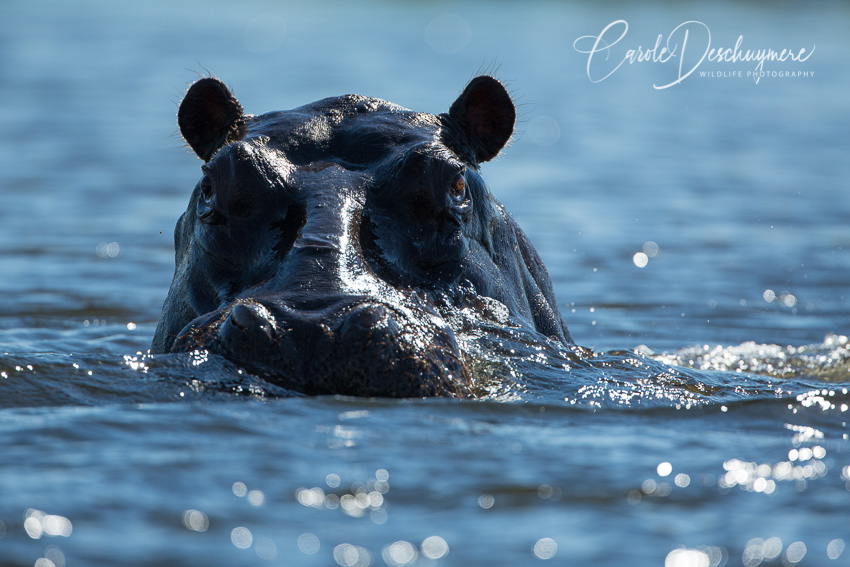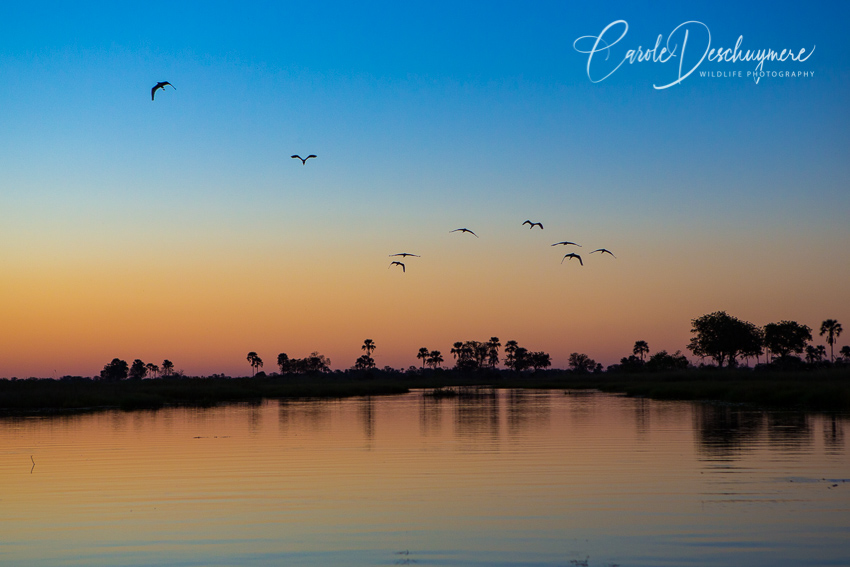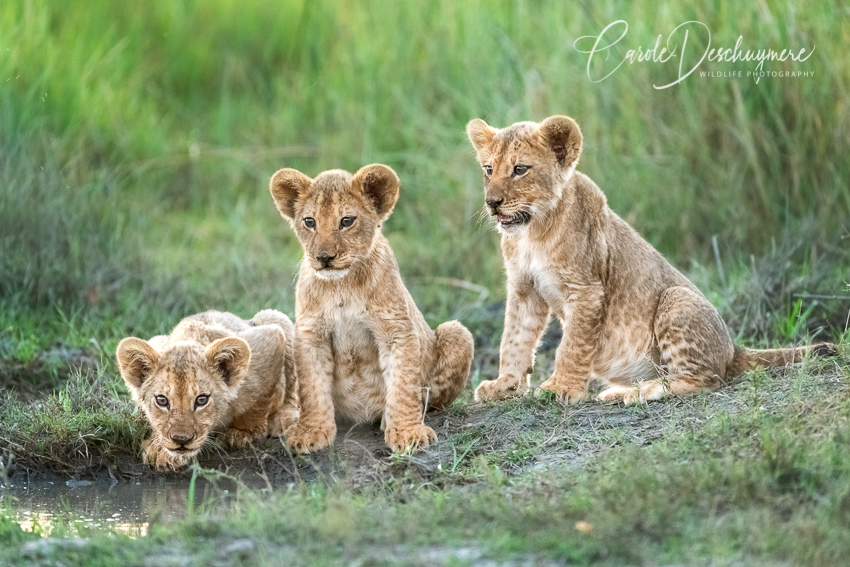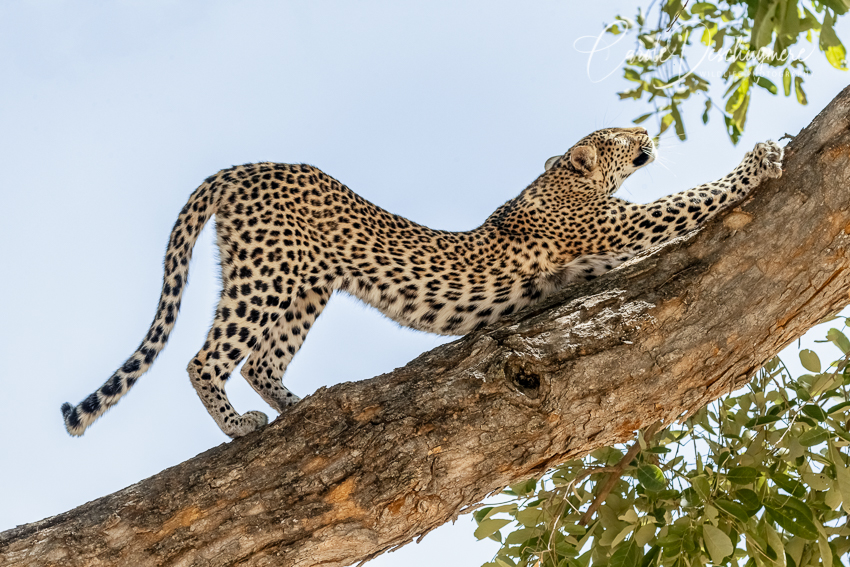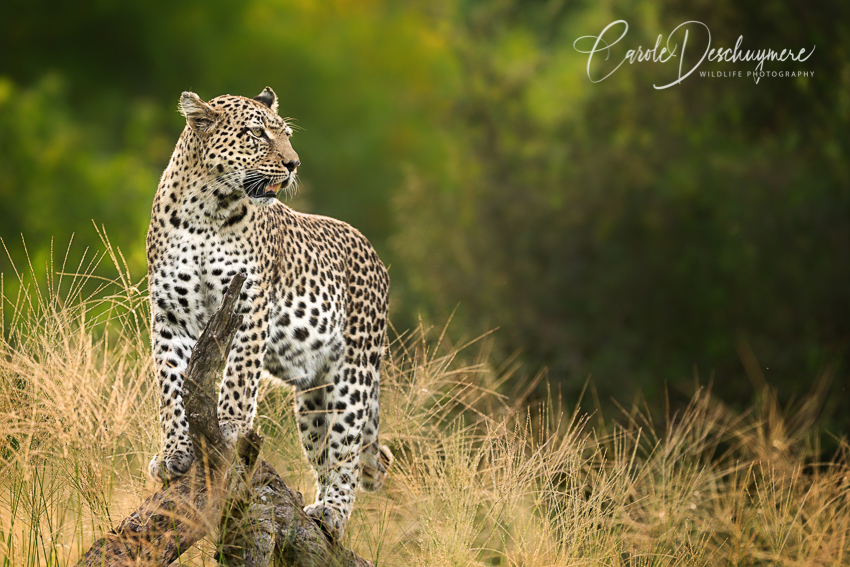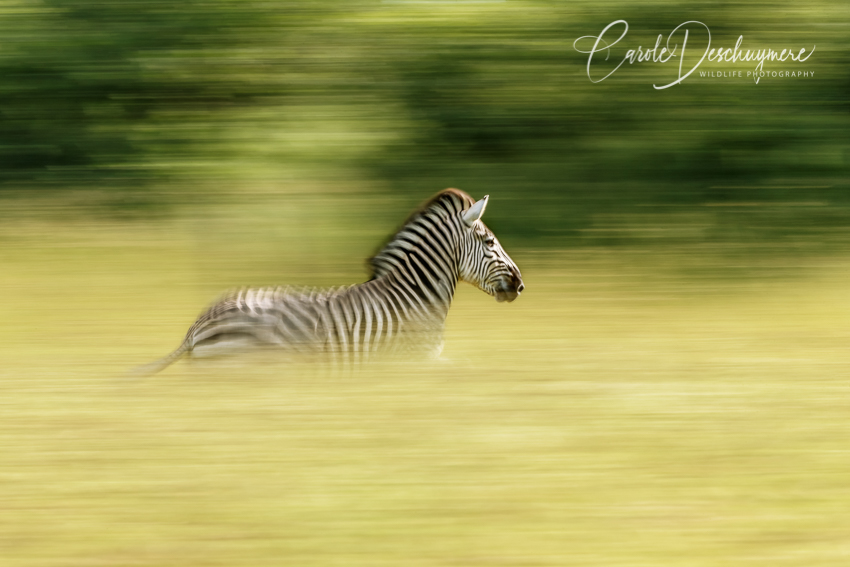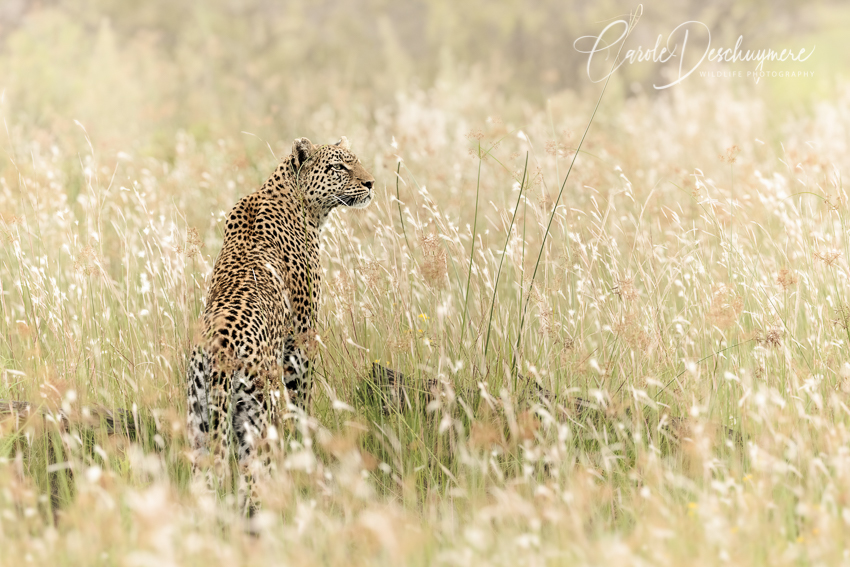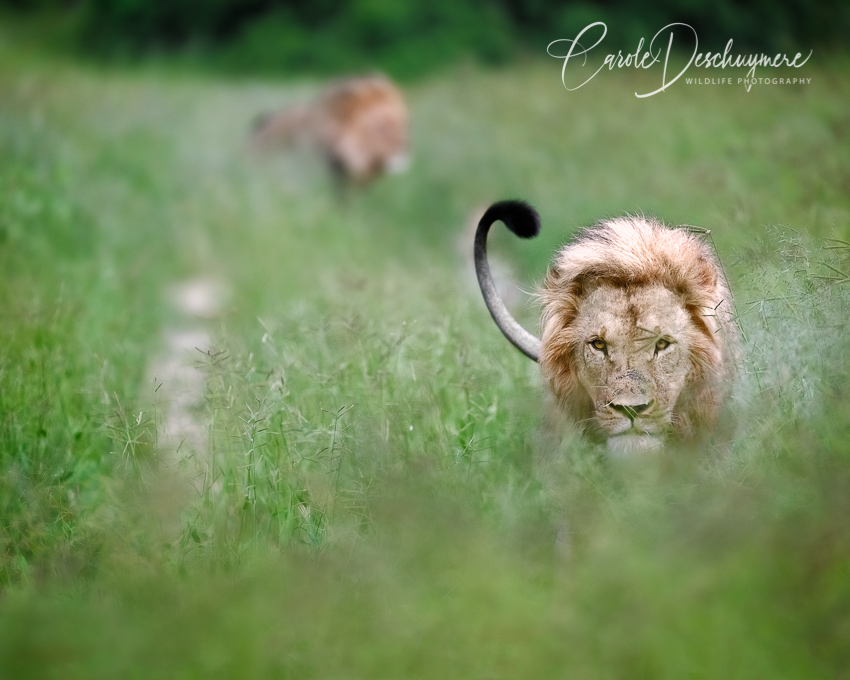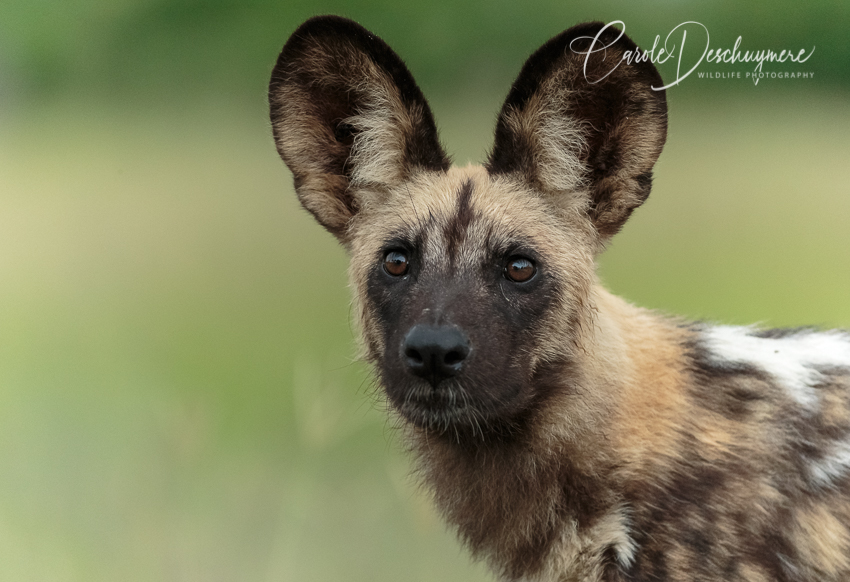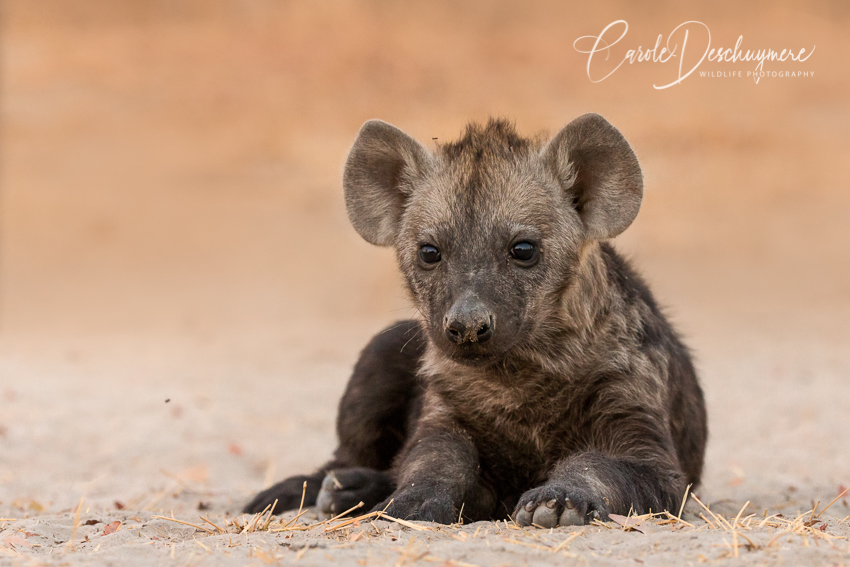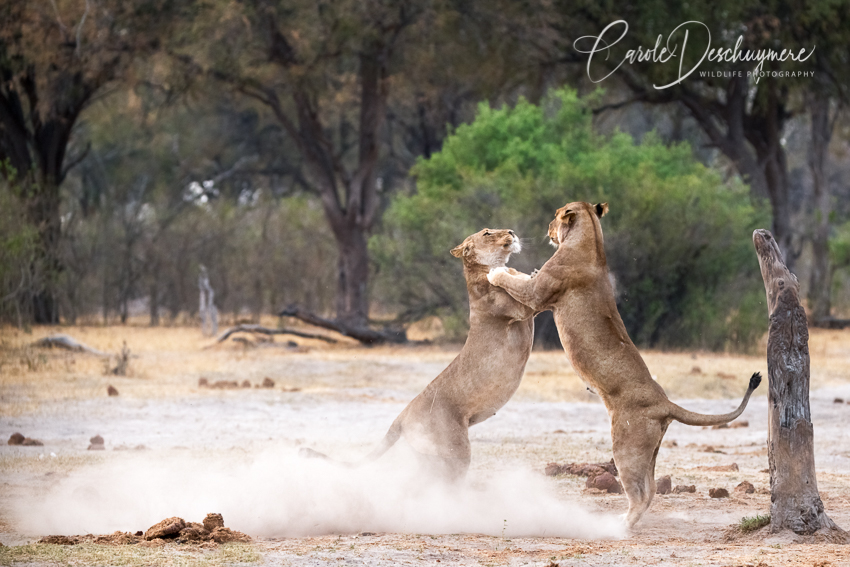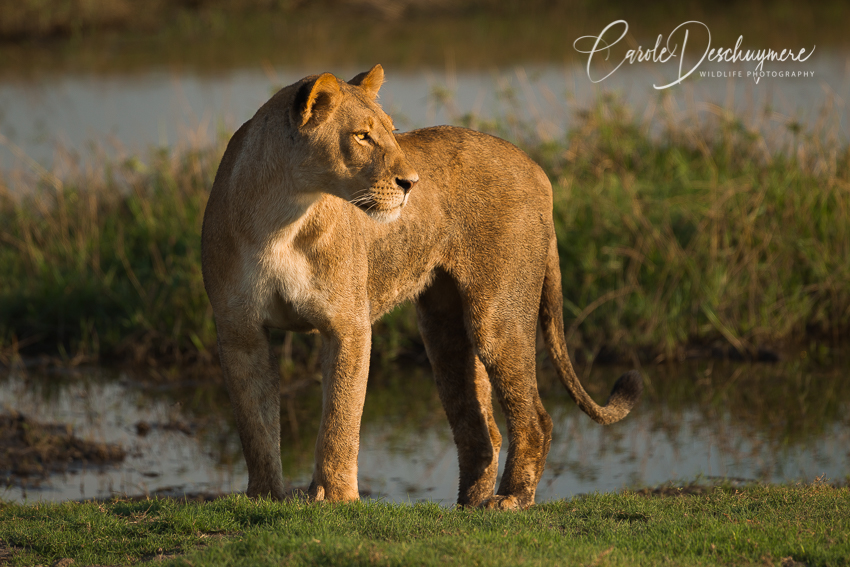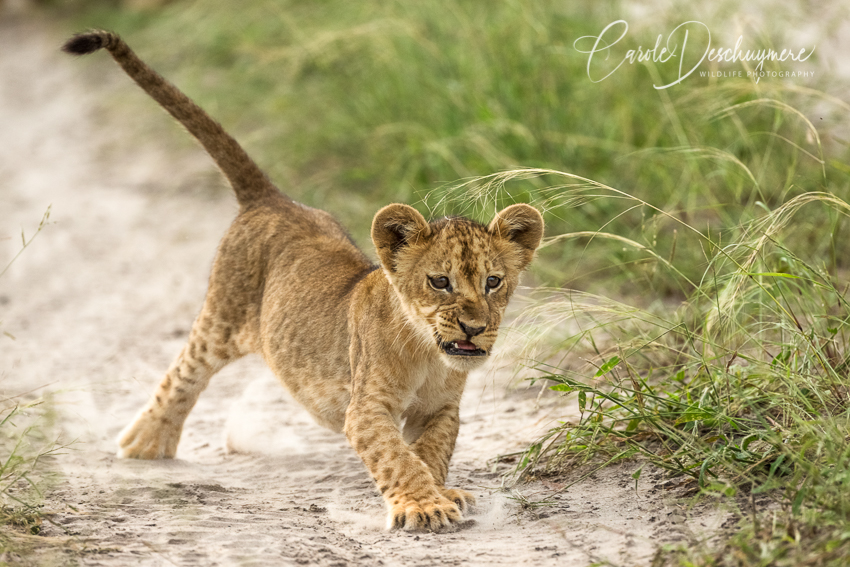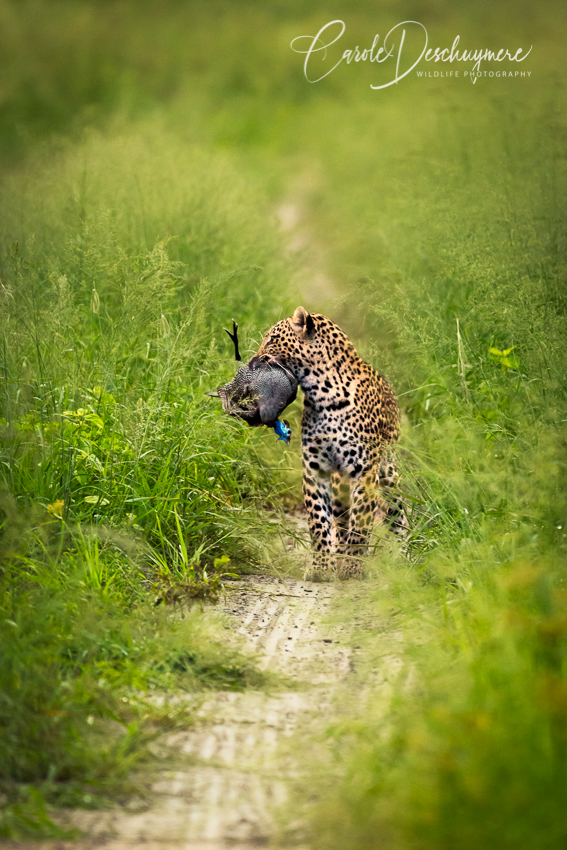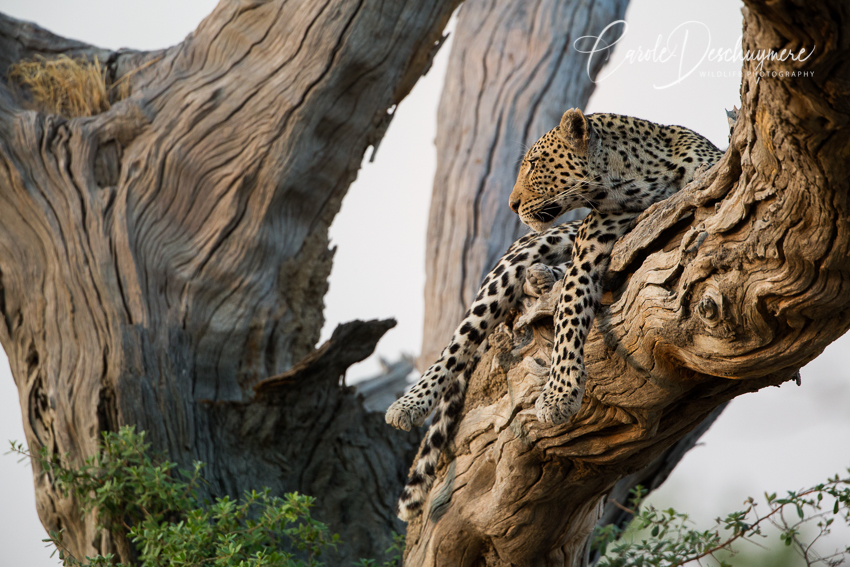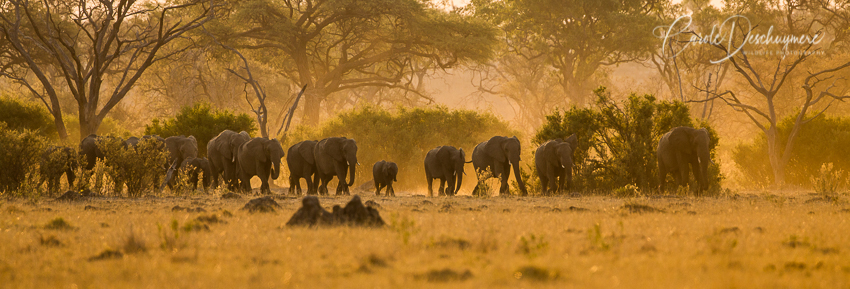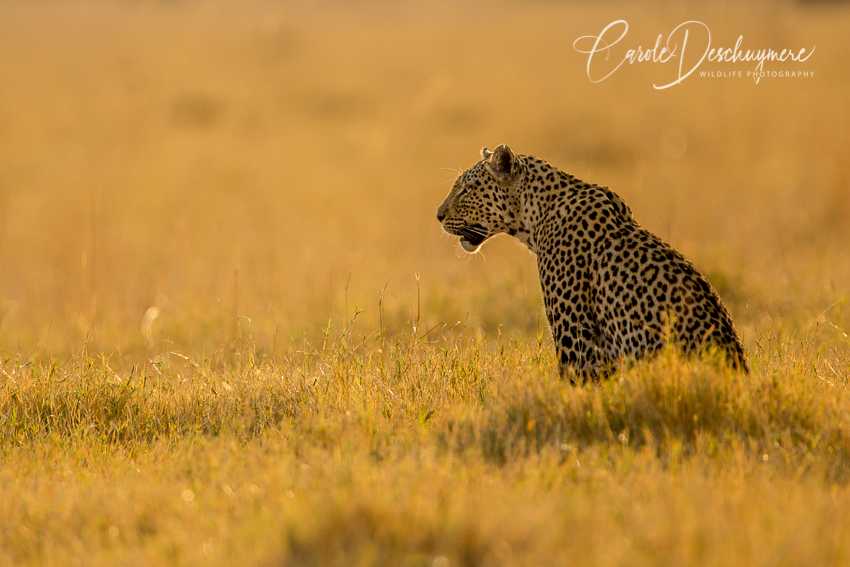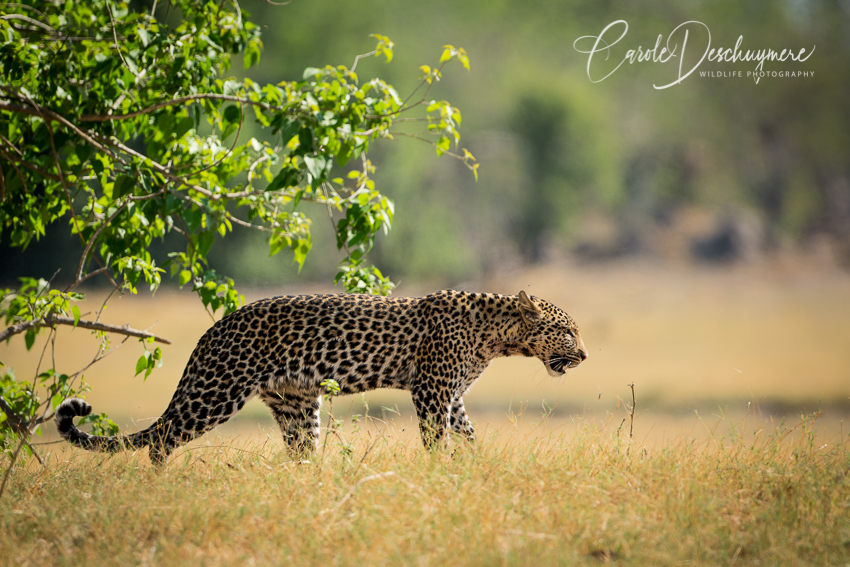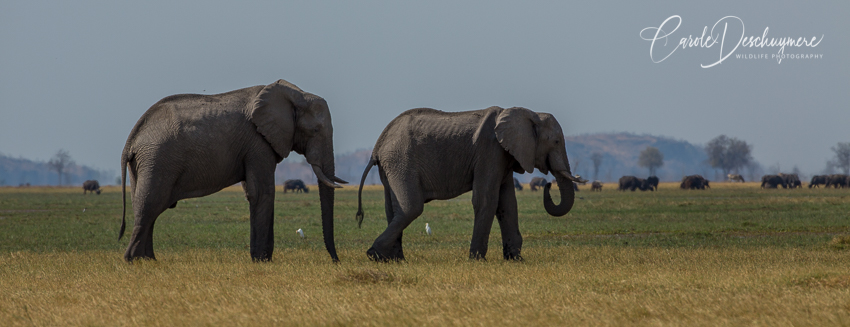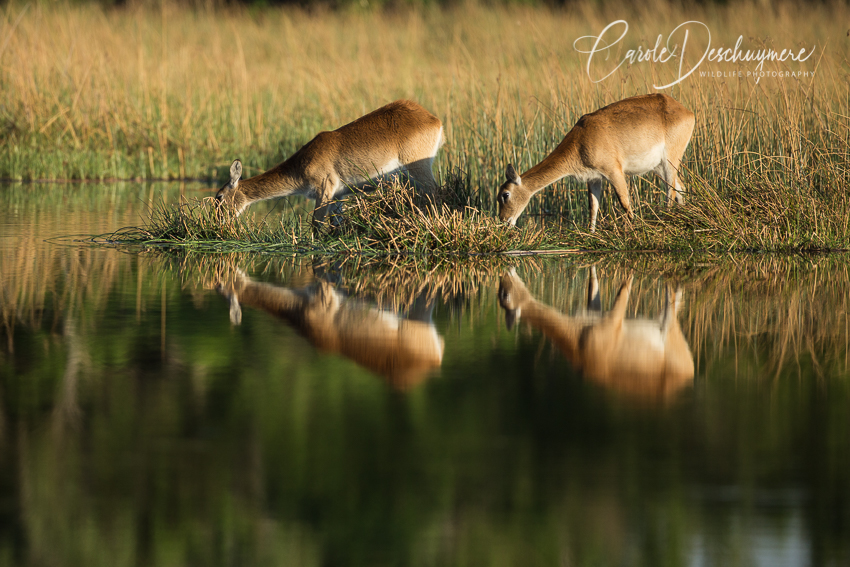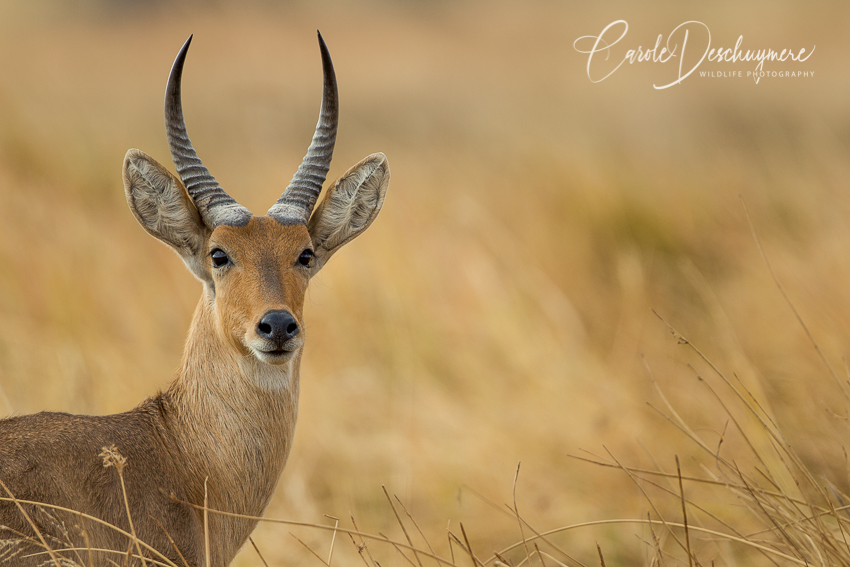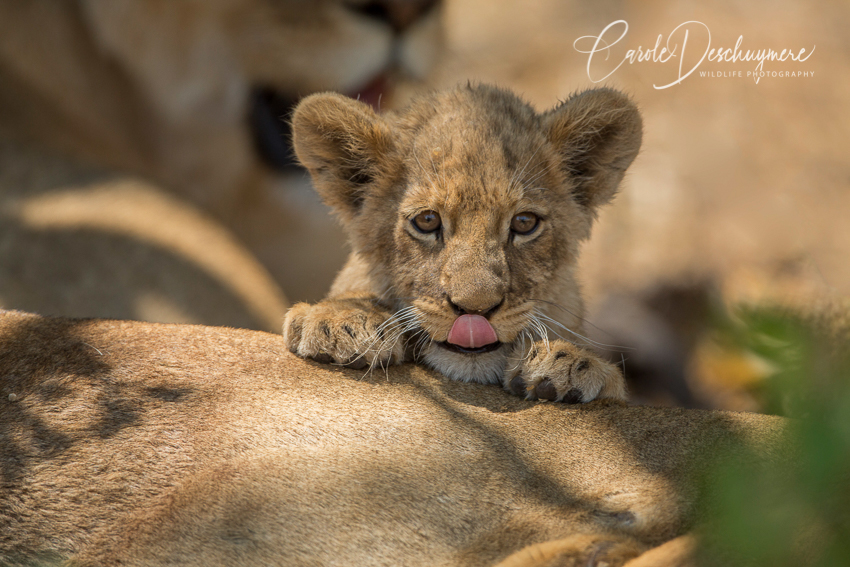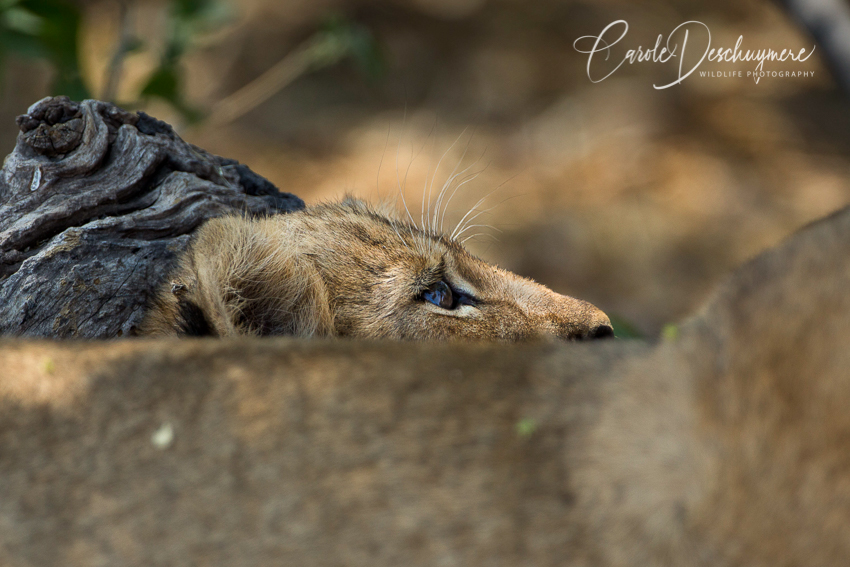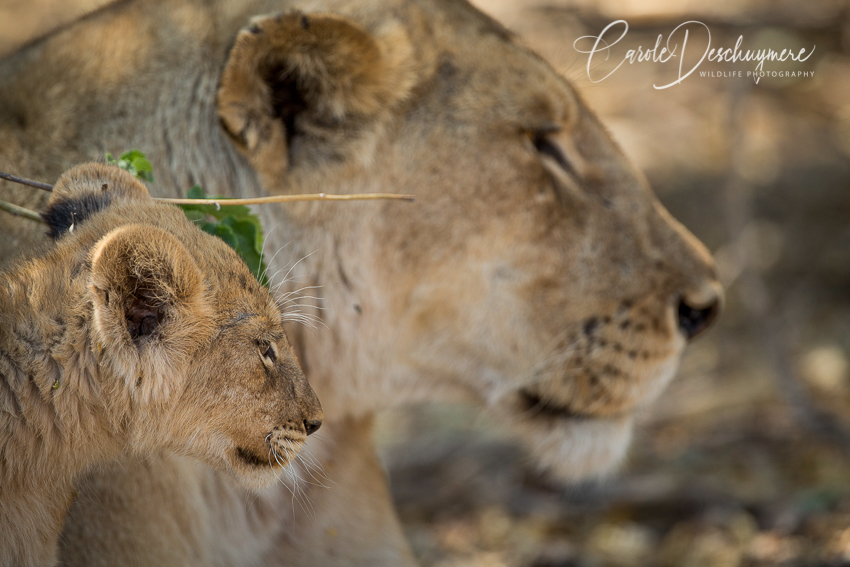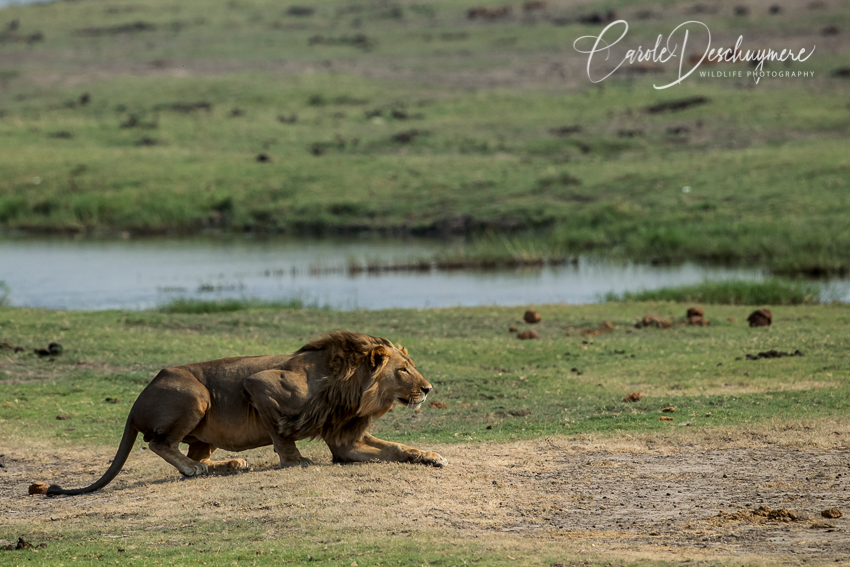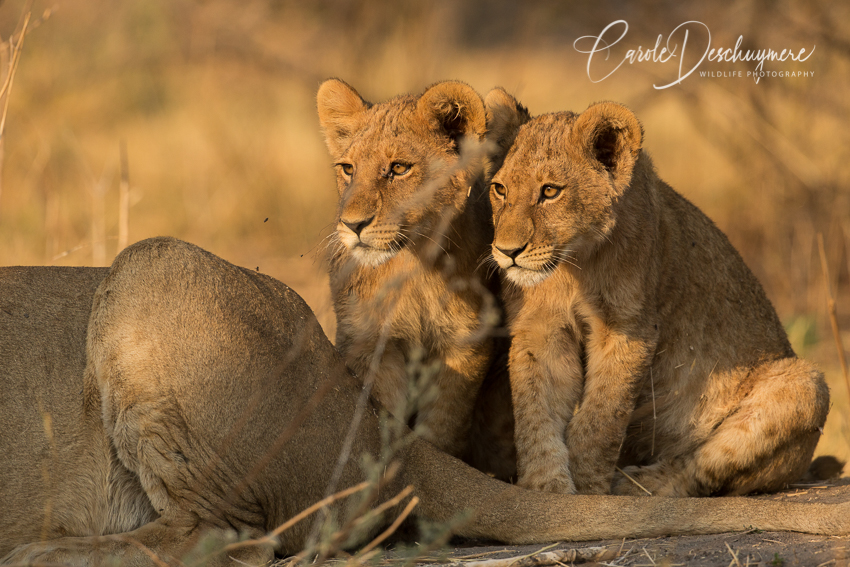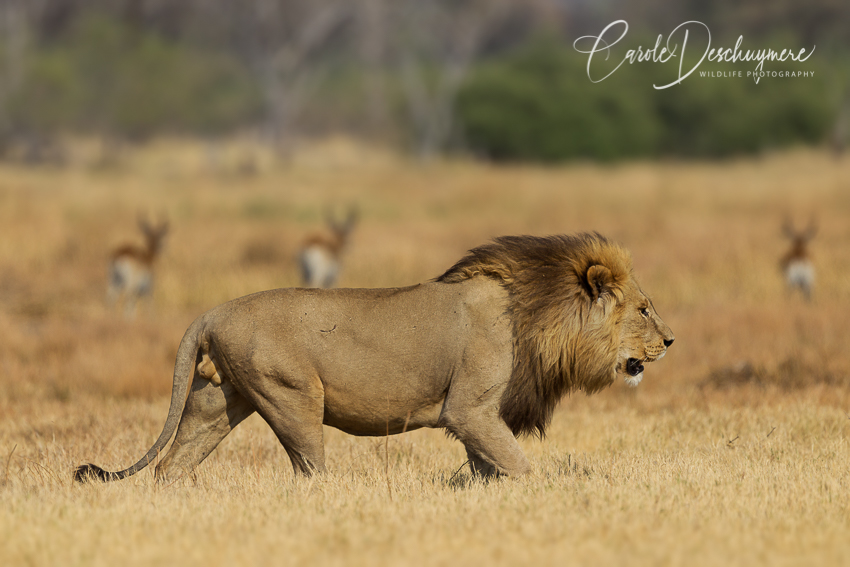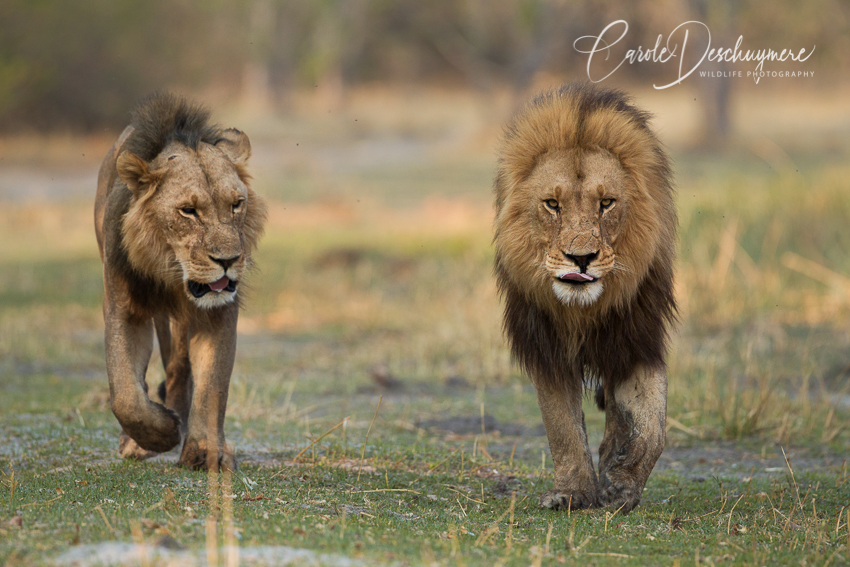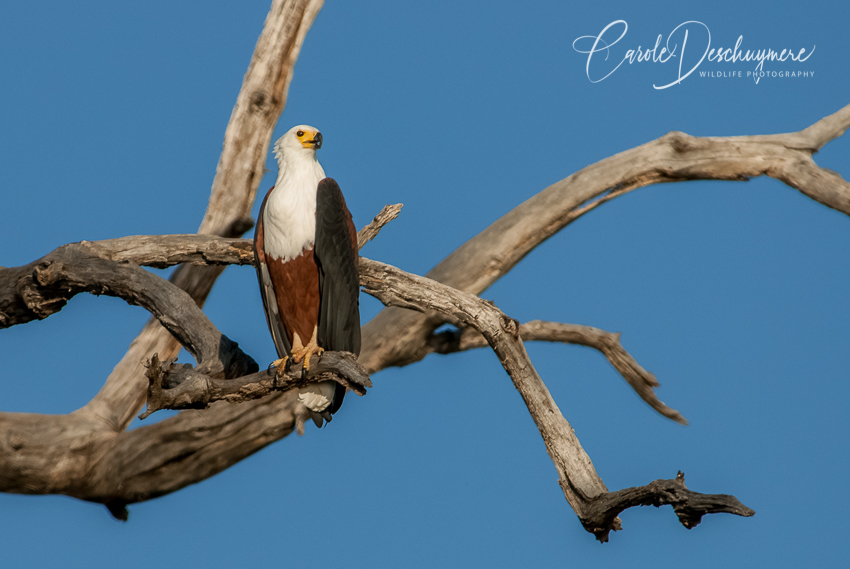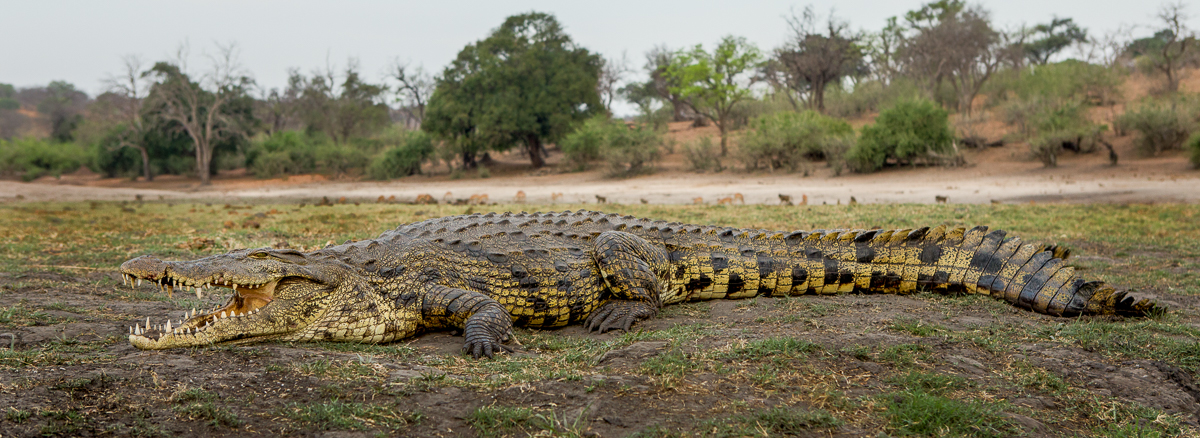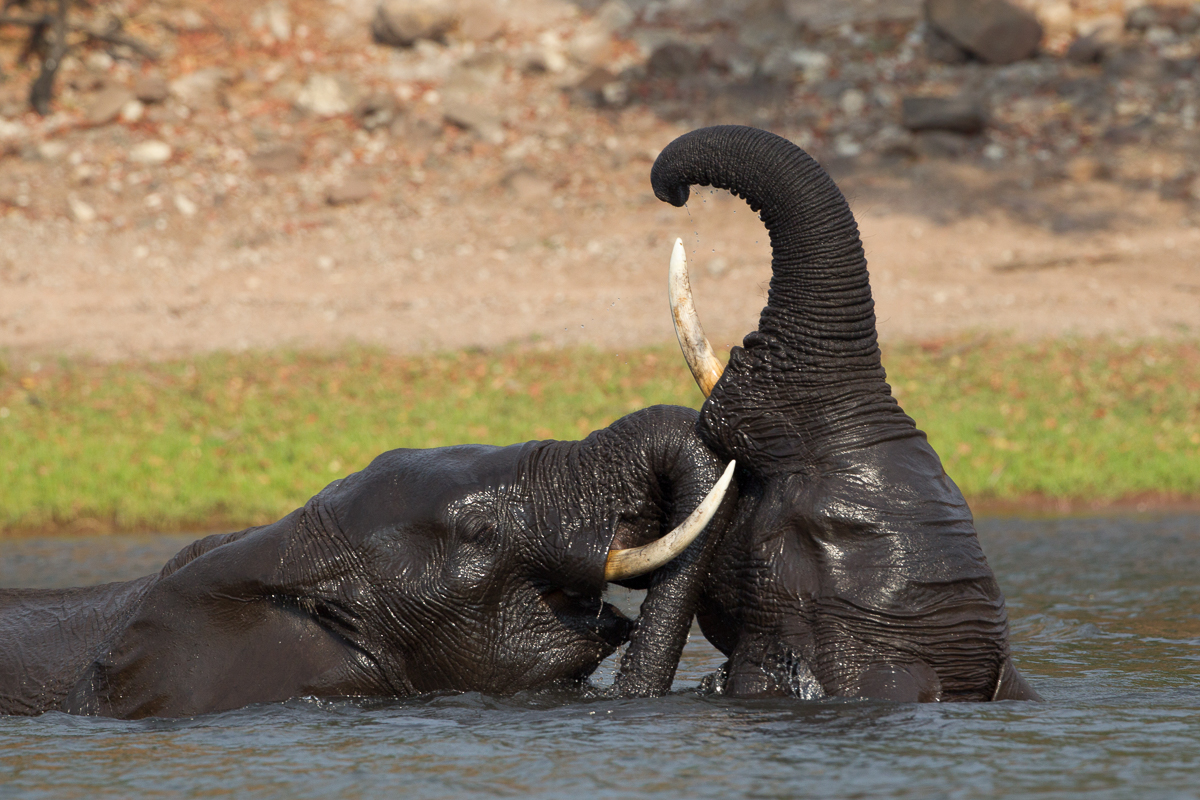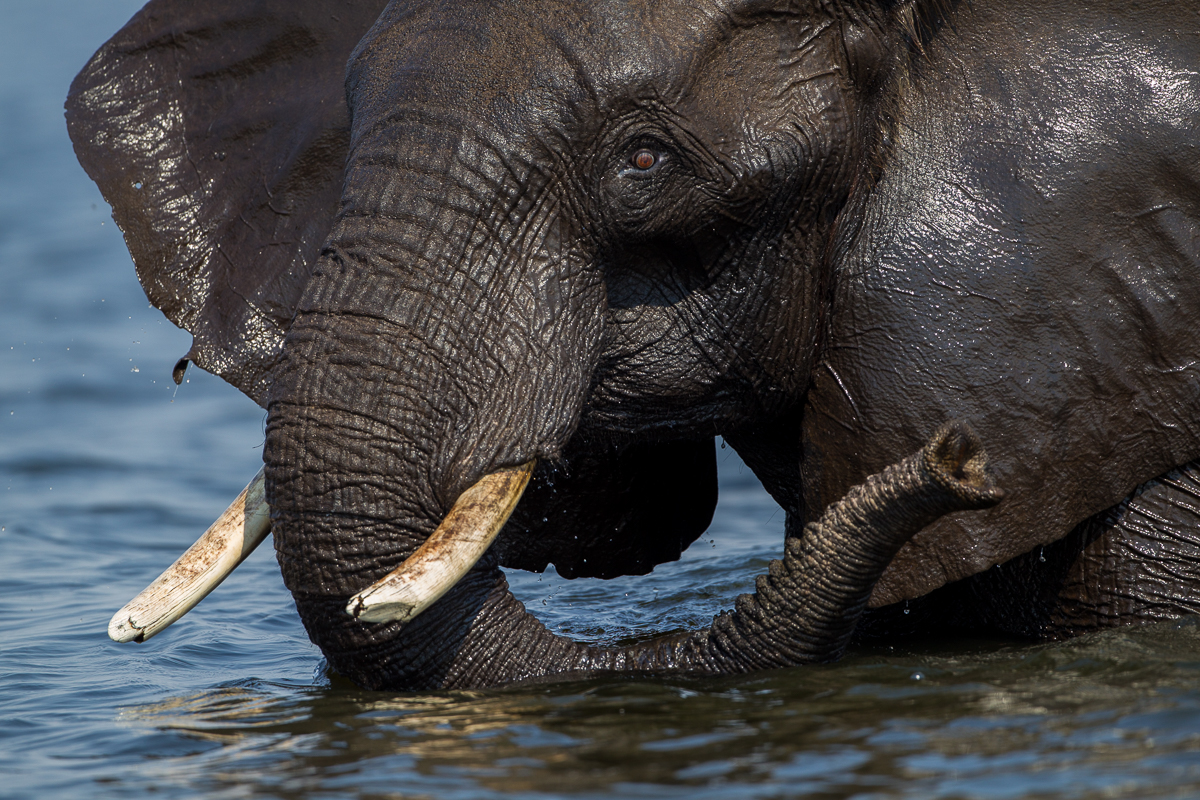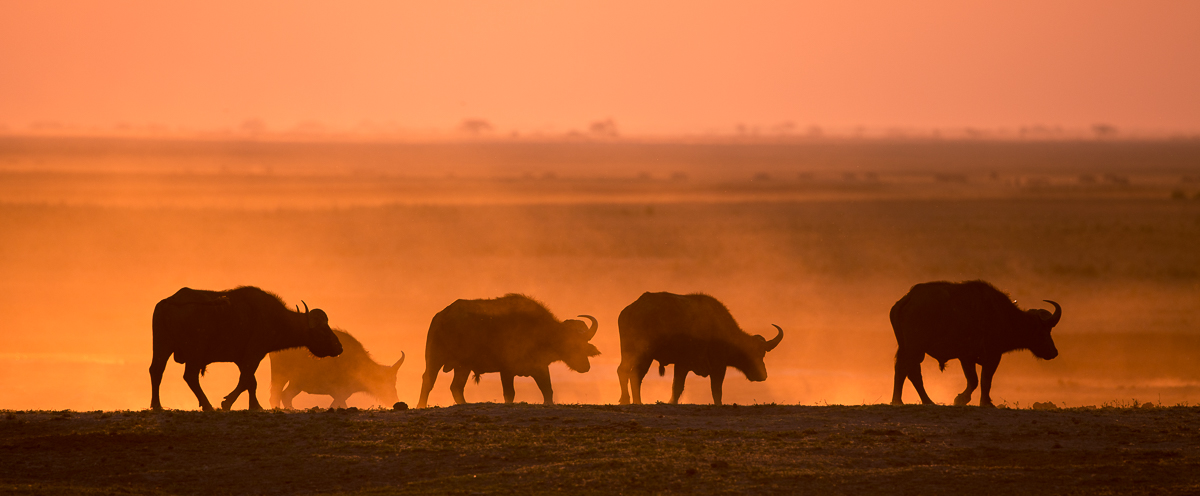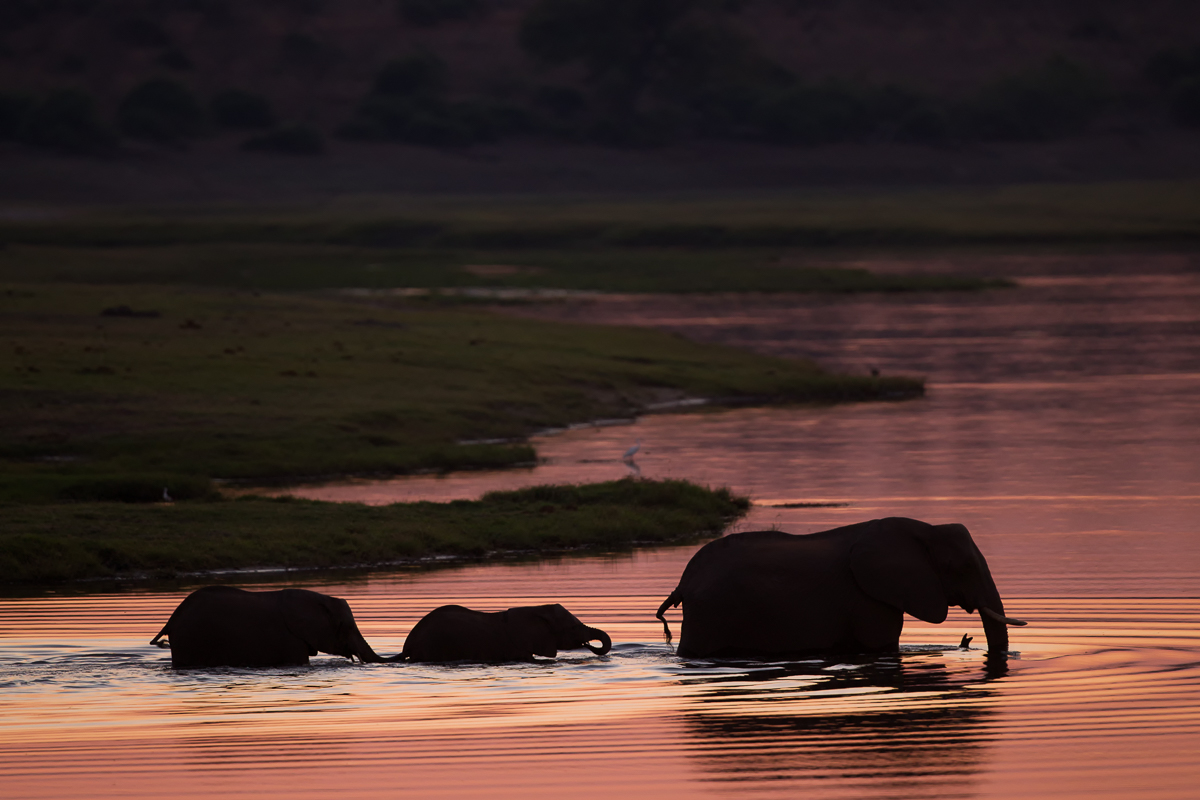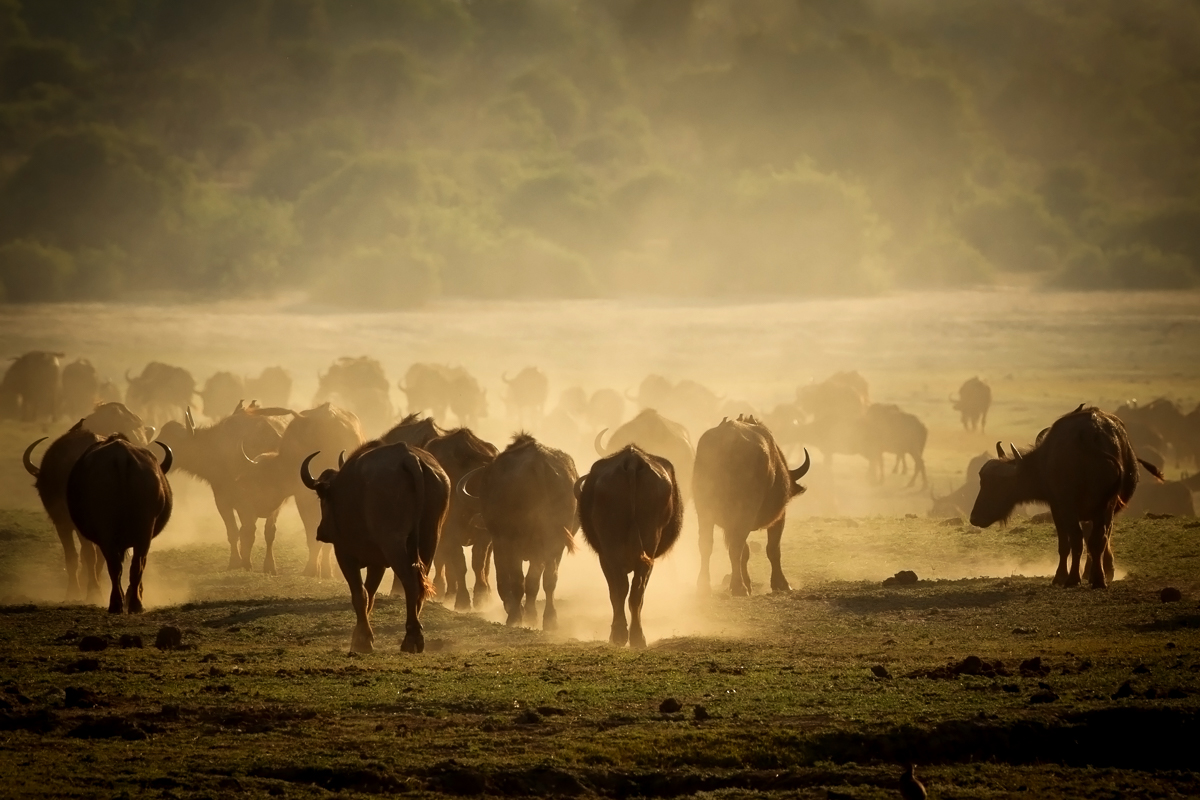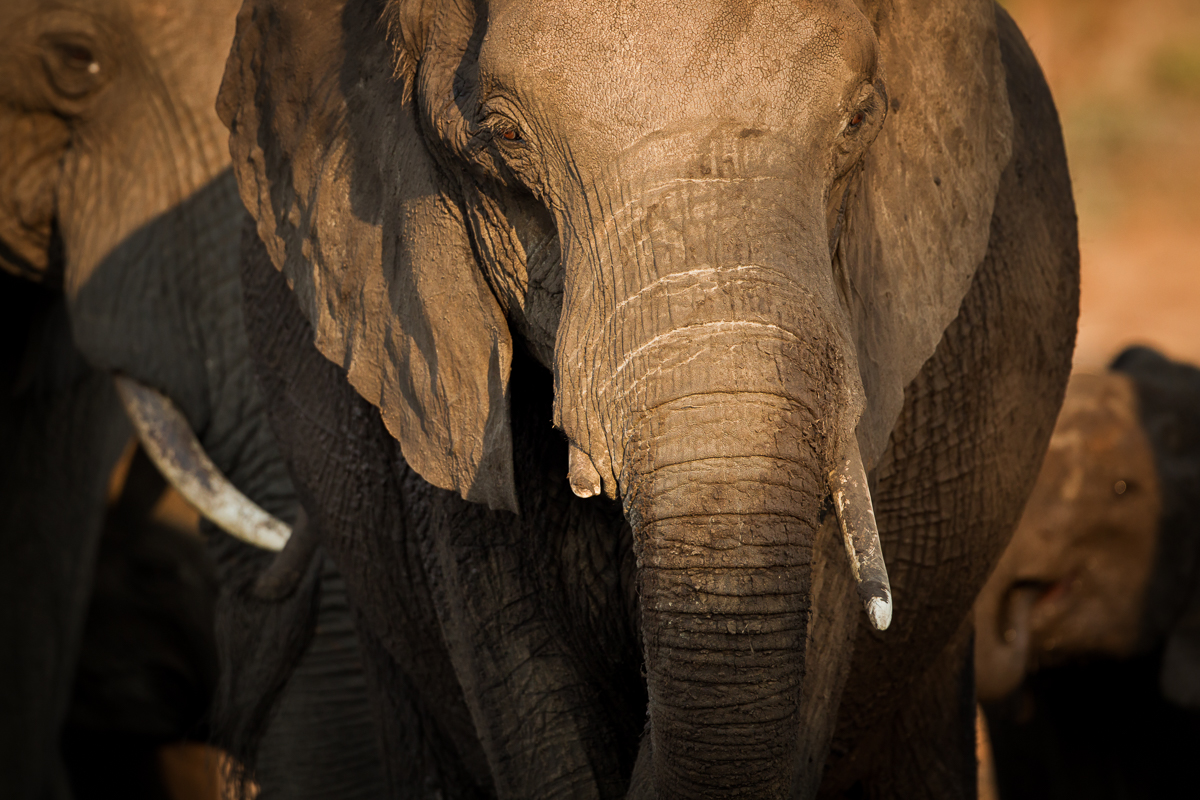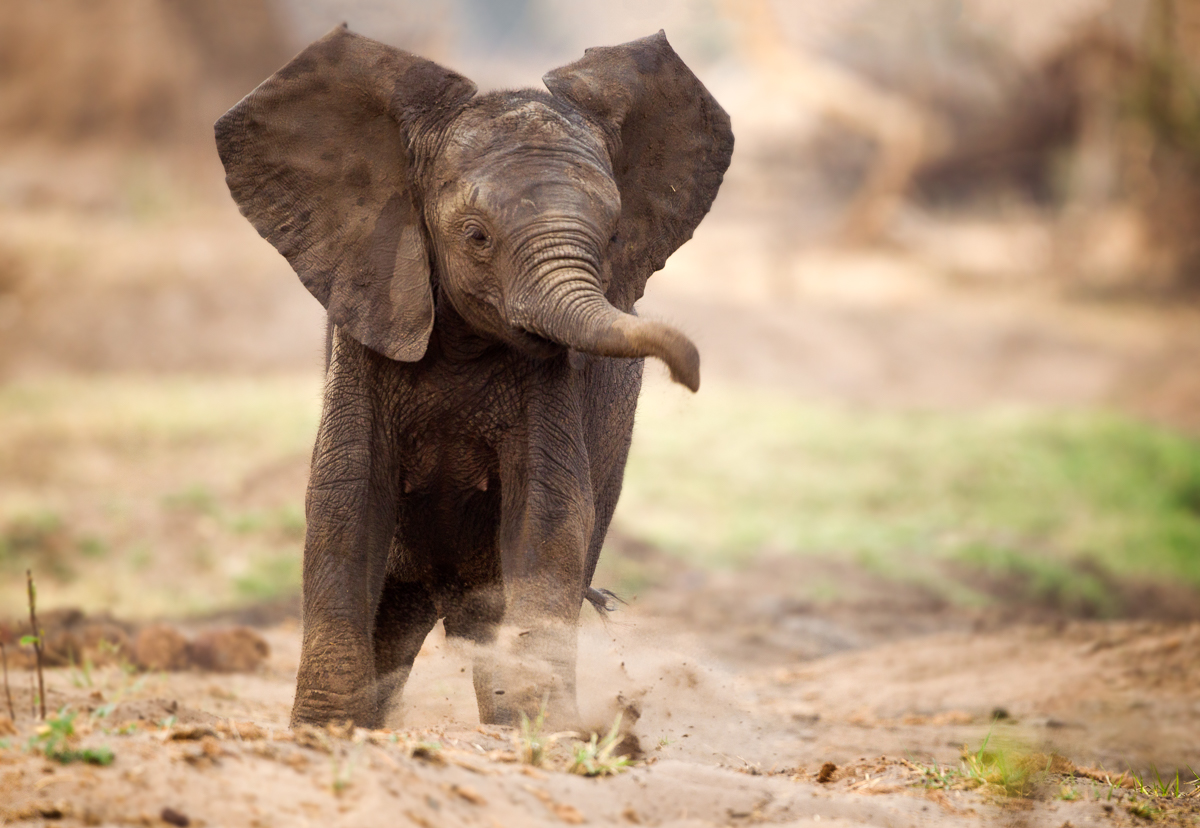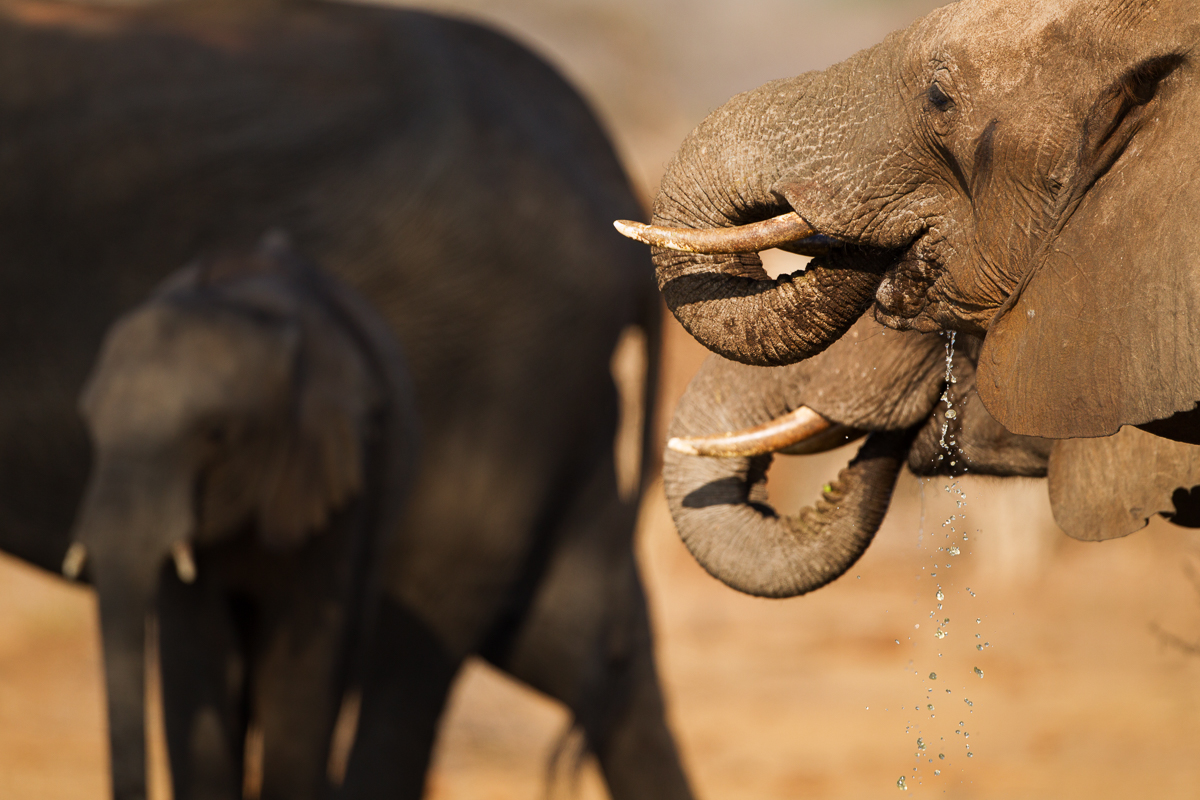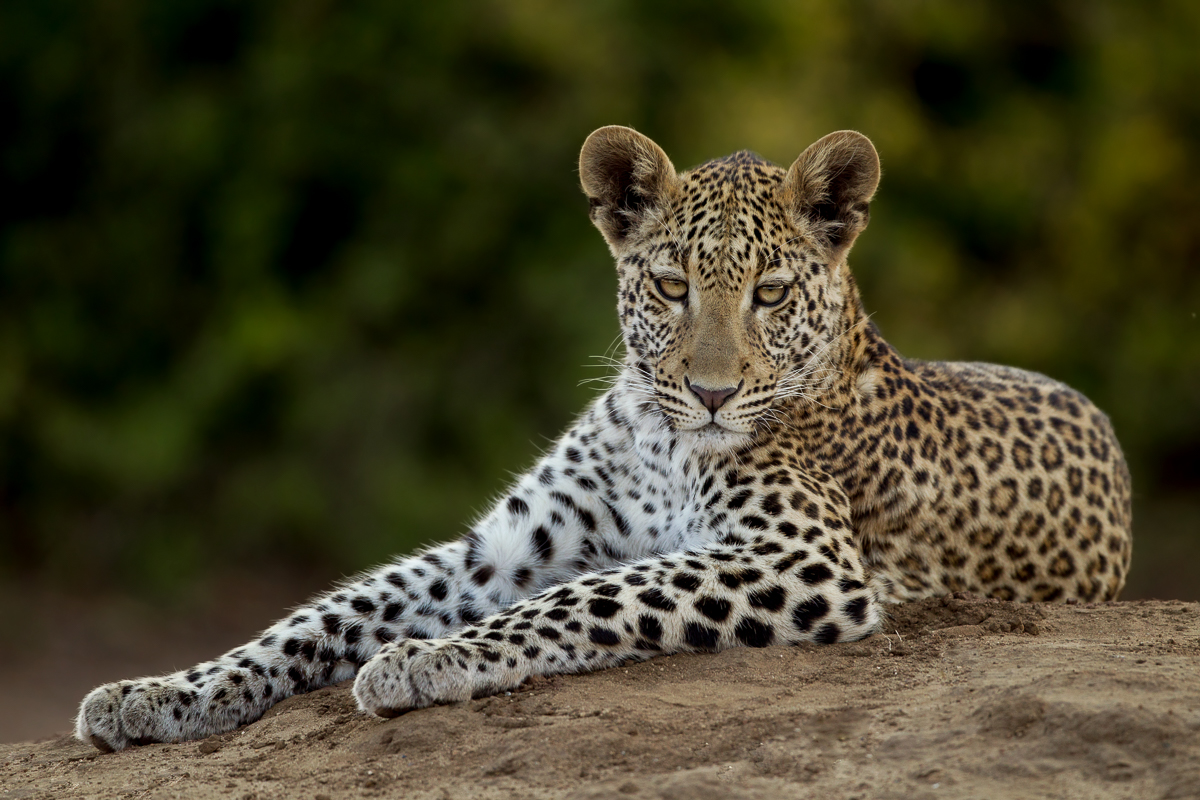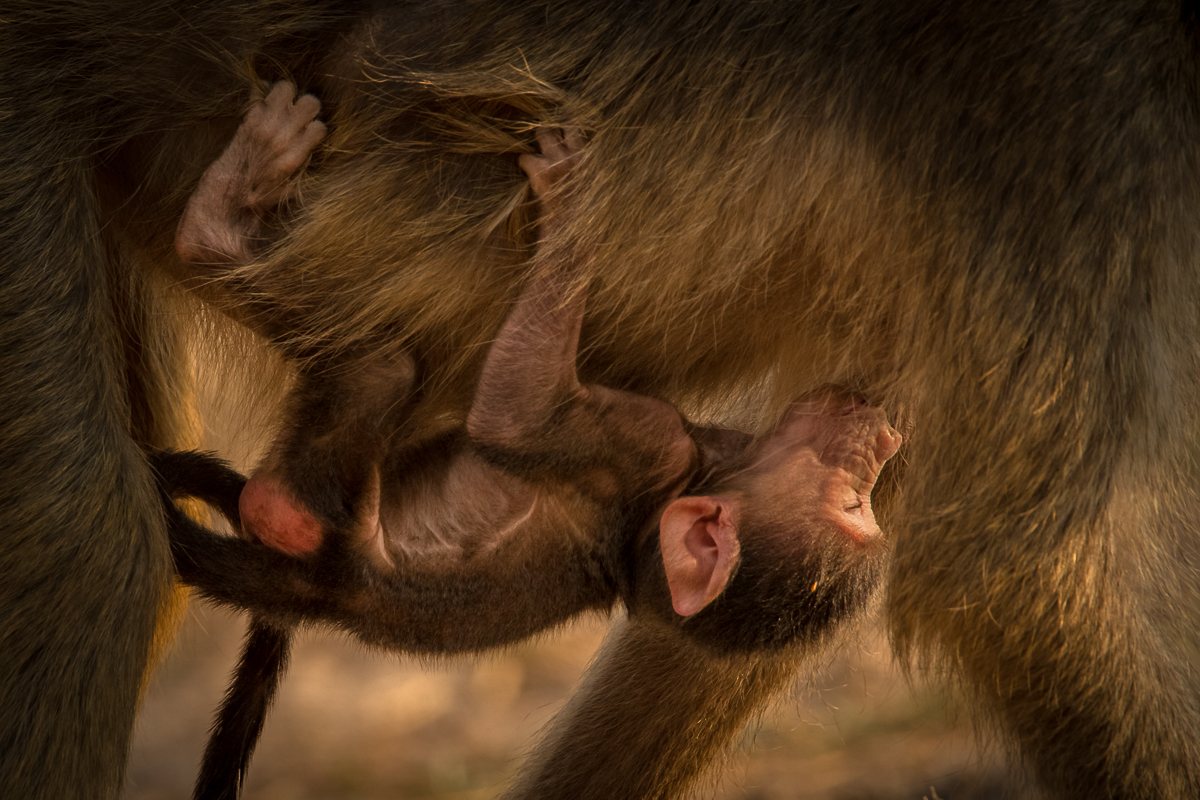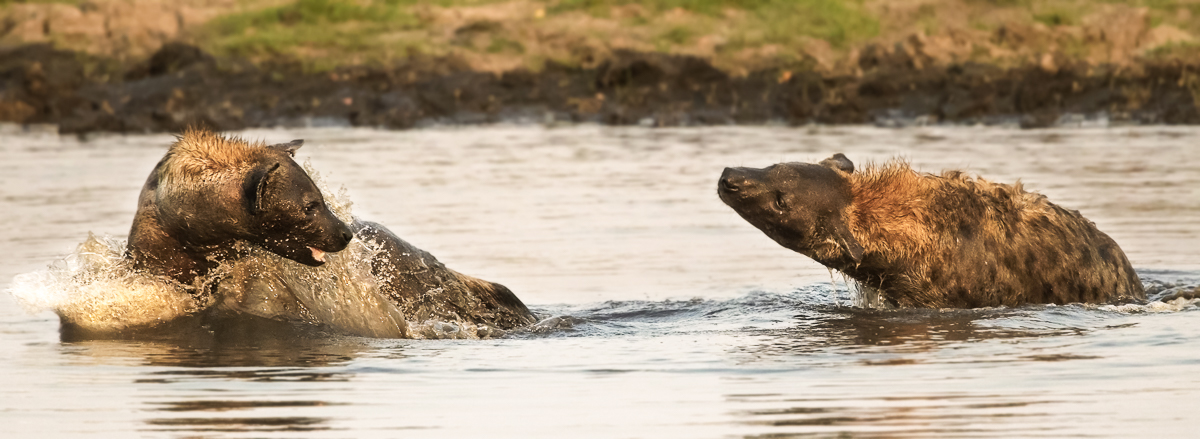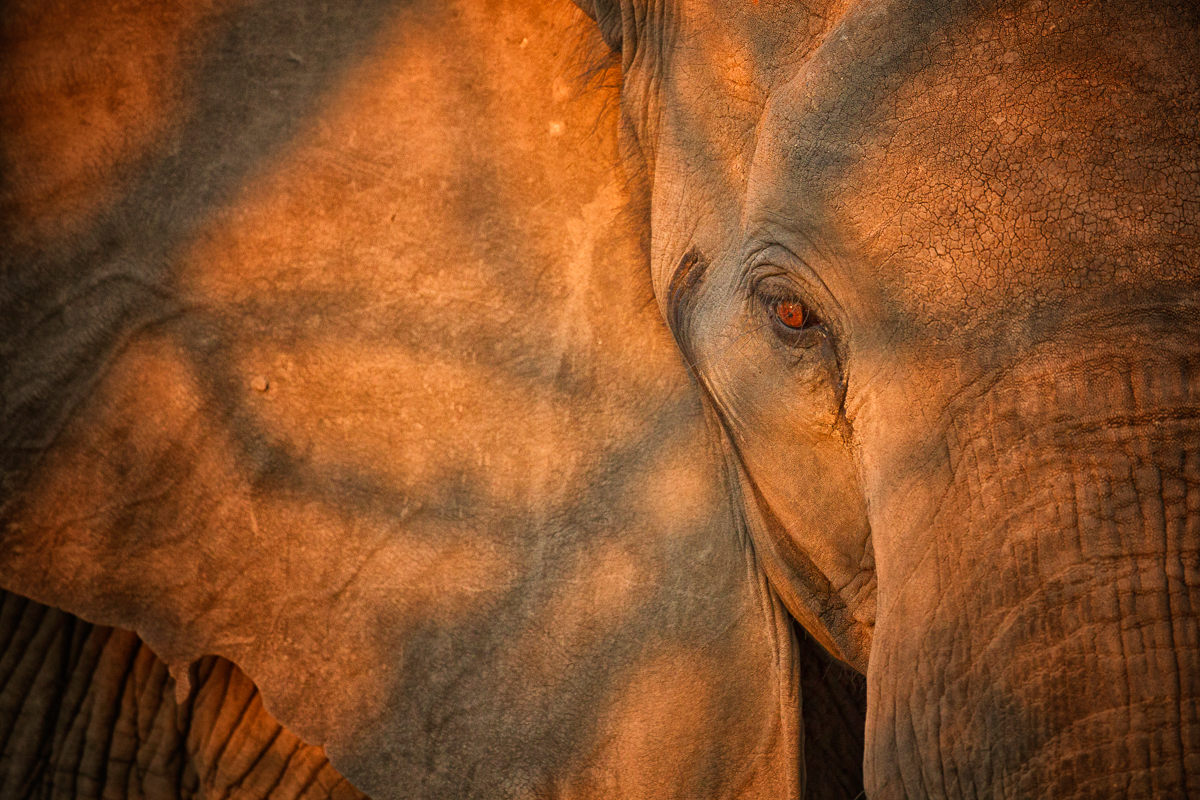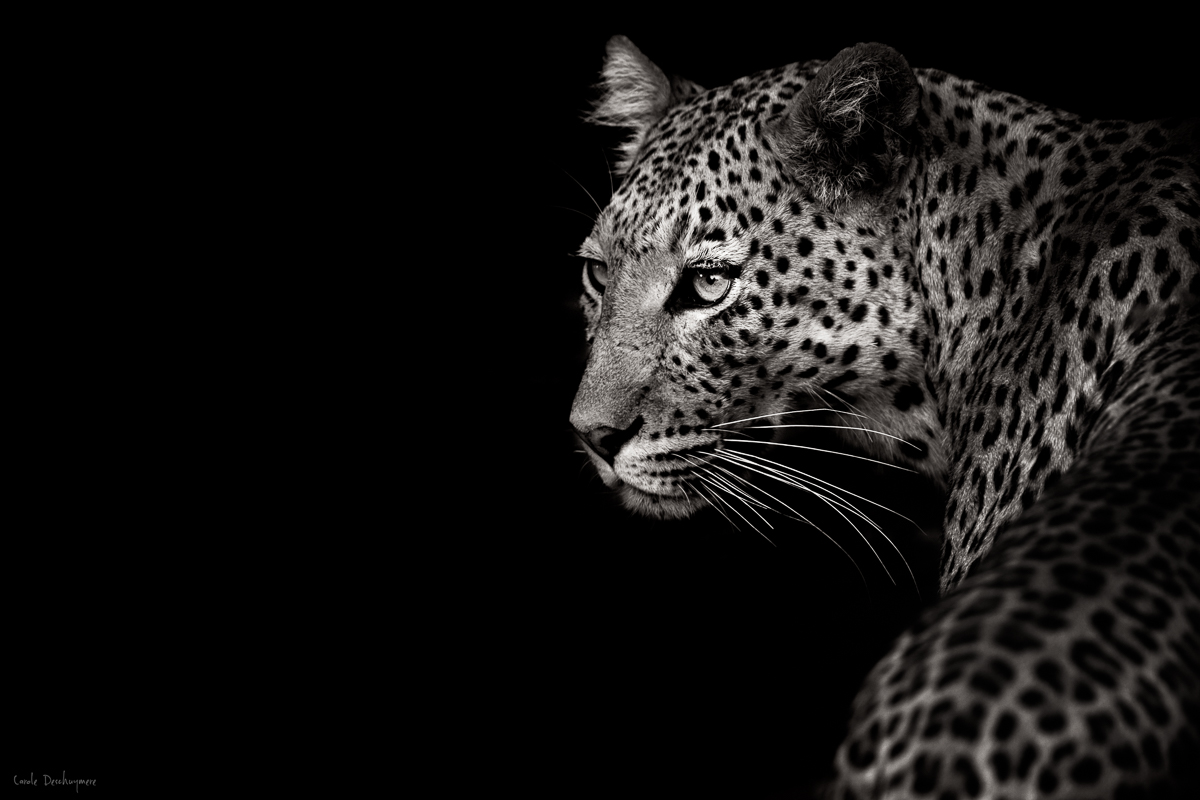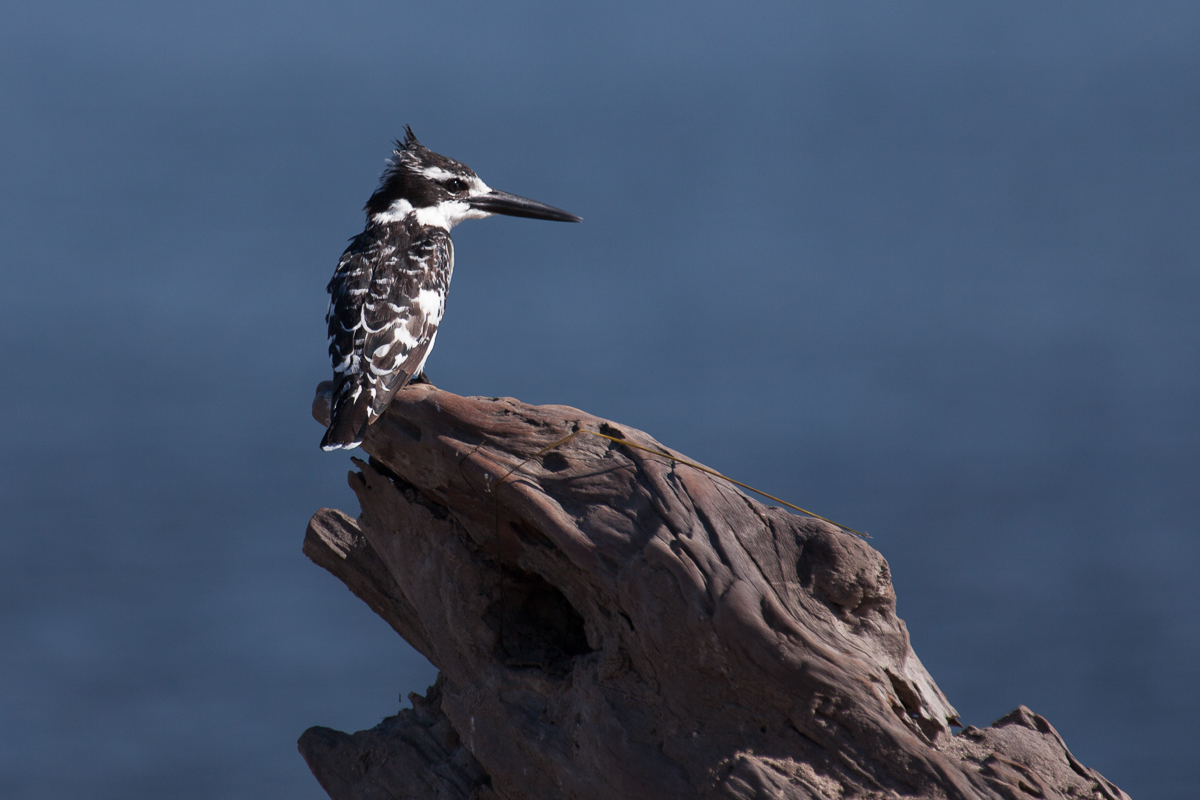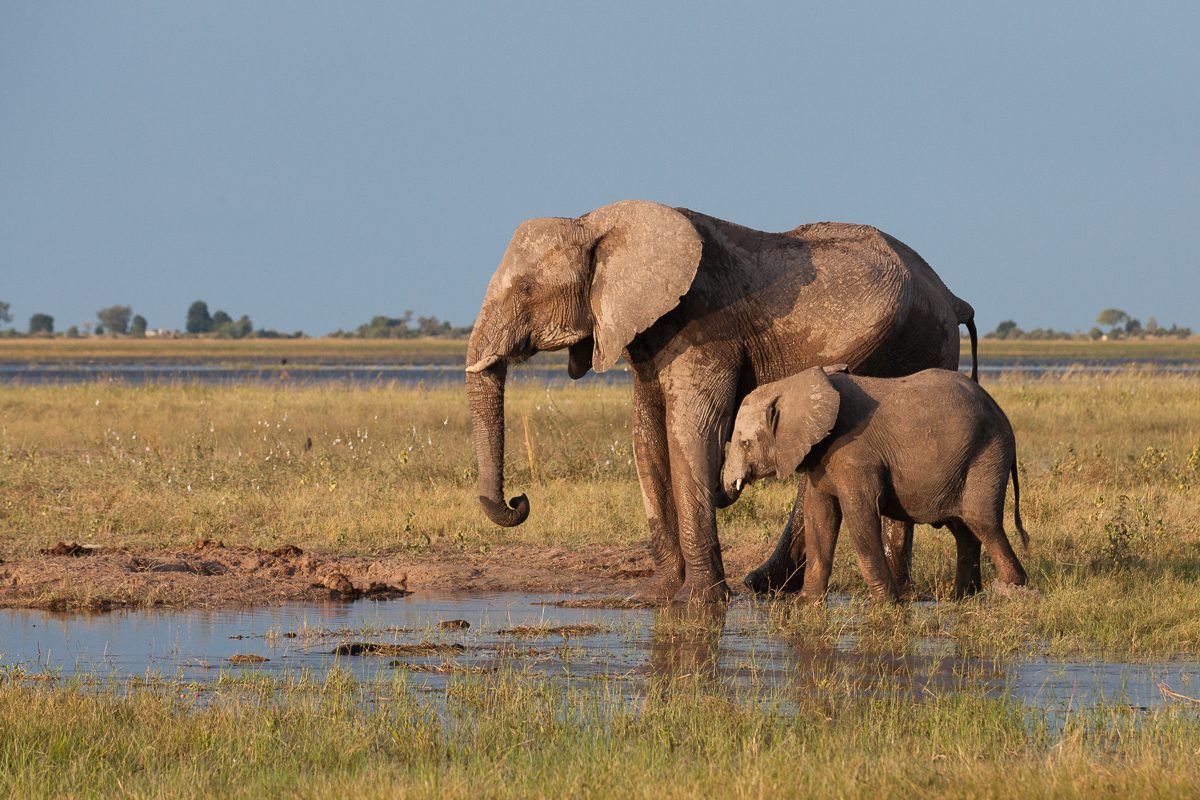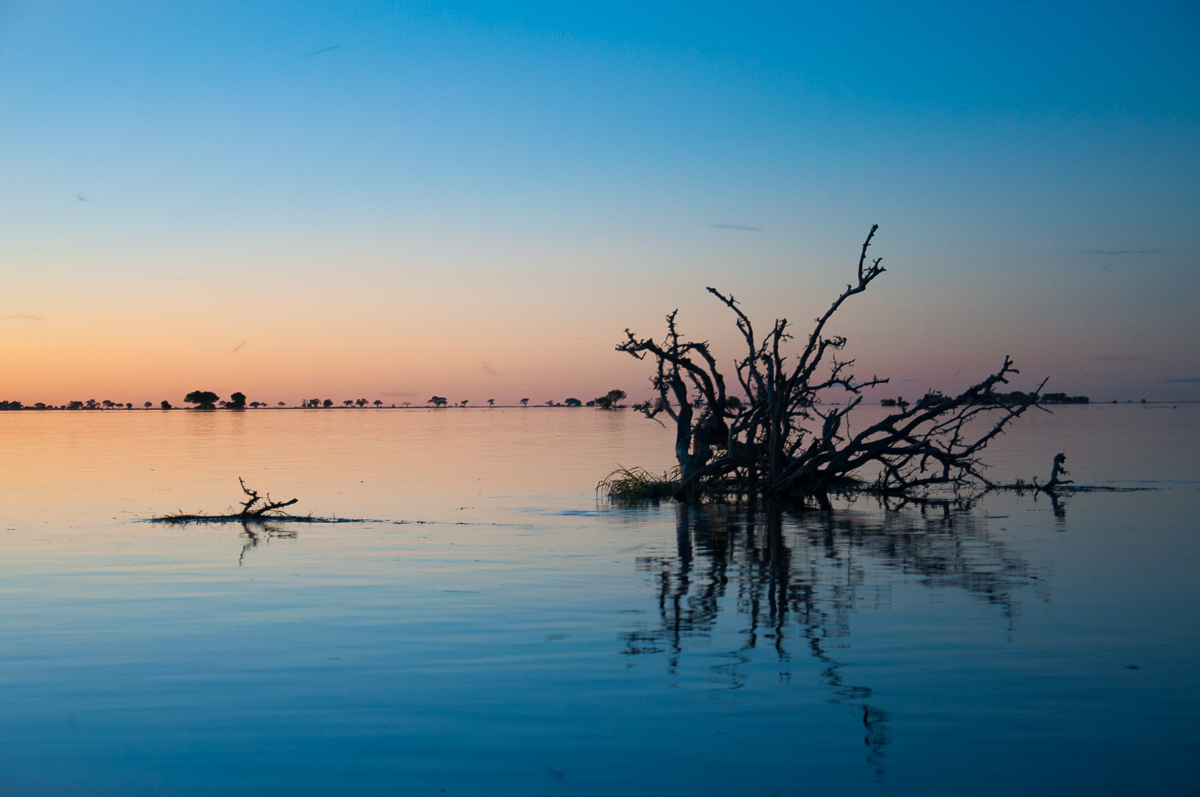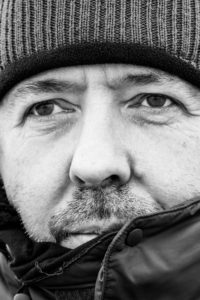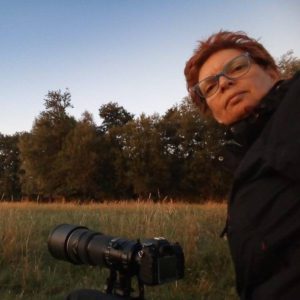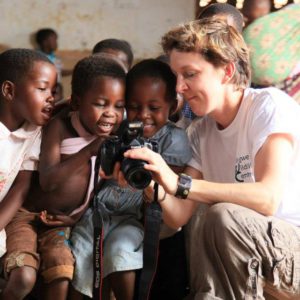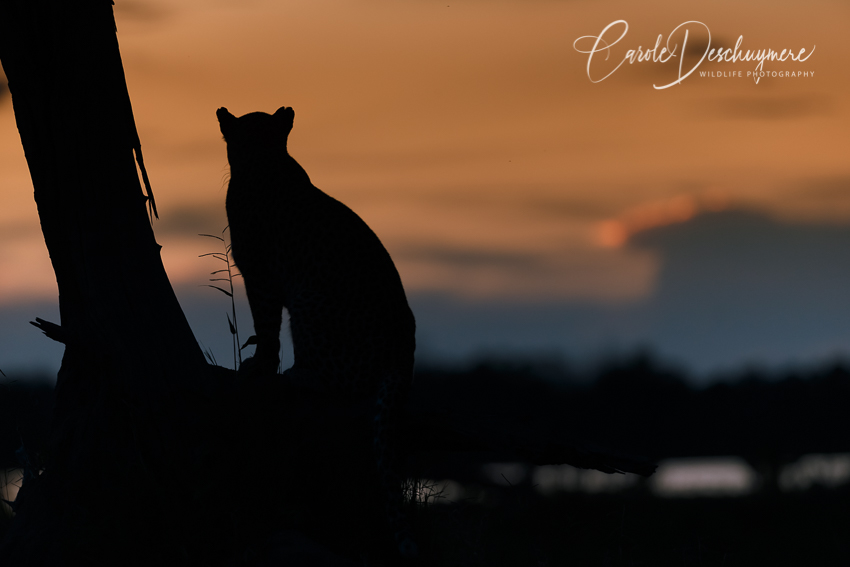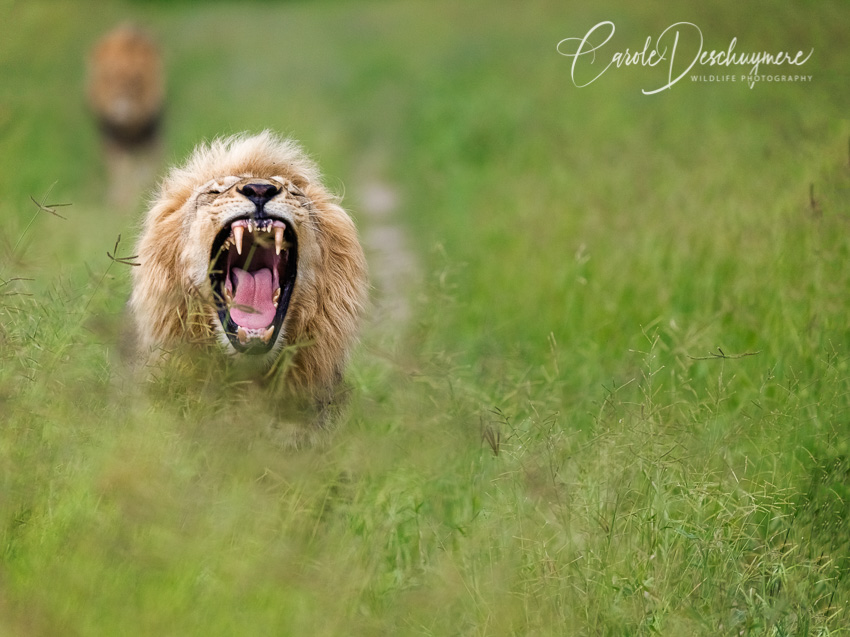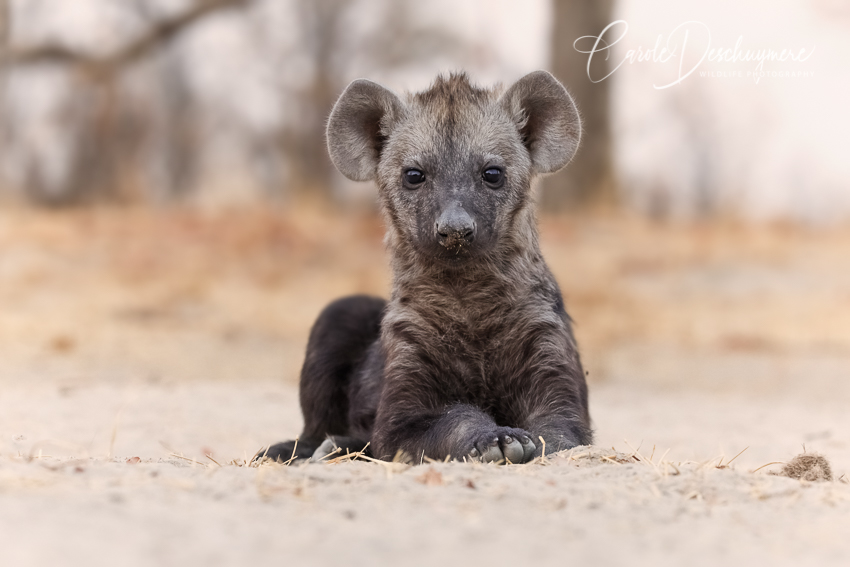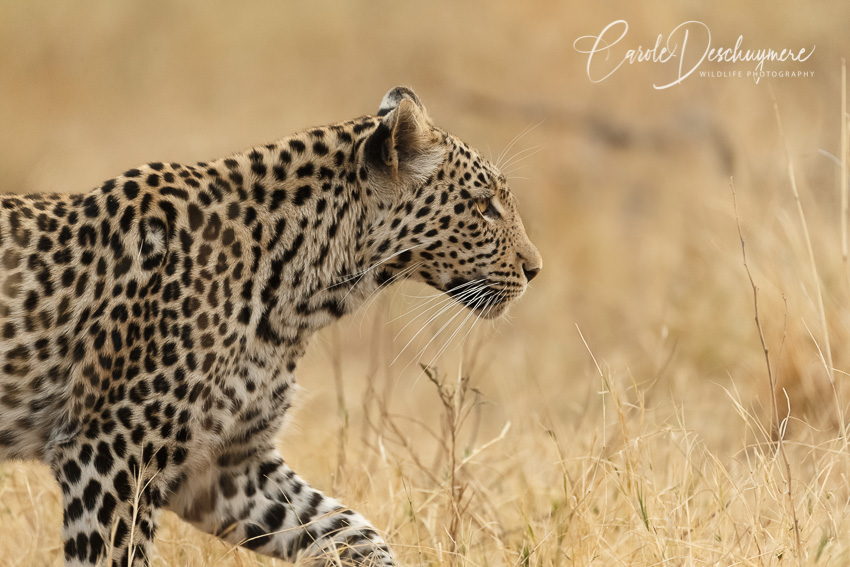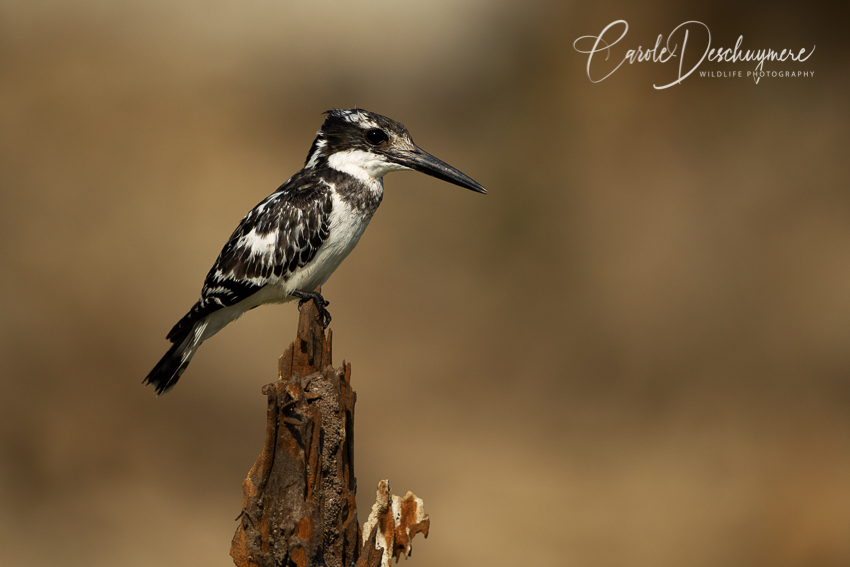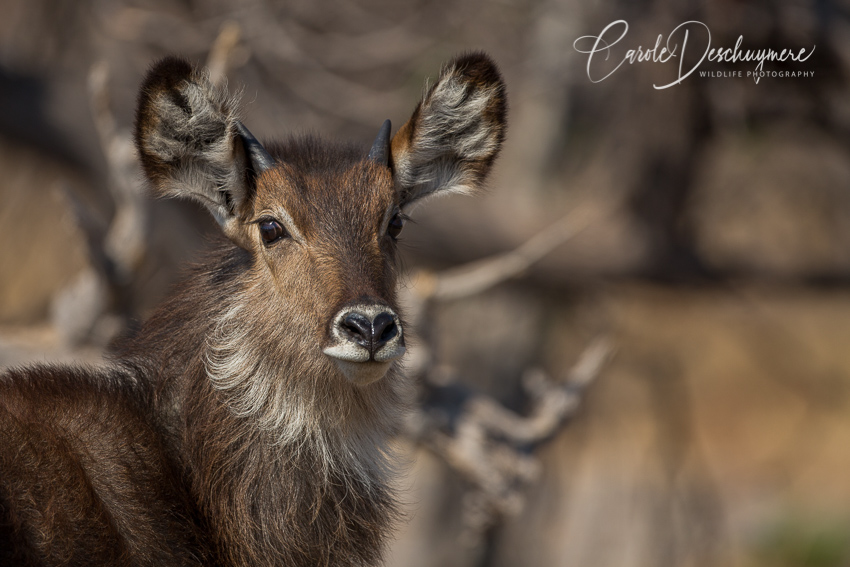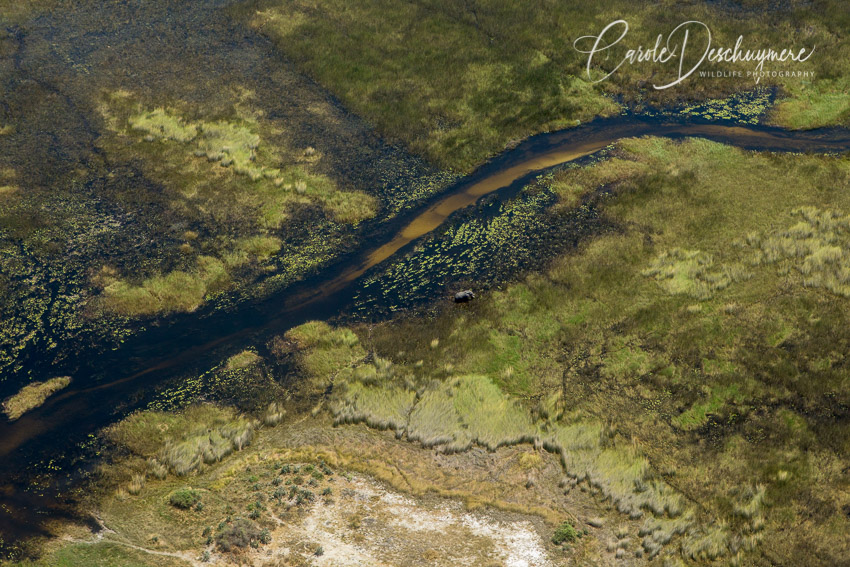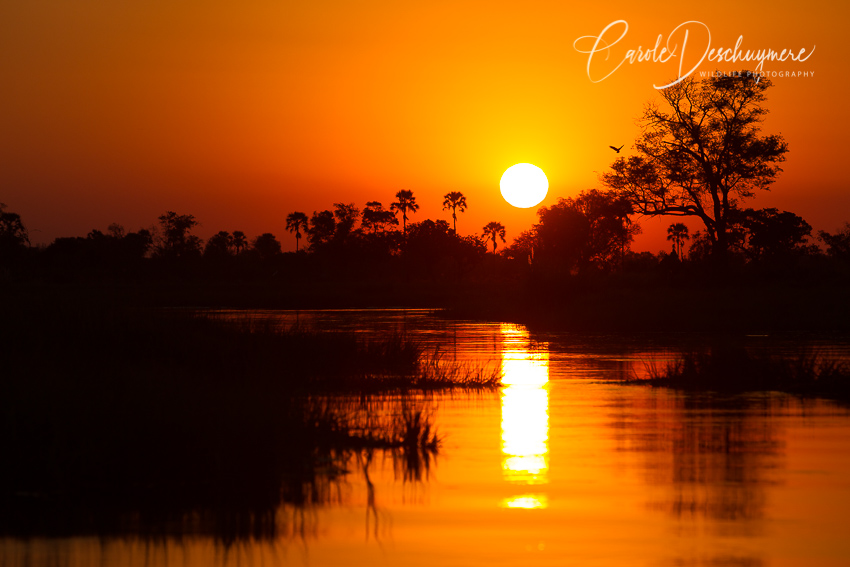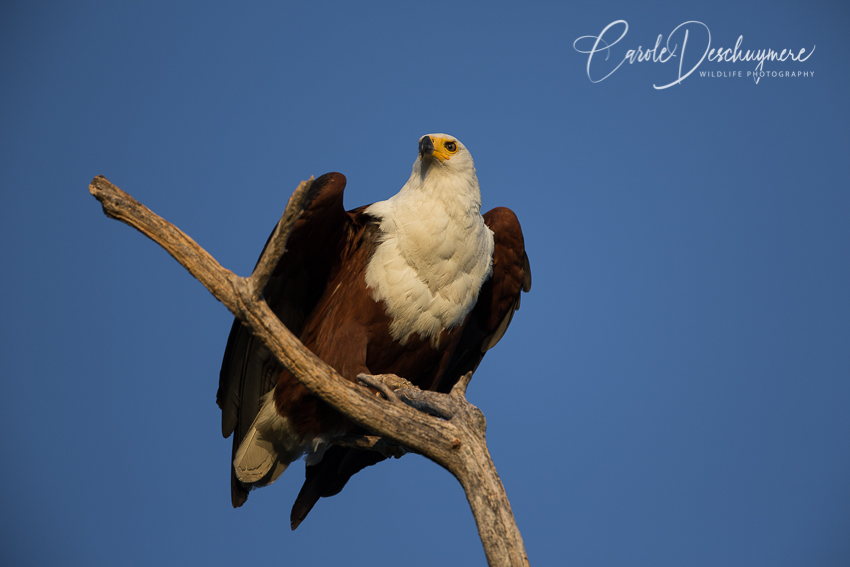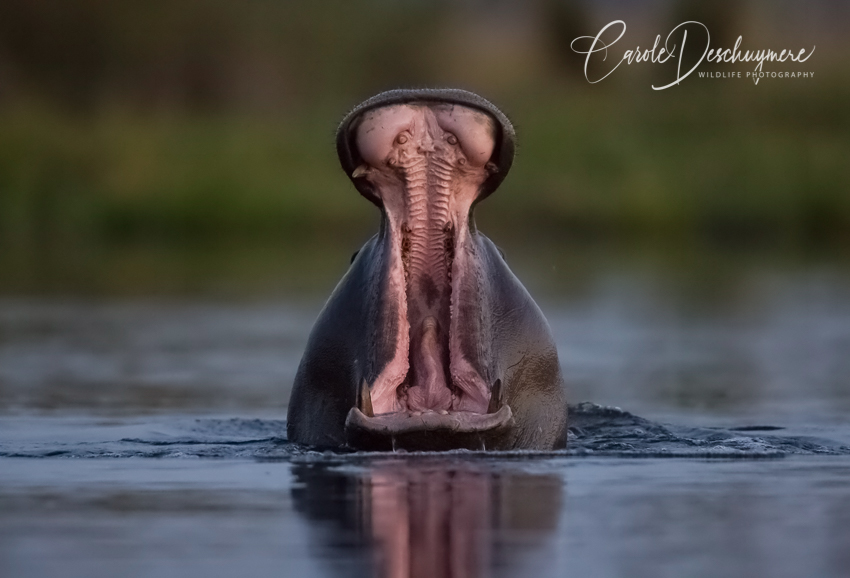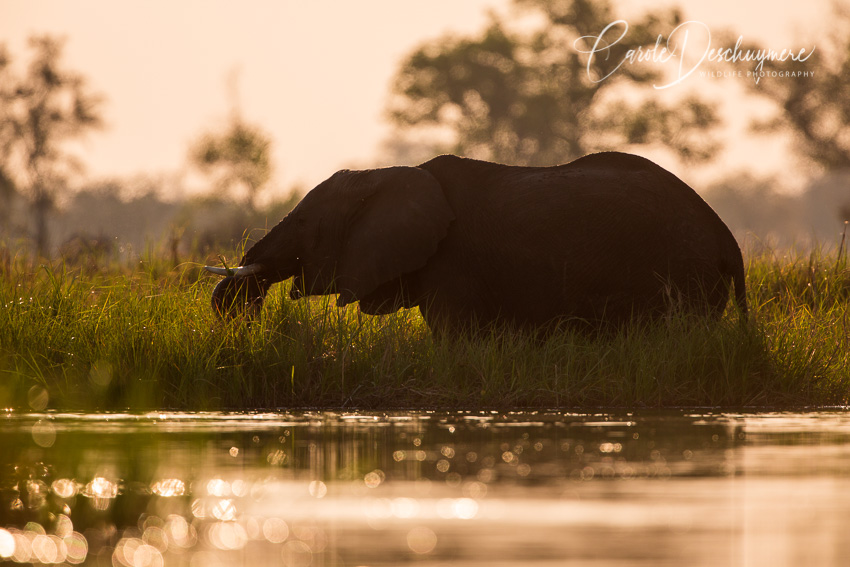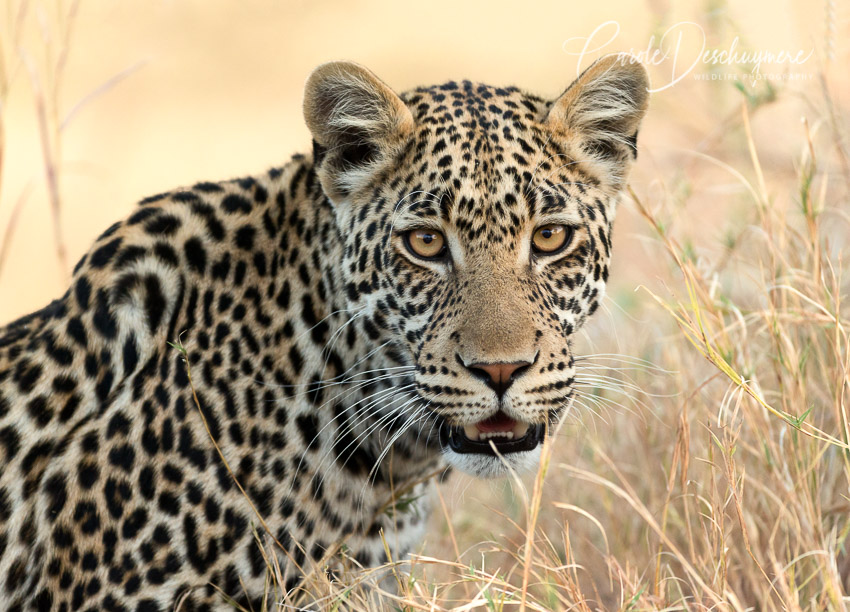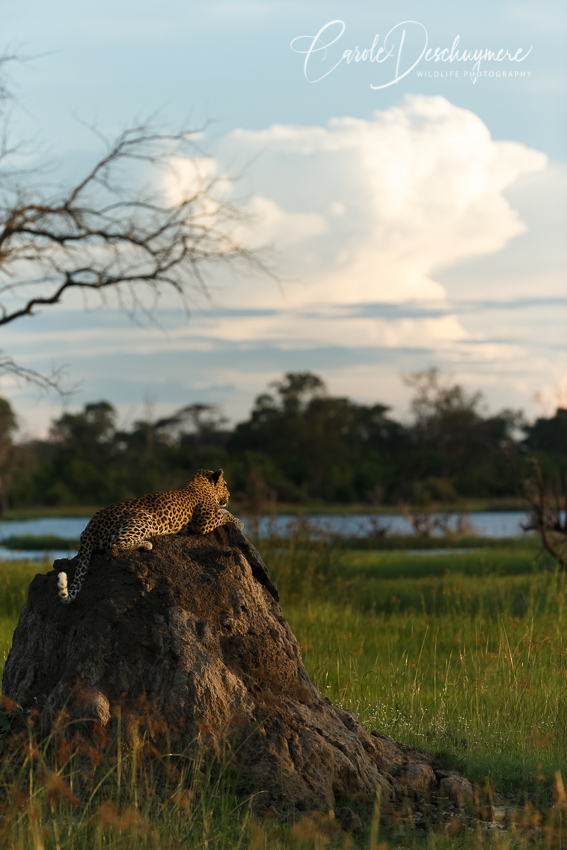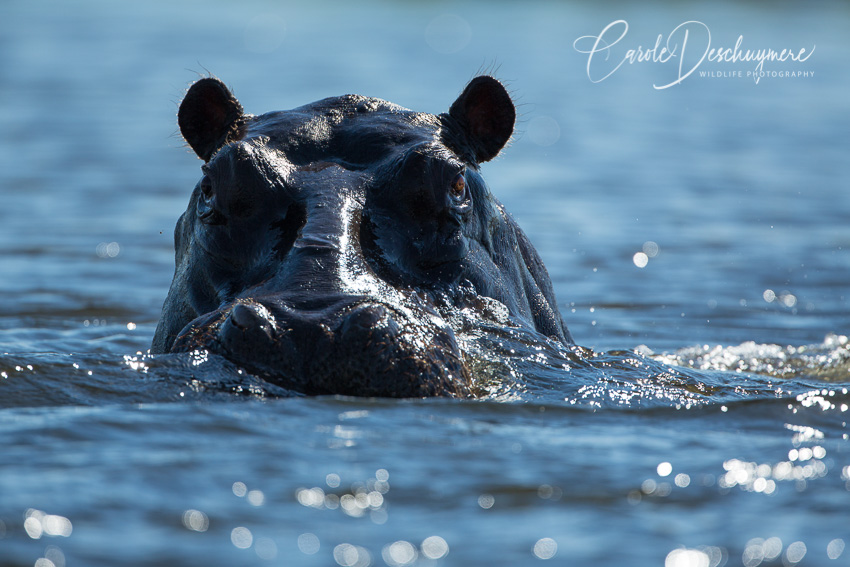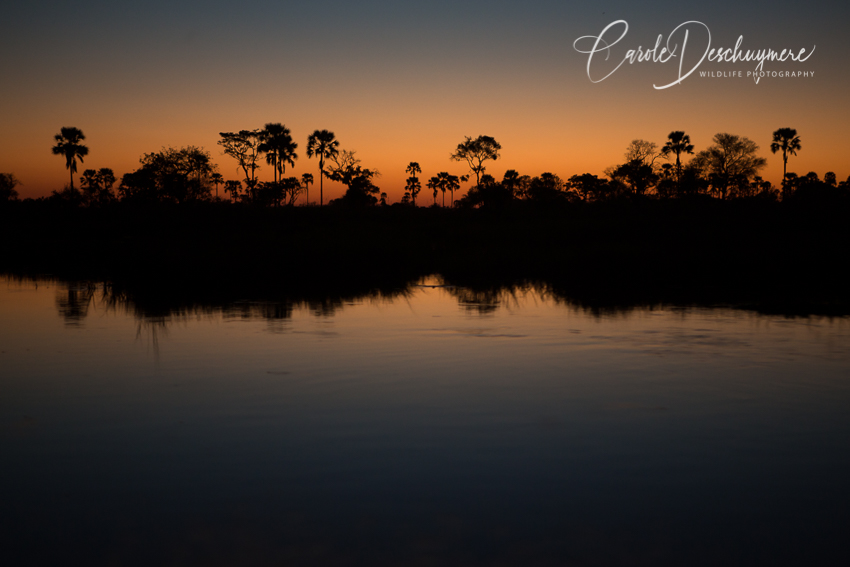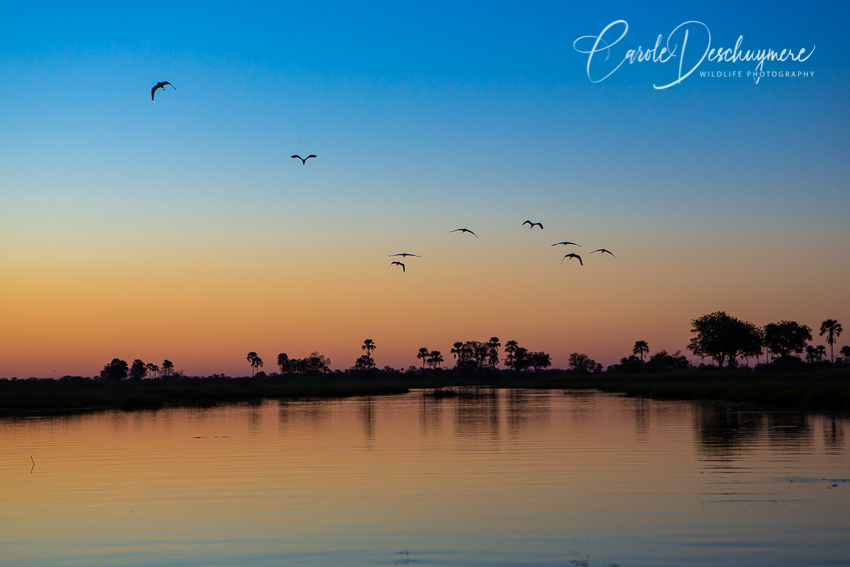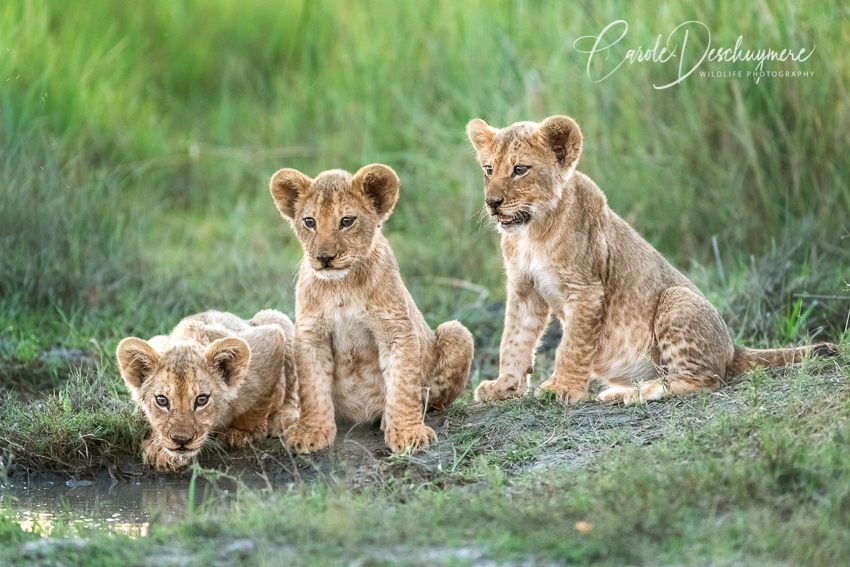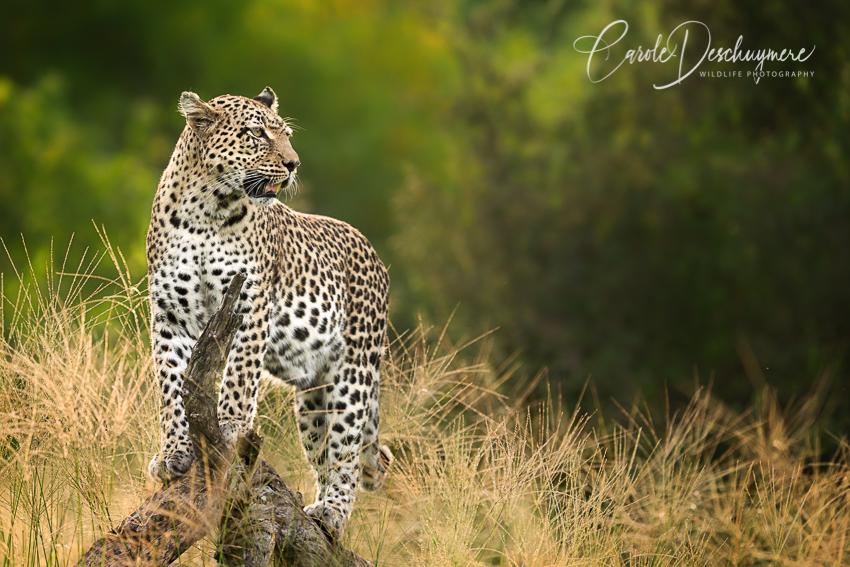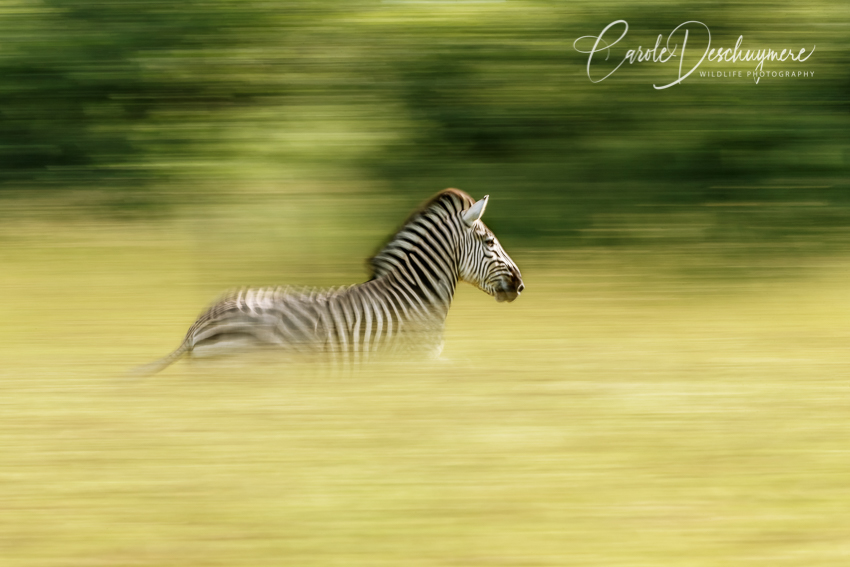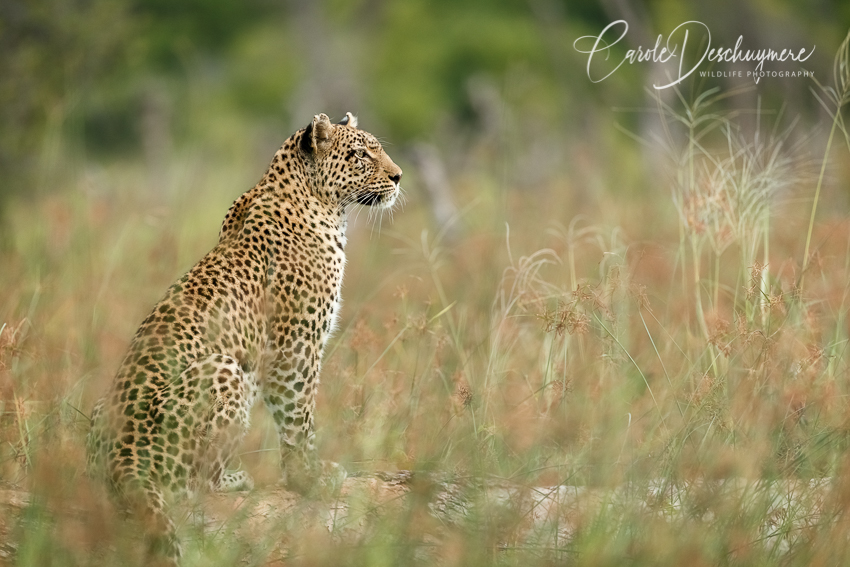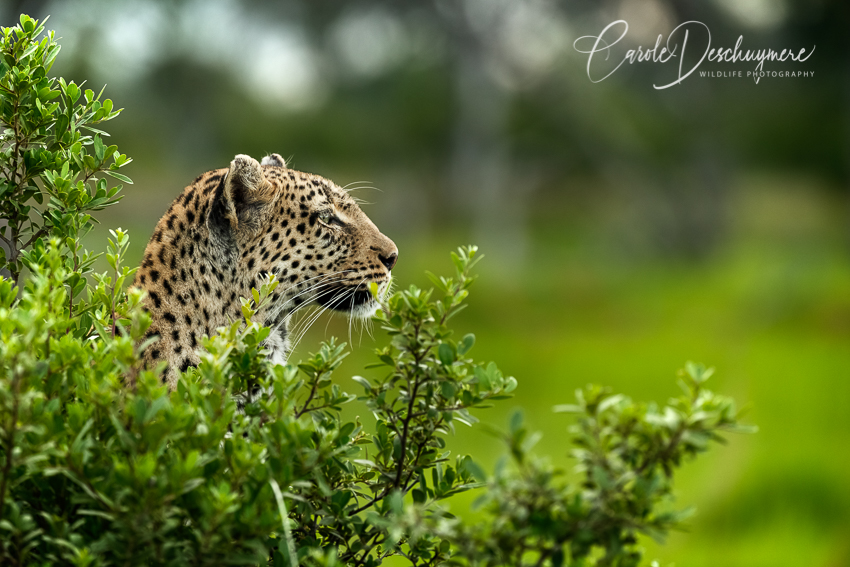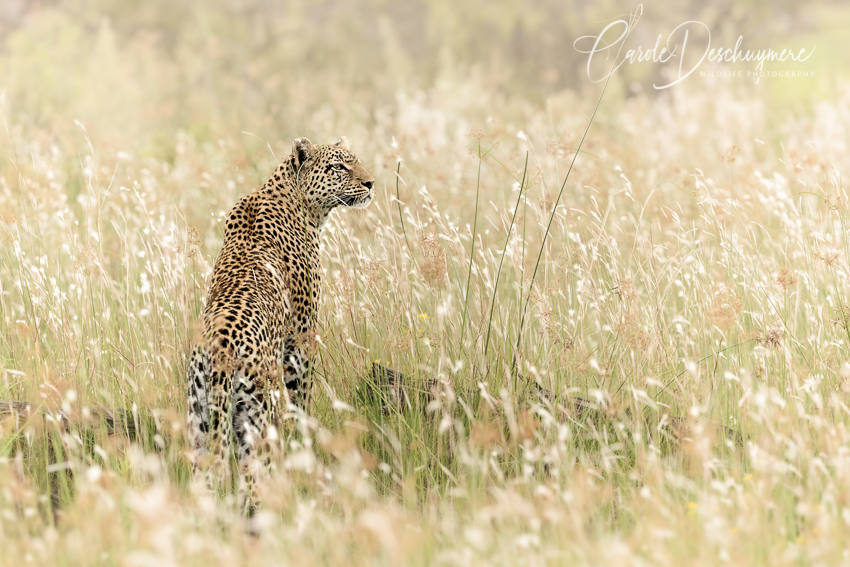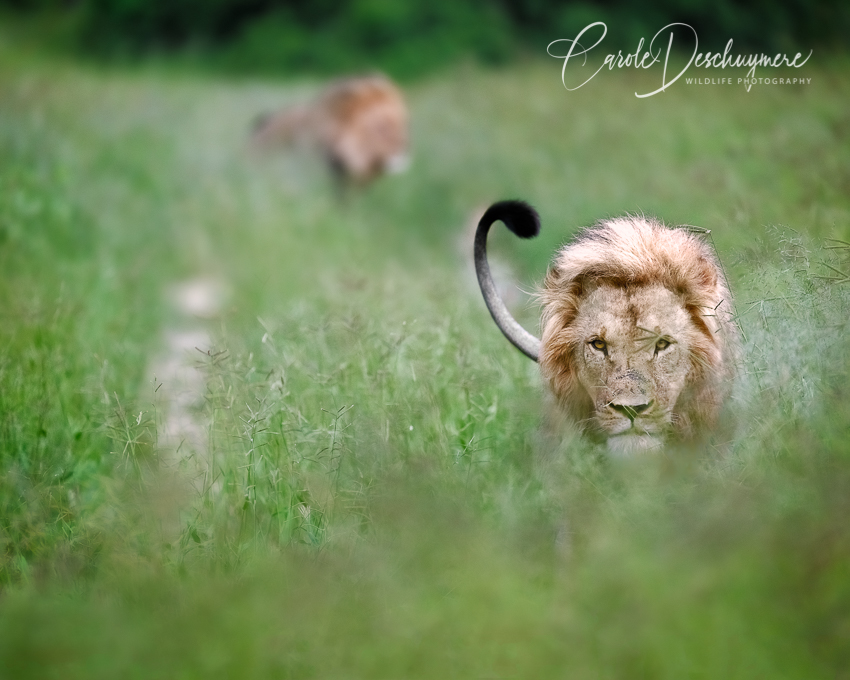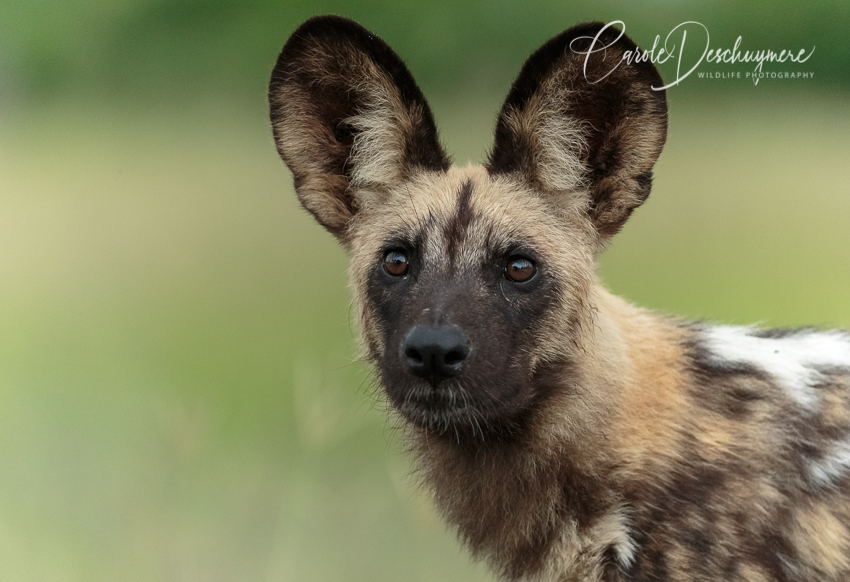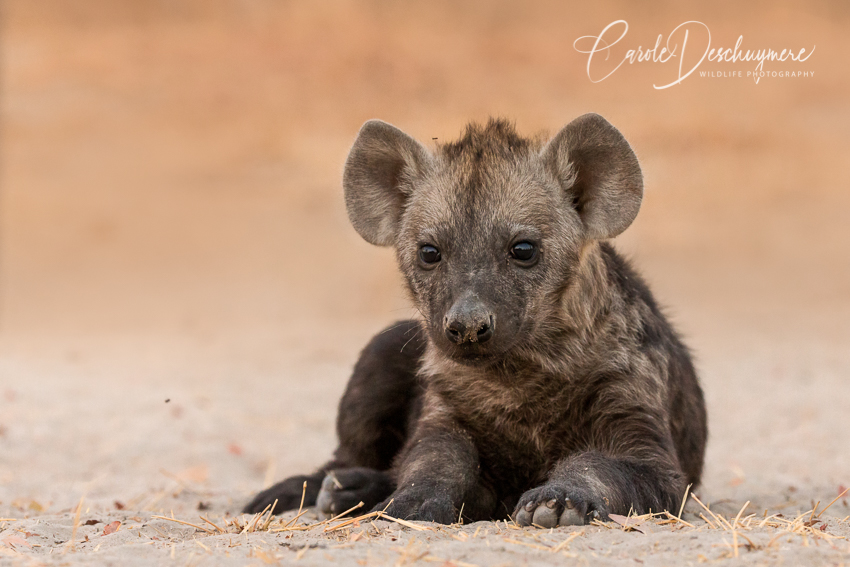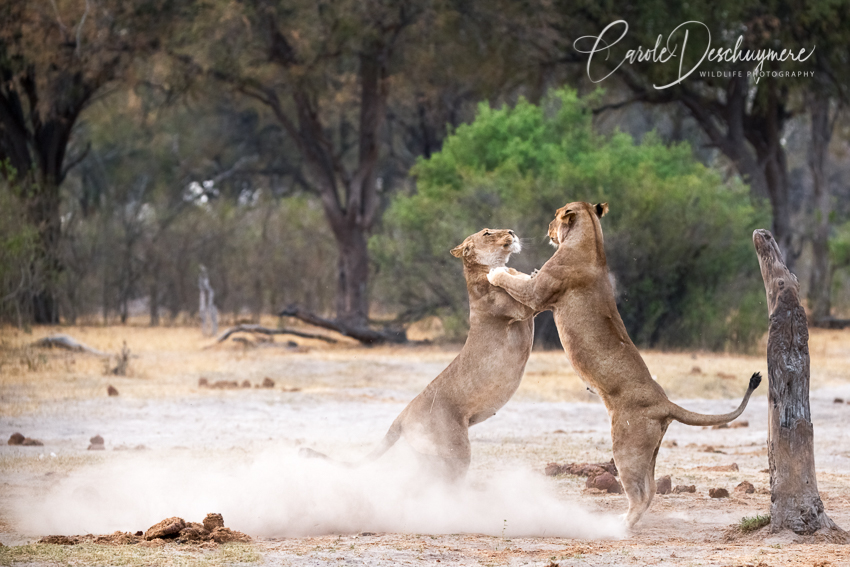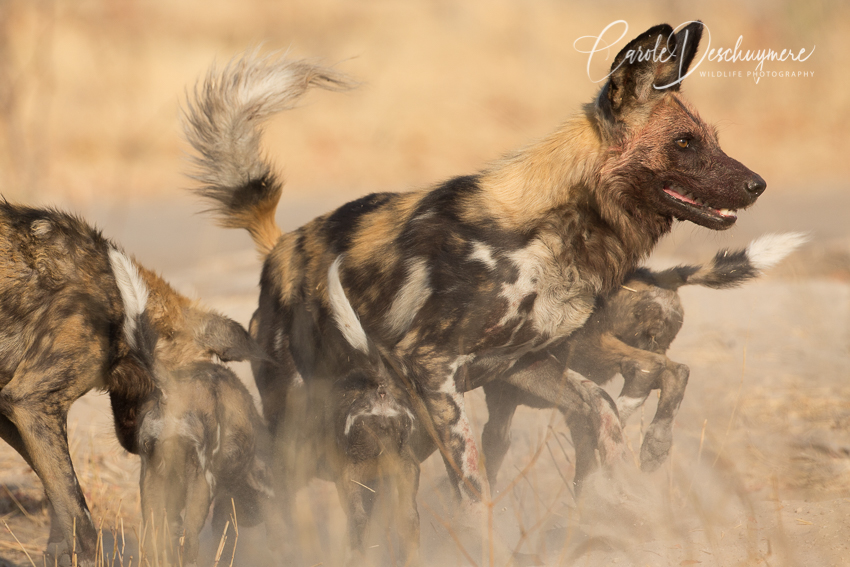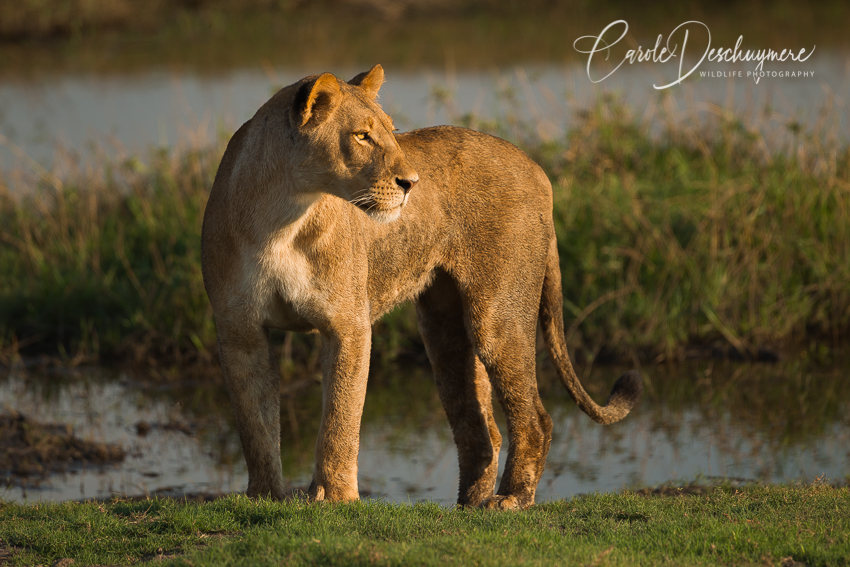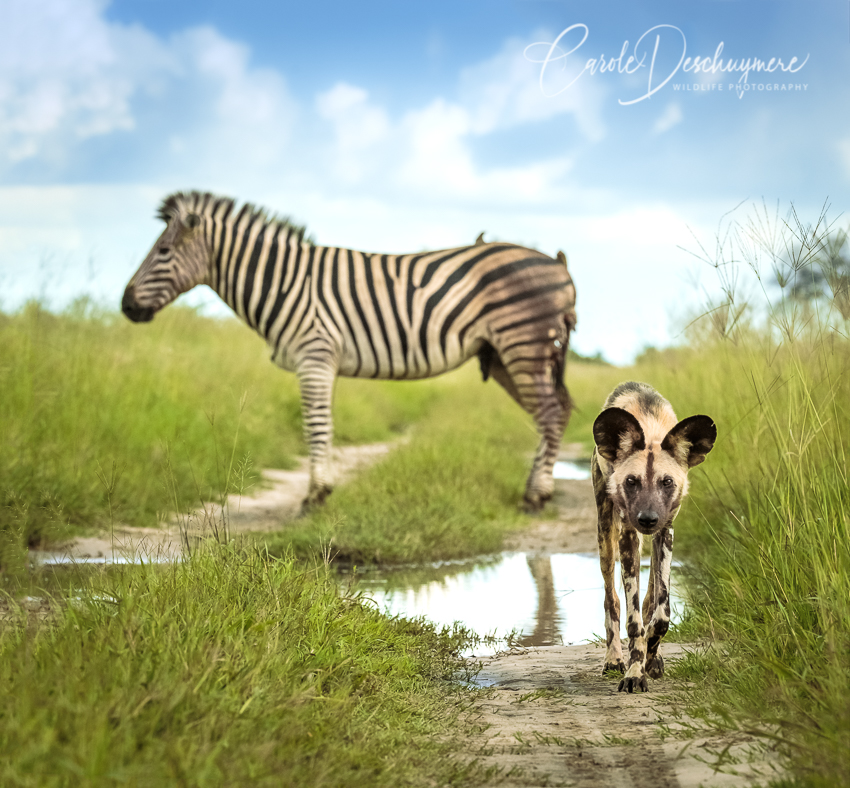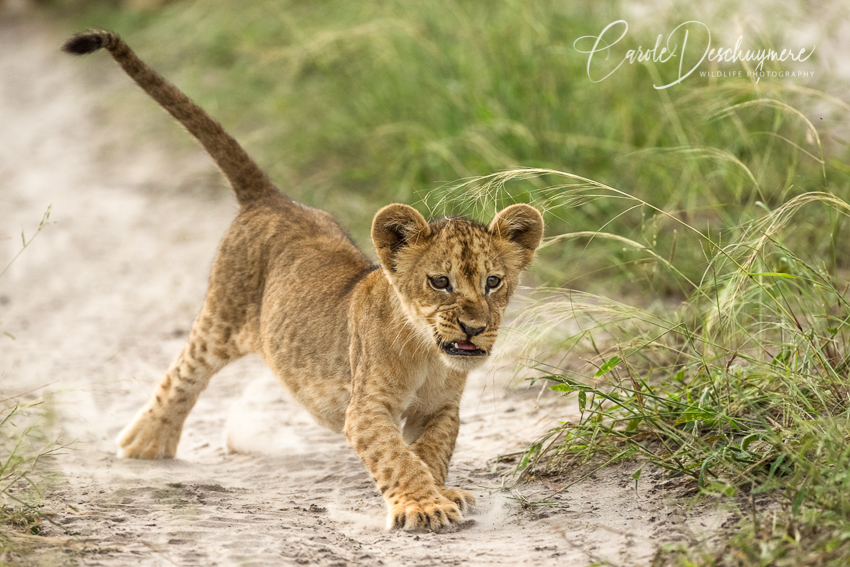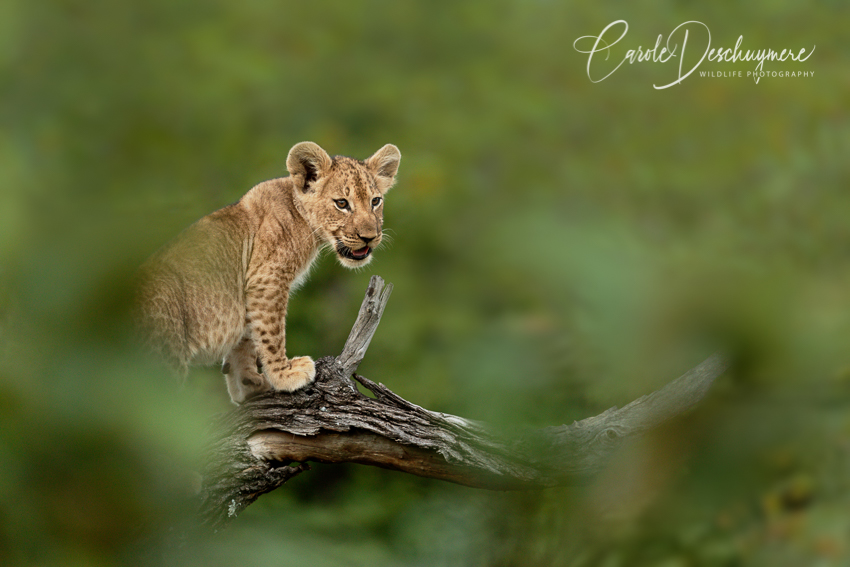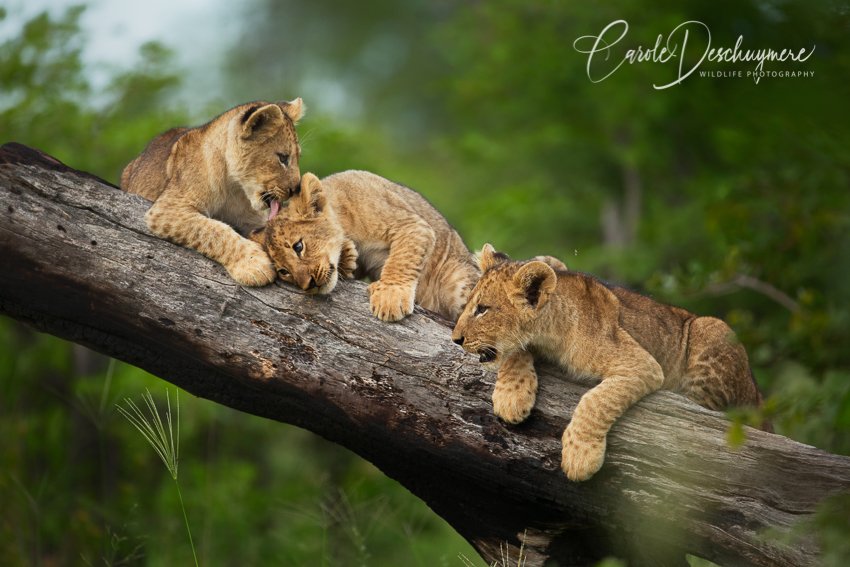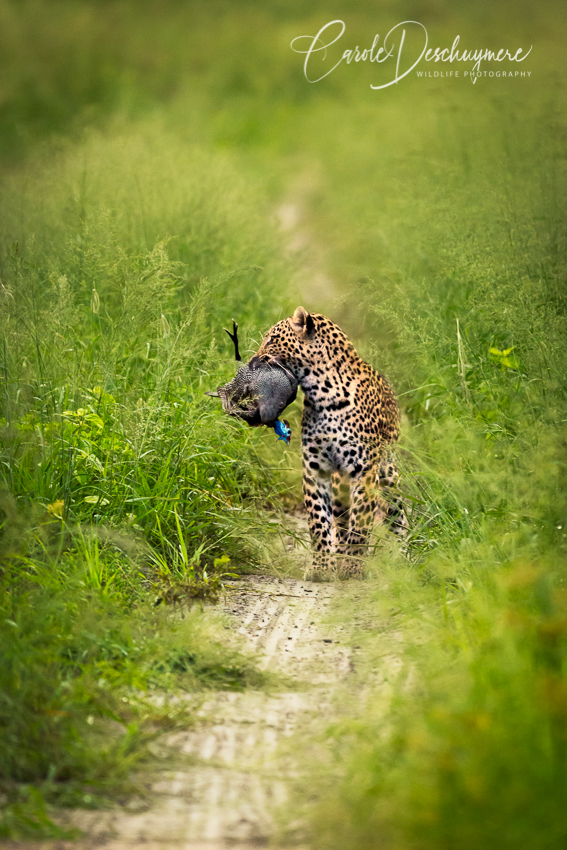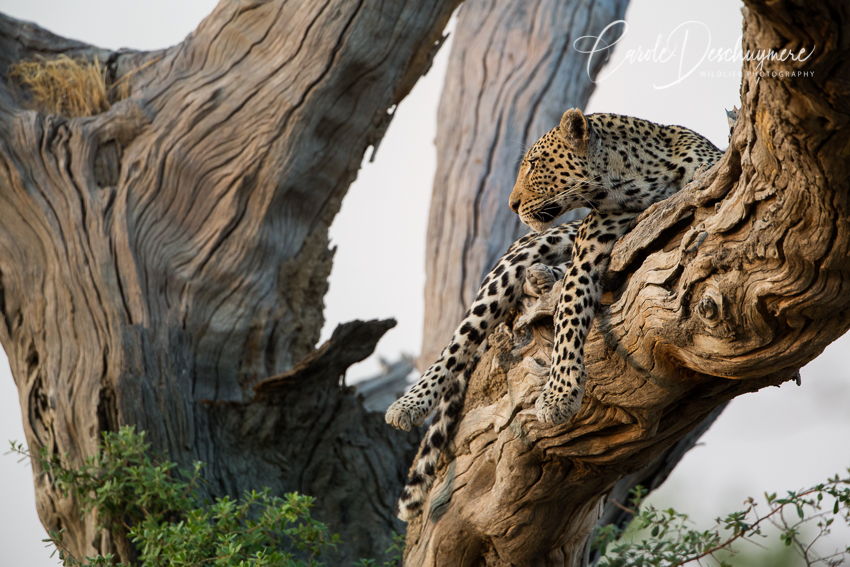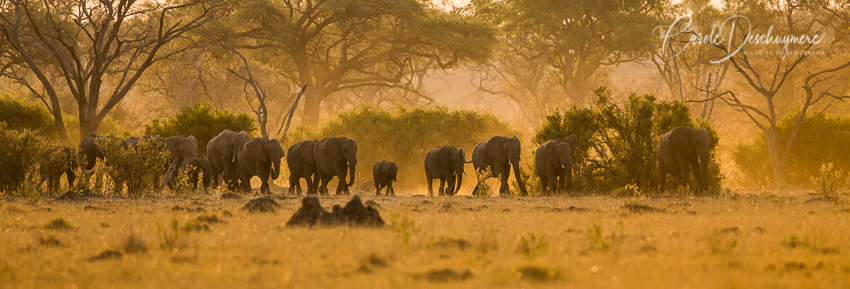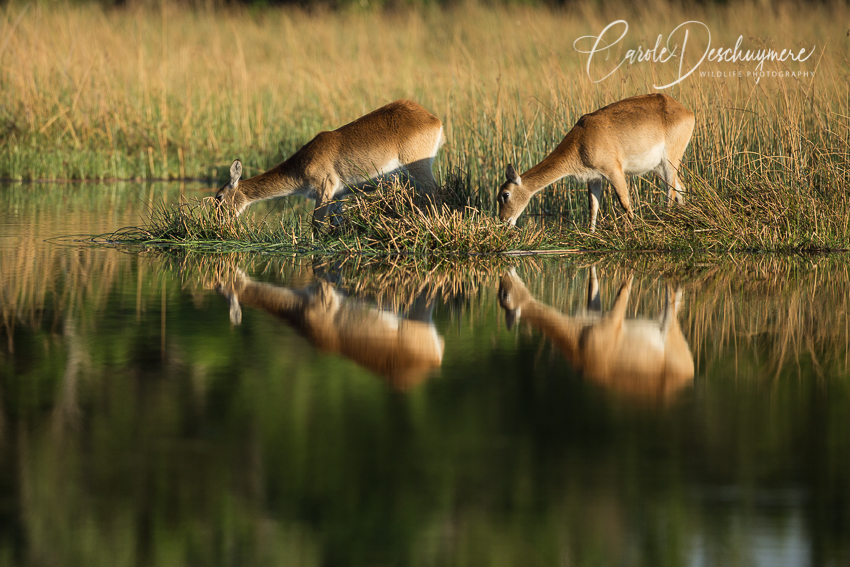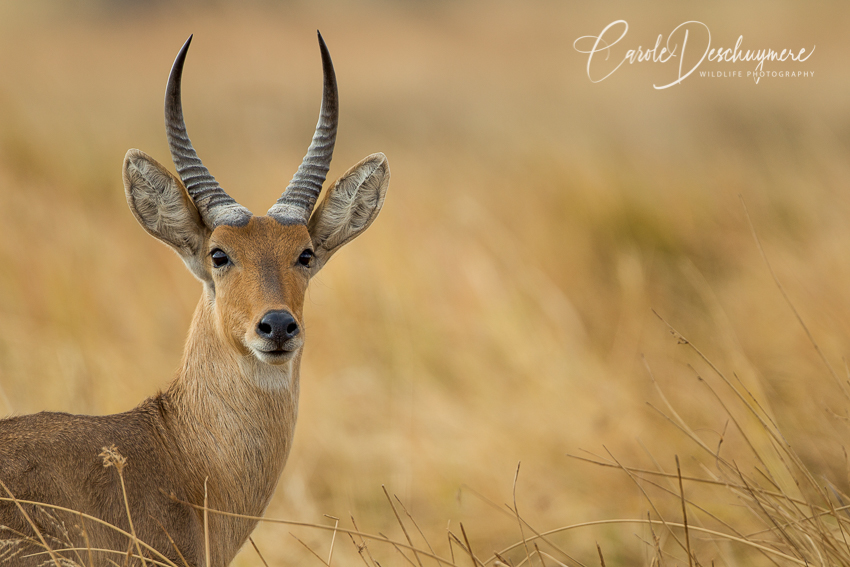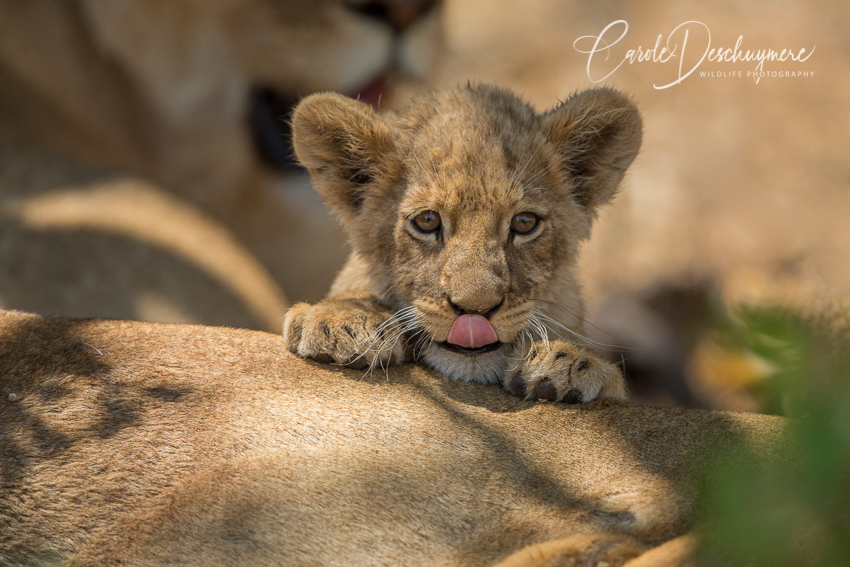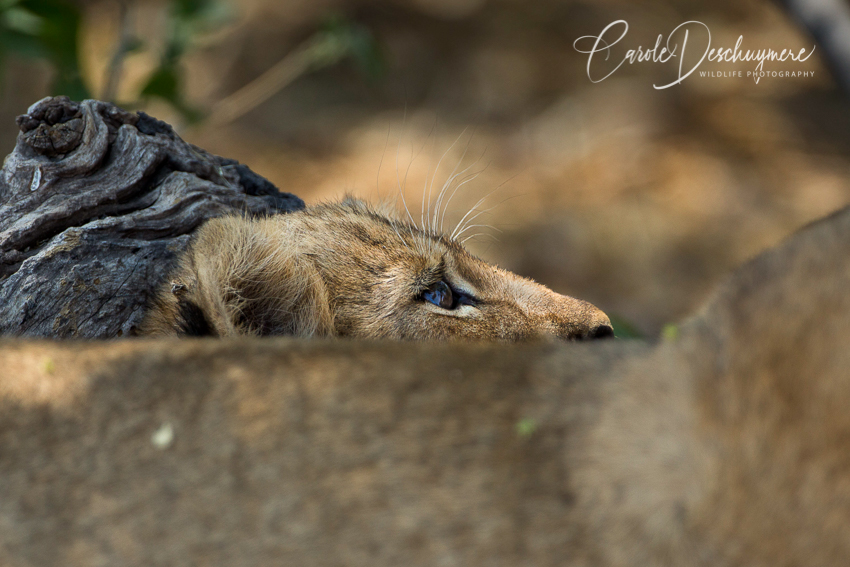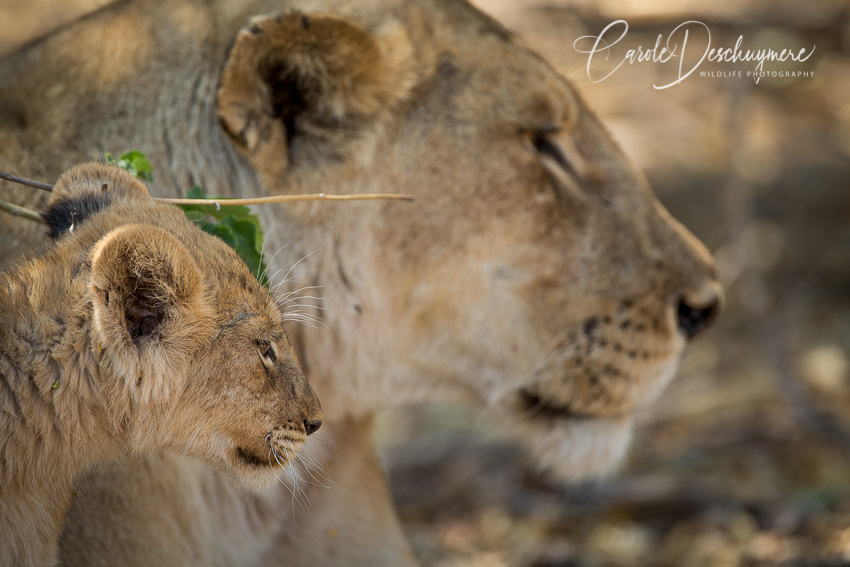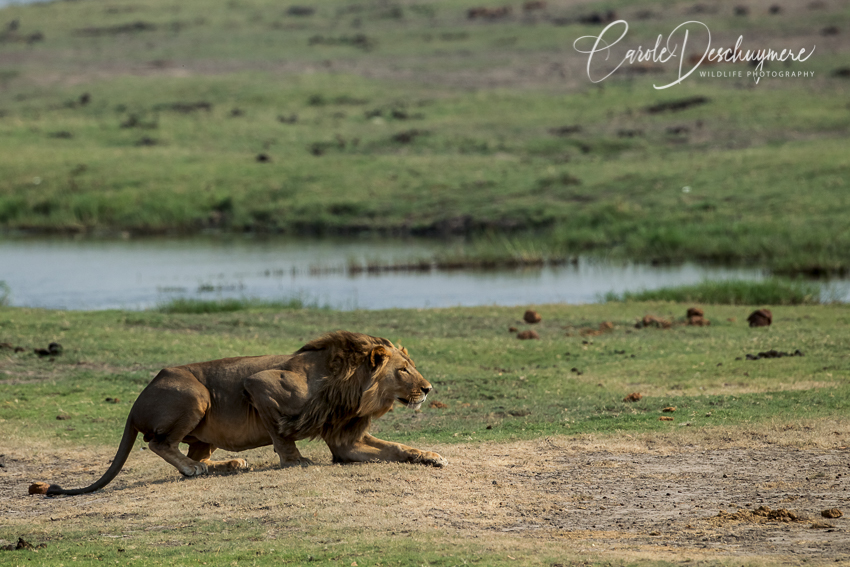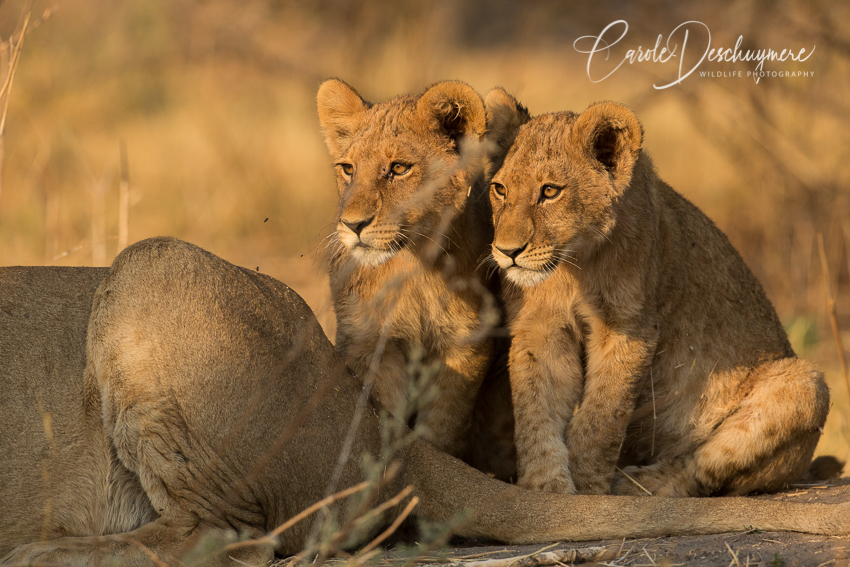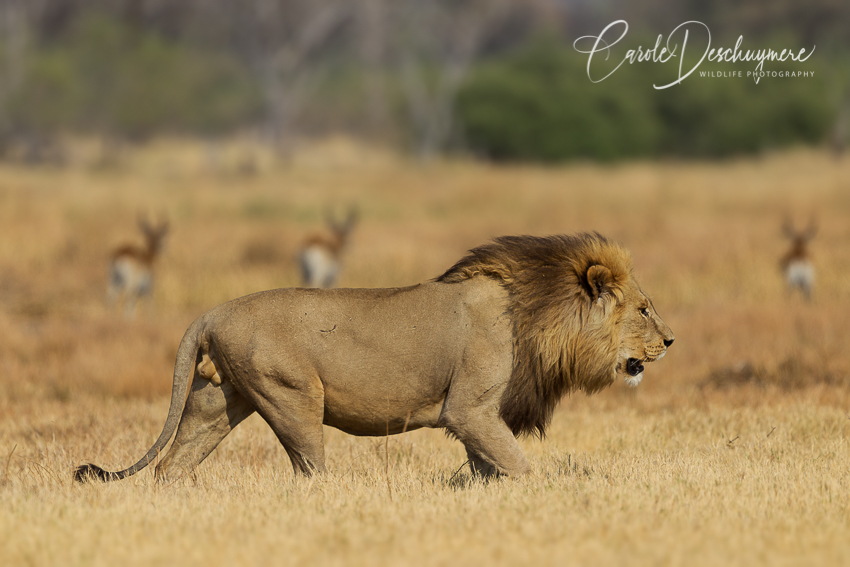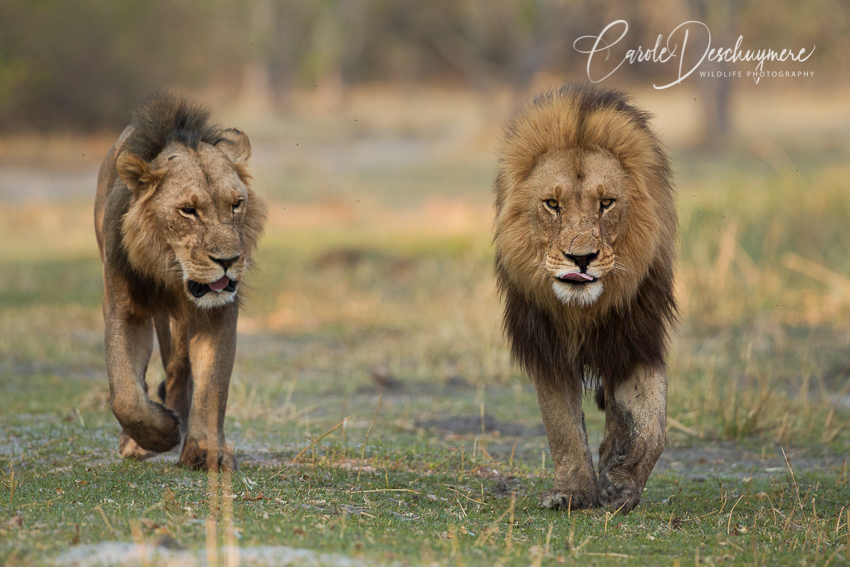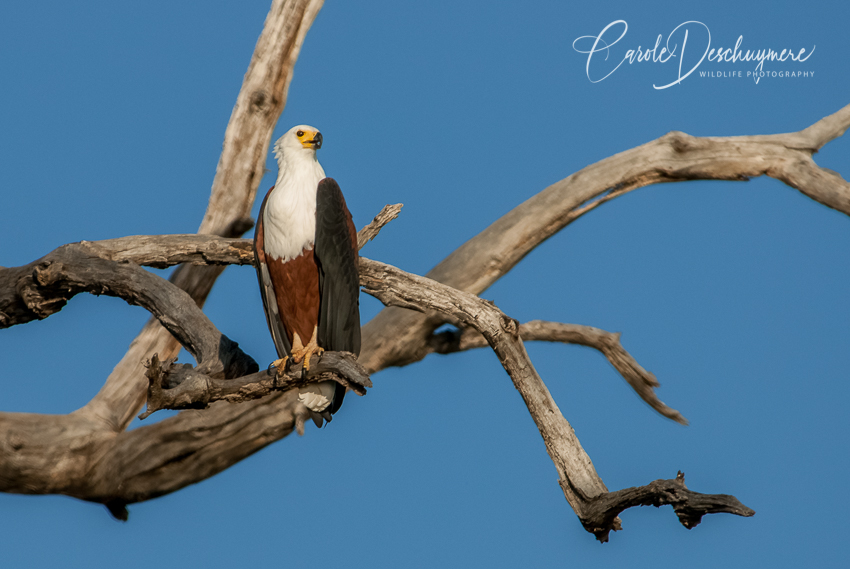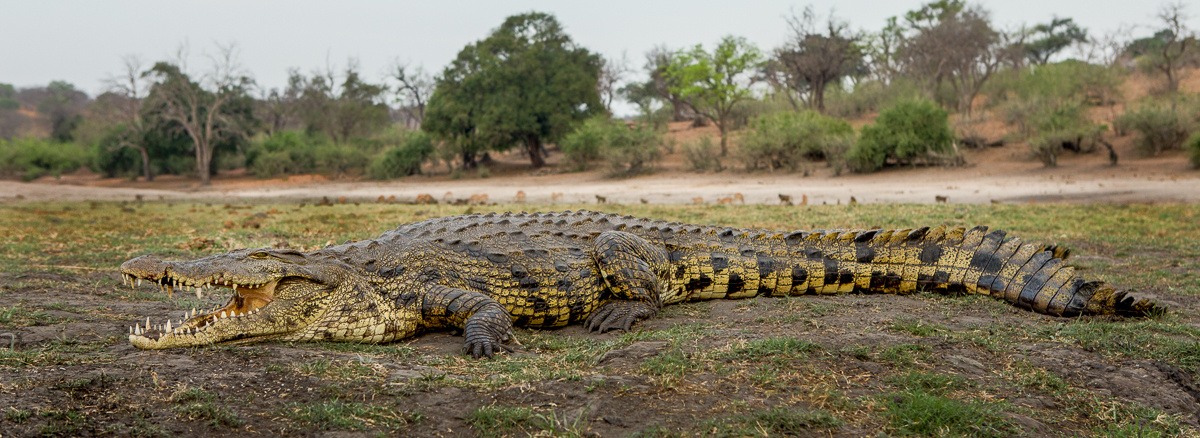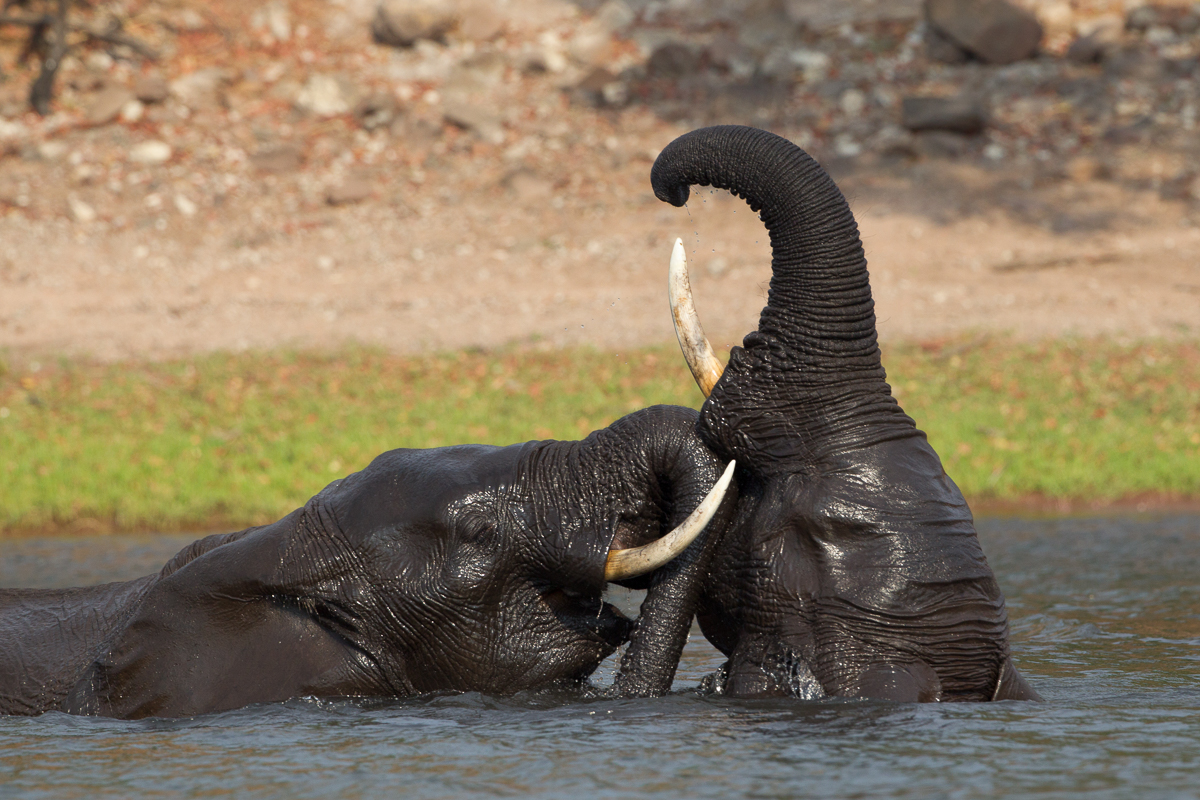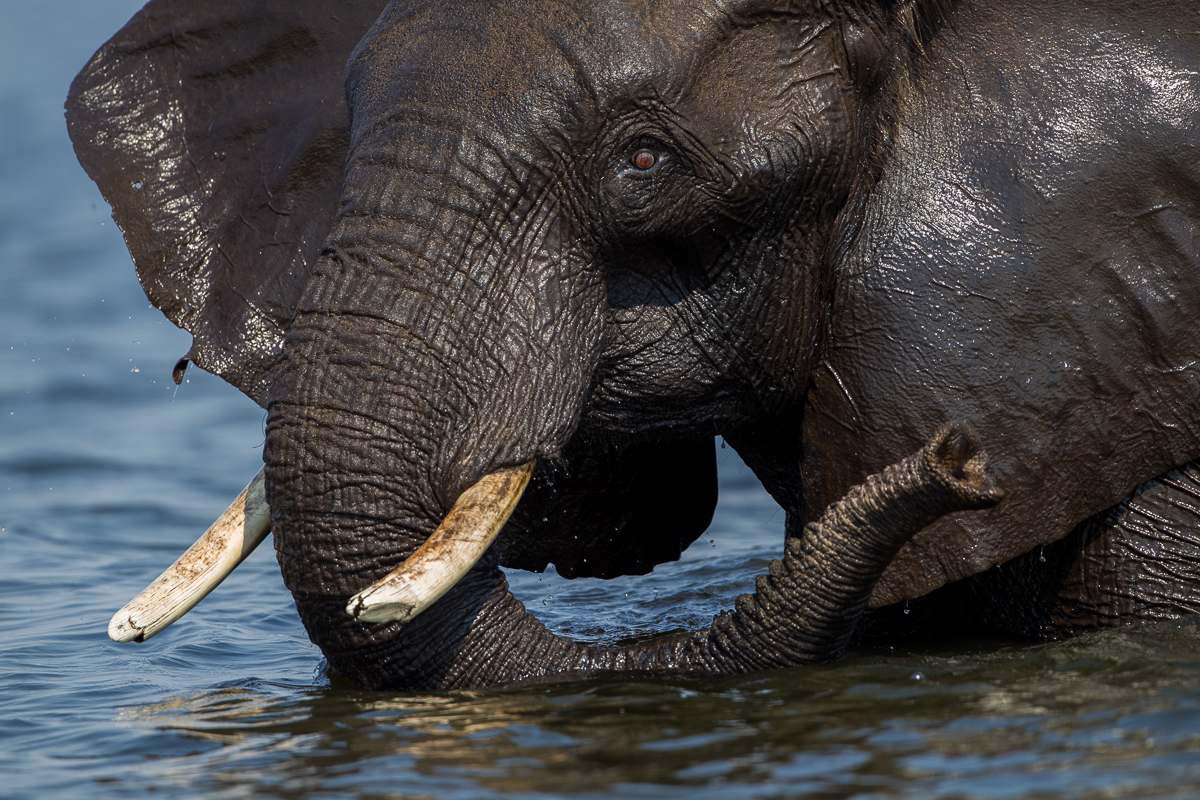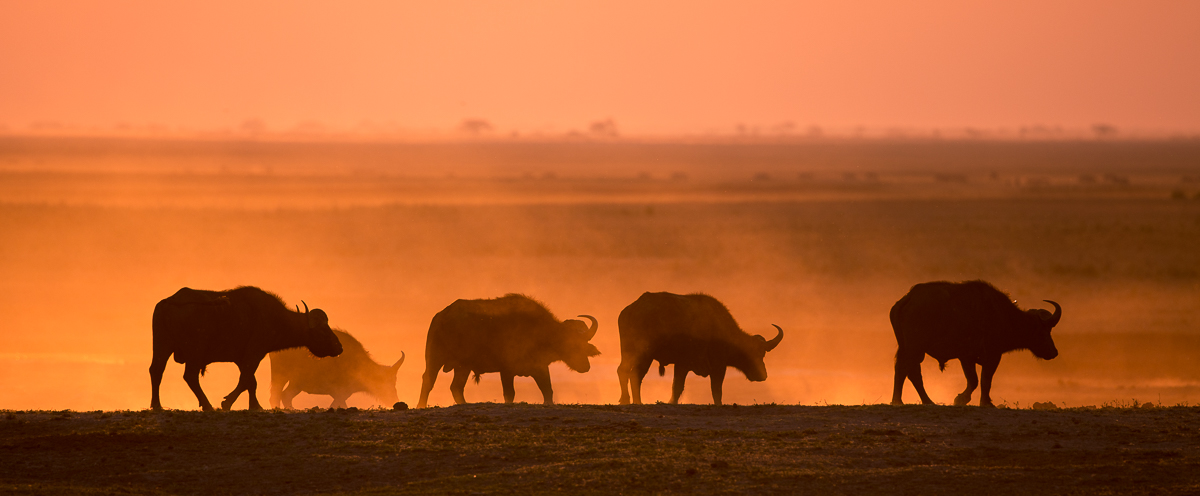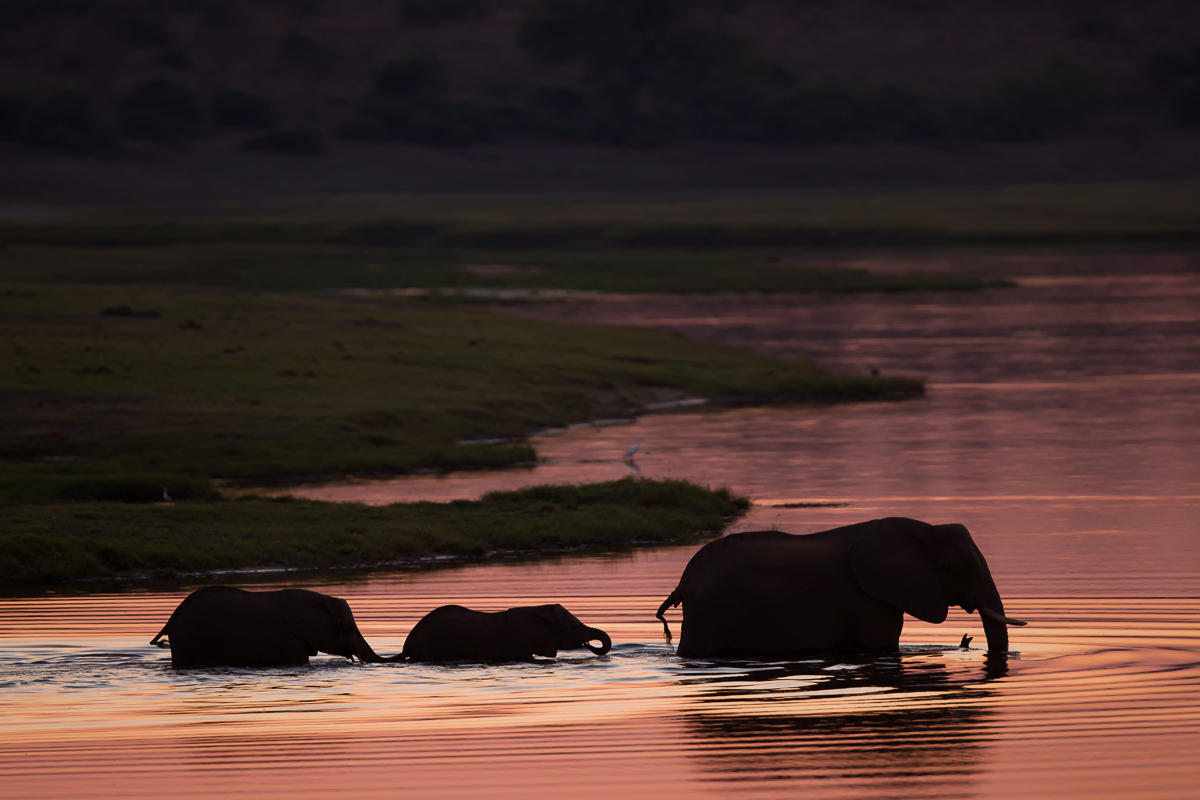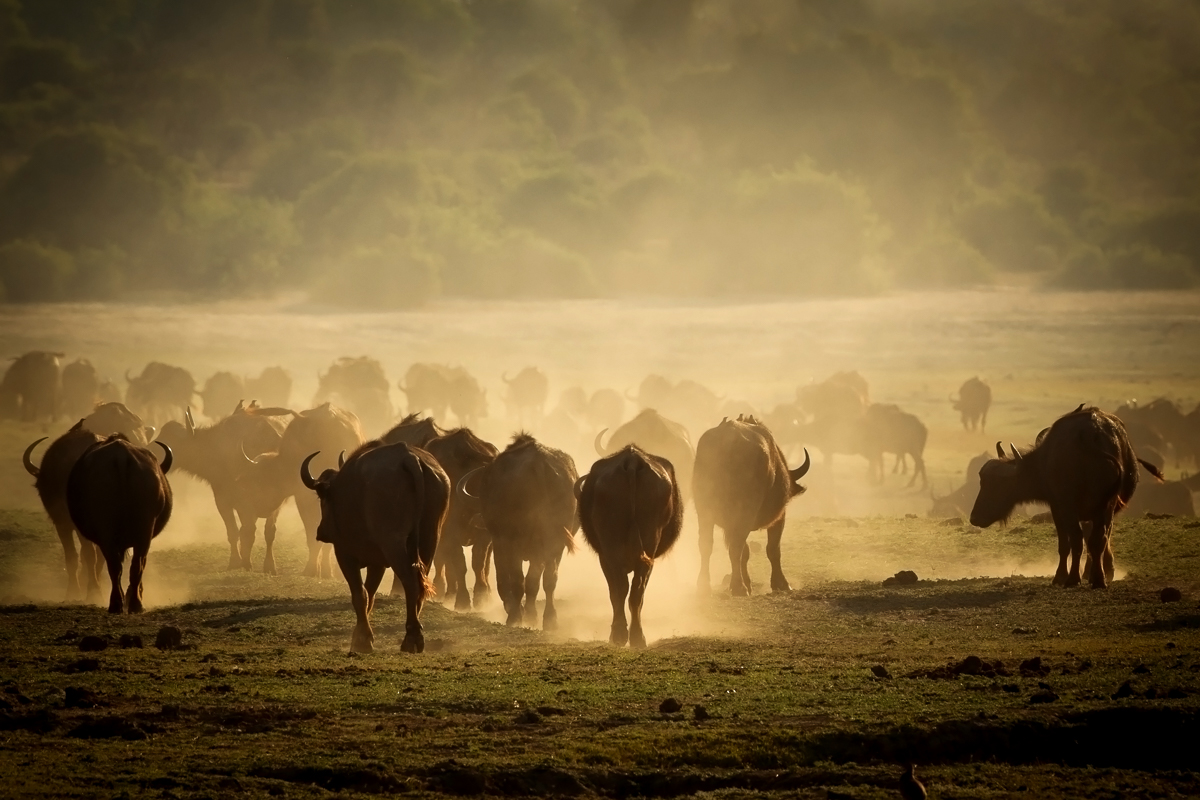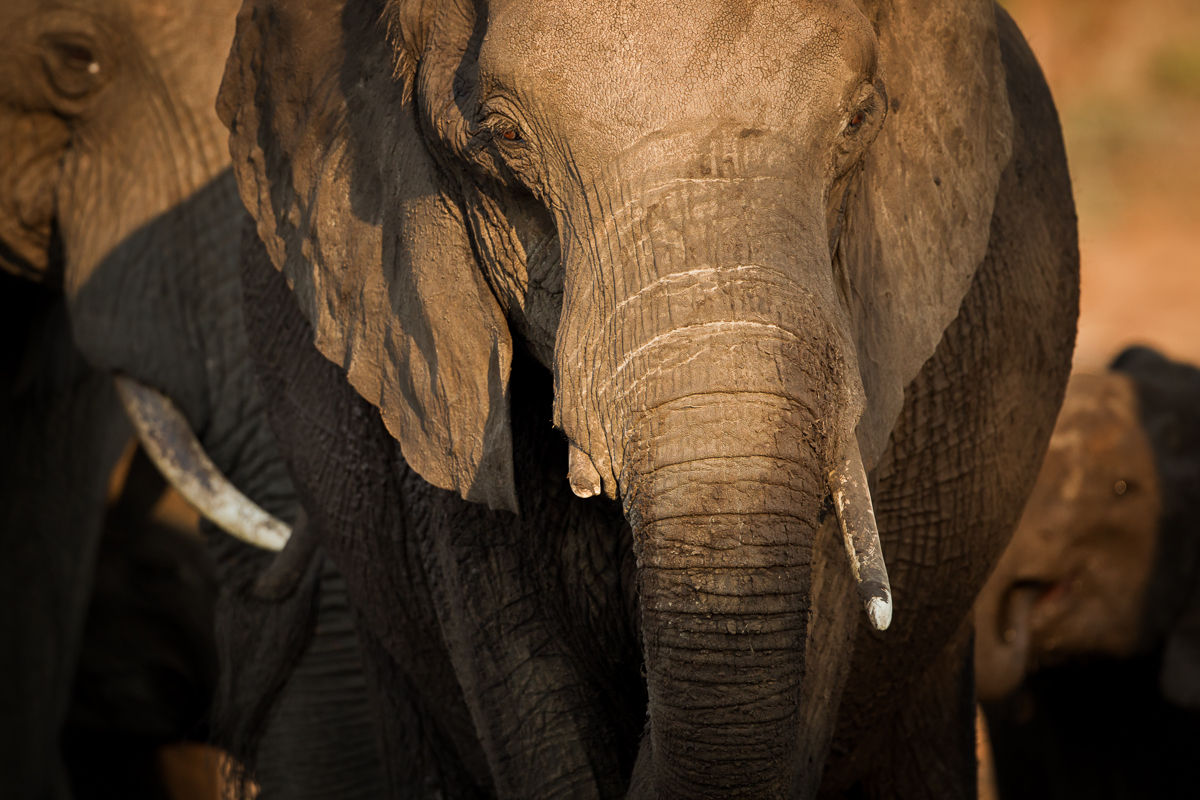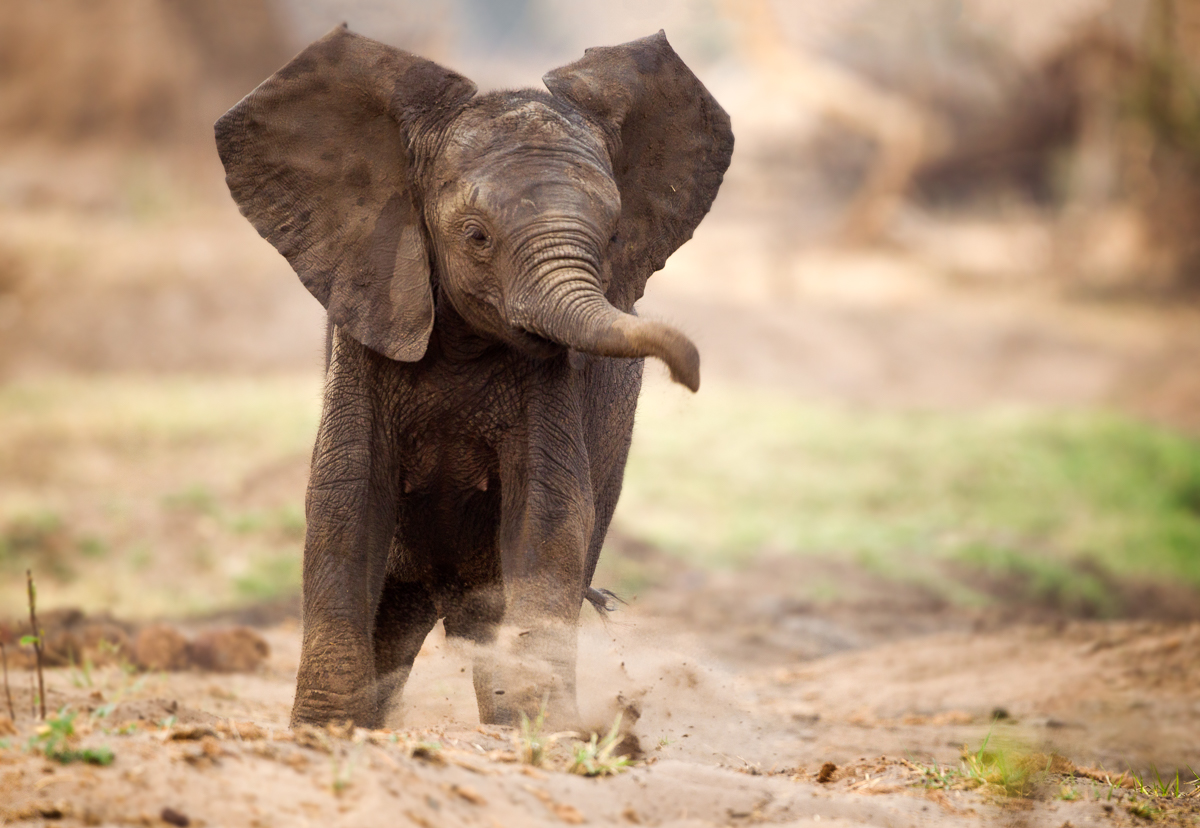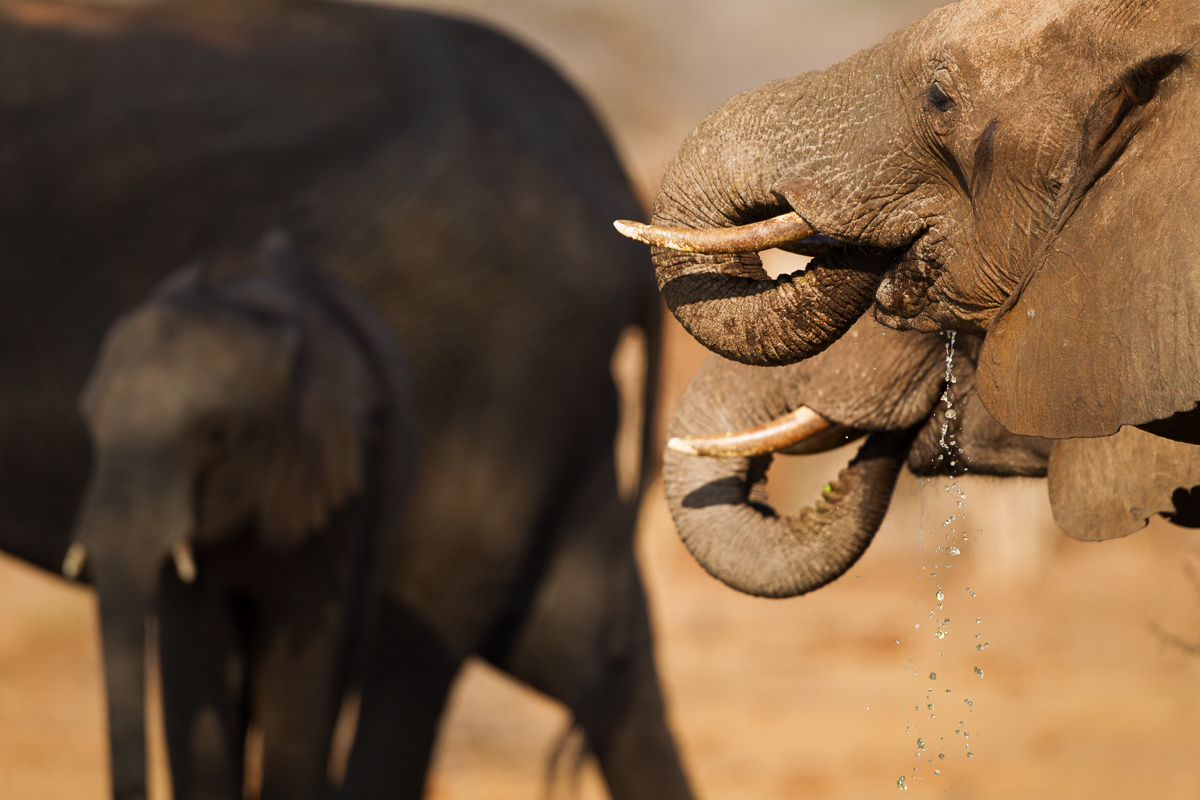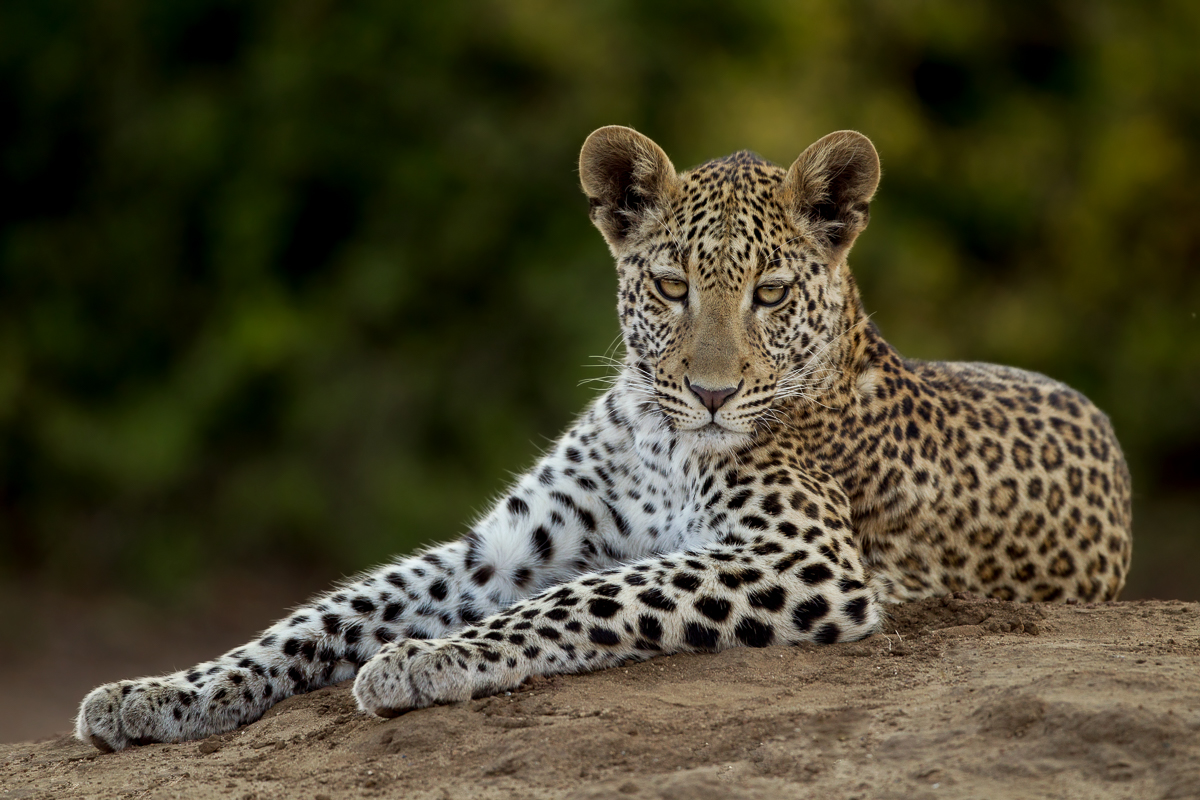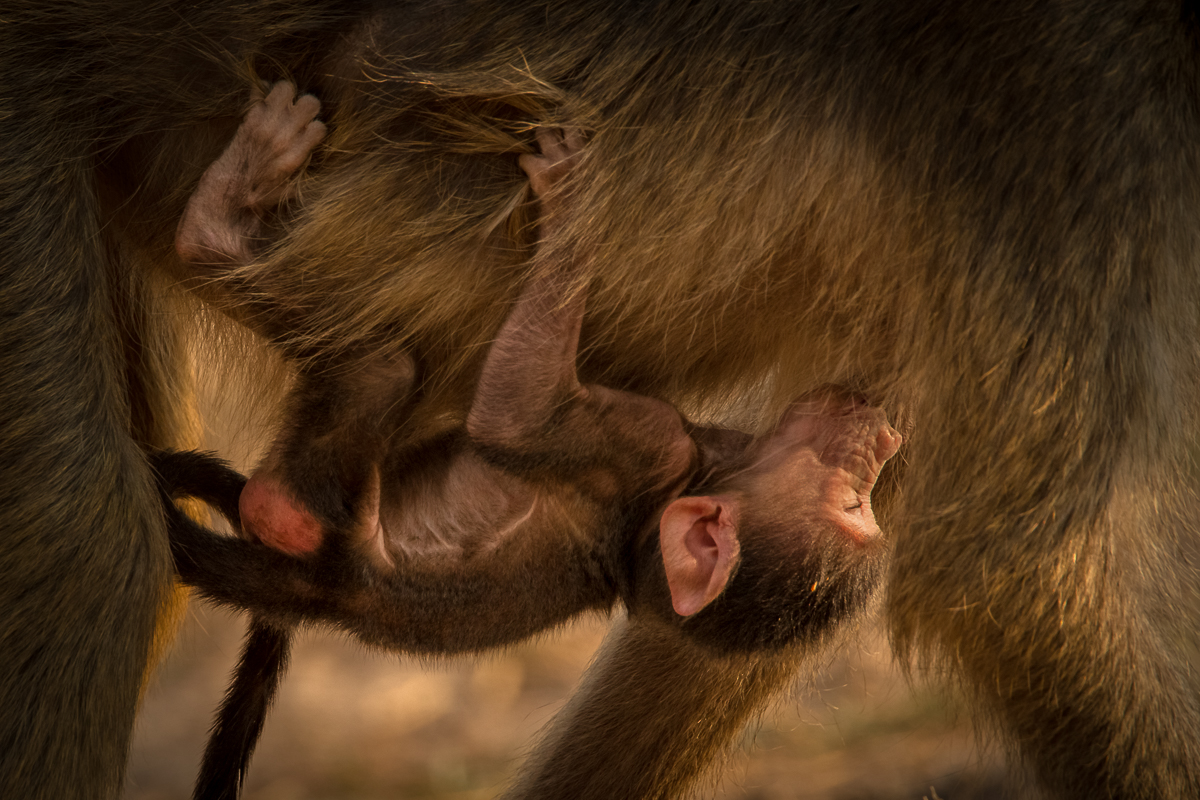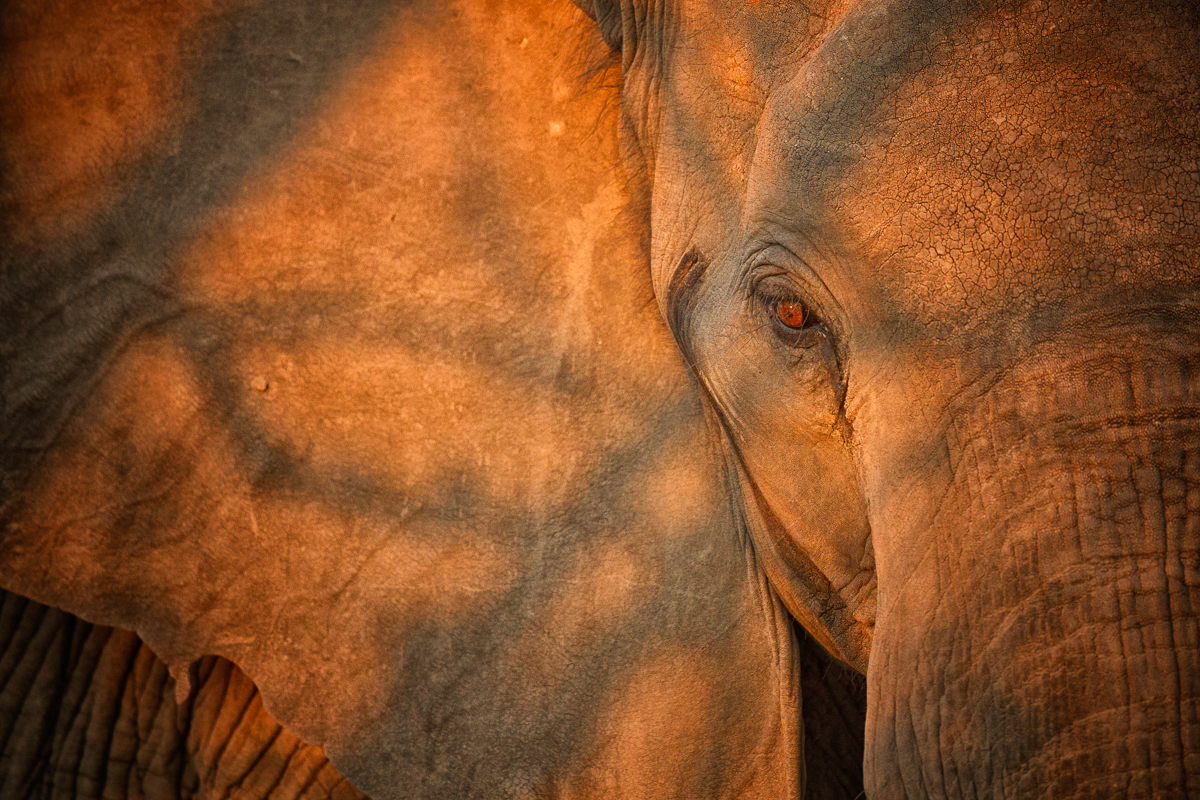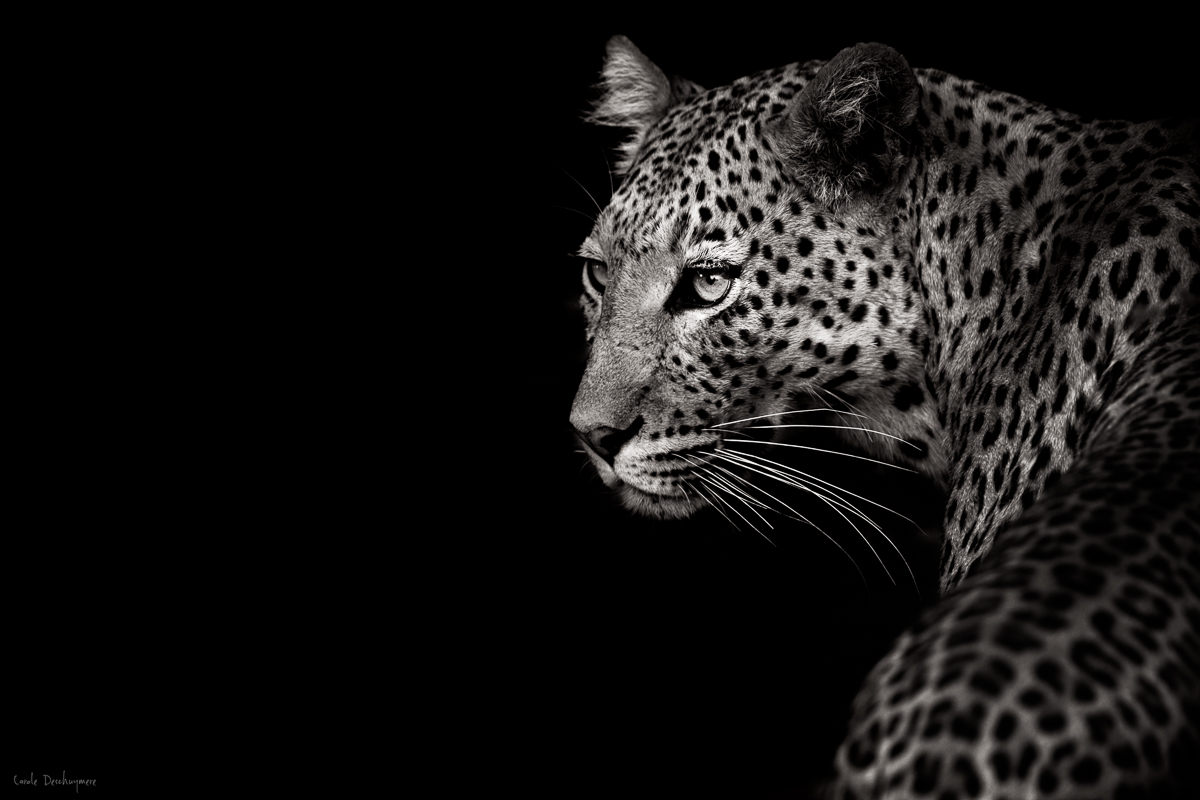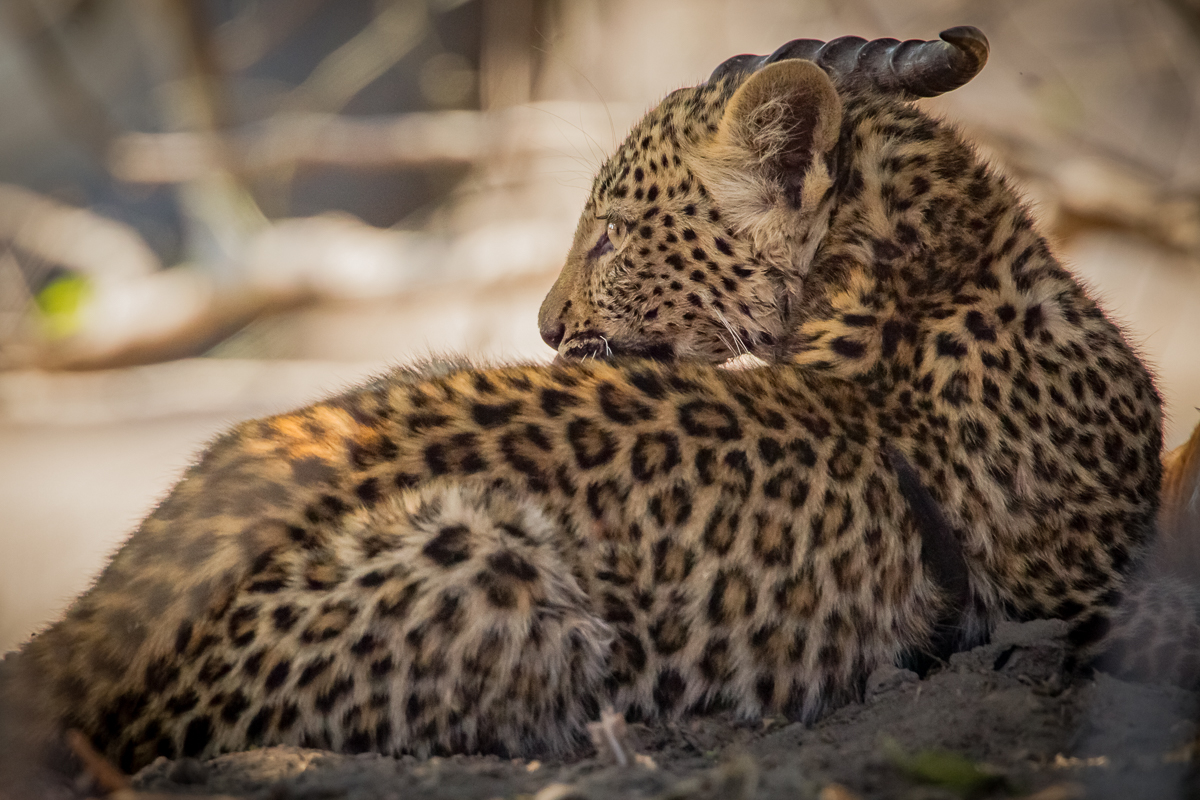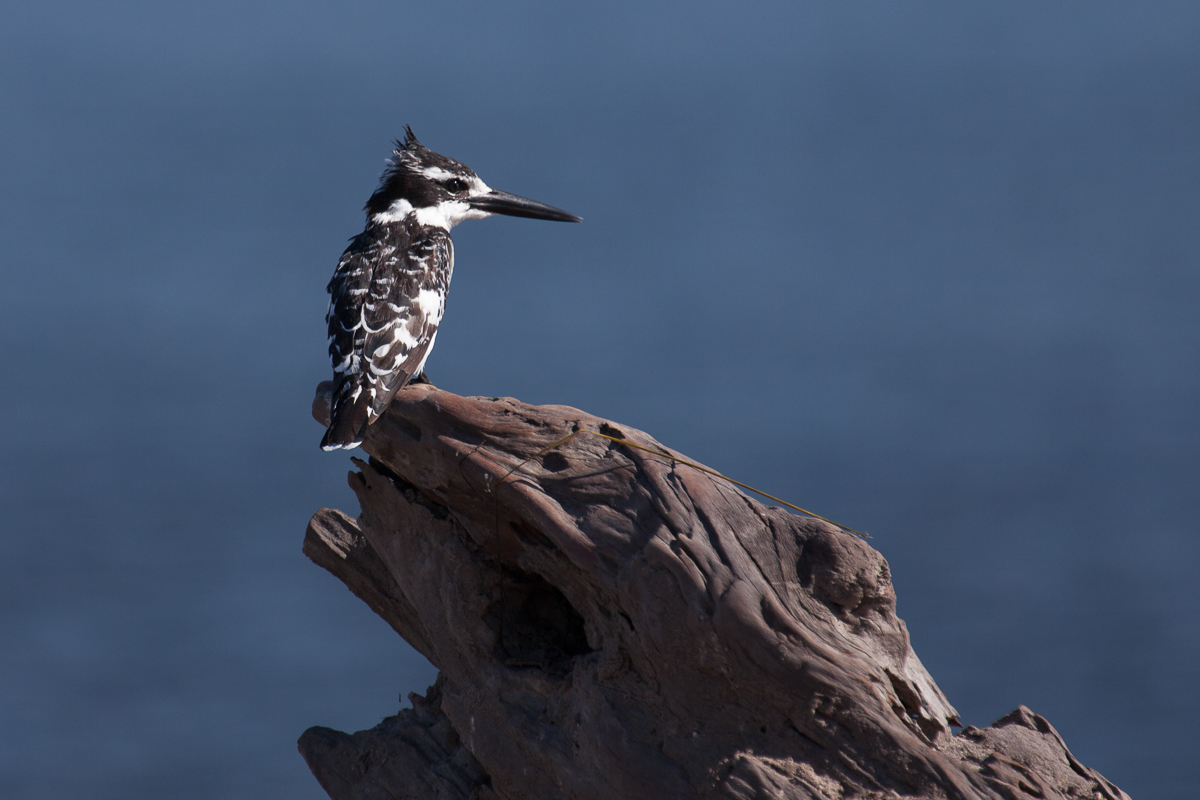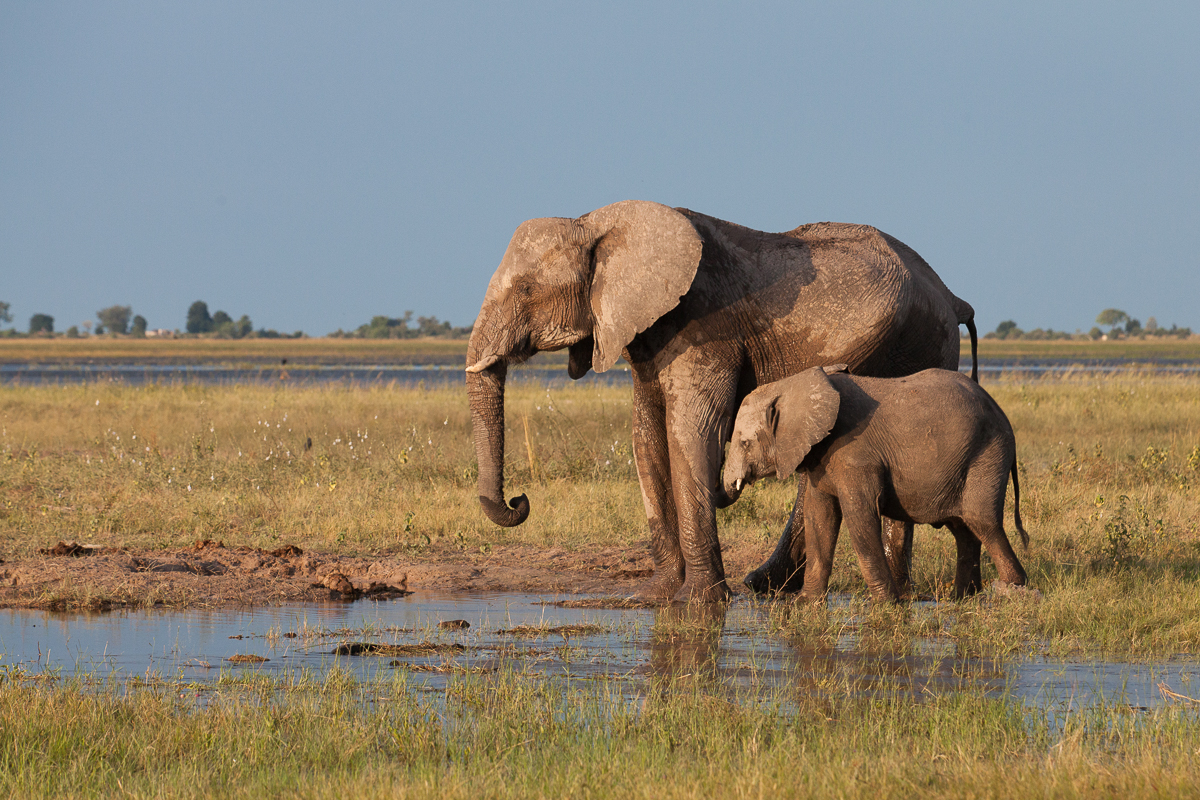Botswana
Okavango delta
5 – 15 november 2020
Luxury mobile camping in the Okavango Delta
botswana
okavango delta
5 – 15 november 2020
Luxe kampeersafari in de Okavango Delta
botswana
Anyone who wants to see Africa in all its purity, should definitely visit Botswana, as it mainly consists of beautiful nature parks and game reserves. 35 % of this safari pre-eminent destination is a nature conservation area.
What is very important for me personally is that the country does everything in its power to protect its precious natural treasures. This country is home to the highest concentration of elephants in the world, most of the wild dogs and one of the last nine large lion populations. A large number of scientists search for solutions to protect and improve wildlife and habitats.
It is in Botswana that I have lost my heart to wildlife and photography.
botswana
okavango delta
5 – 15 november 2020
Luxury mobile camping in the Okavango Delta
€ 5595
(single option + € 600)
The okavango delta
The huge marshland area of the Okavango Delta fed by the approximately 1600 km long Okavango river. It originates in the highlands of Angola and flows into the Kalahari. The area, covering about 15.000 km², consists of a system of river arms and streams, wooded islands, reed, lily and papyrus fields, grassy plains and savannah. The water takes about half a year to get from Angola to the southernmost point of the Delta near Maun. As a result, the Okavango Delta is the only area in the region with a reversed season. Especially in the dry season the water is at its highest. As a result, the Okavango Delta is the only region where the season is reversed. In the dry season zebras, gnus, buffaloes and elephants migrate to the delta again, because the rising water has caused an exuberant growth of plants.
Most of the thousands of islands in the delta are covered with trees, among which the wild date palm, mopane, wild fig tree, sausage tree (kigelia), baobab and tortilis umbrella thorn. Wildlife in the Okavango Delta is overwhelming: not only elephants, waterbucks, buffaloes and warthogs, but also green meerkats, hippos, crocodiles, snakes, turtles, lizards, fish and countless insect species… will cross your path. Great hunters such as lions, hyenas, wild dogs, leopards and cheetahs are also present, as well as rare antelopes such as lechwe and sitatunga. The rhino, already eradicated by poachers in the 1960s, was one of the few missing animals in the delta, but has now fortunately been reintroduced.
The Okavango Delta is a paradise for birdwatchers. More than 400 bird species live in the area, including numerous waterfowl. Bird lovers will get their money’s worth! With a bit of luck they will spot the Pel’s fishing owl, crane, slaty egret, carmine bee-eater, greater swamp warbler, chirping cisticola, Lady Ross turaco, African skimmer, coppery-tailed coucal and undoubtedly the African fish-eagle.
On this unforgettable adventure tour we will explore 4 different areas of the Okavango Delta during the dry season. All the wildlife then concentrates around the Delta for the water; We will camp in the wild, unspoiled nature, however equipped with all the luxuries.
The whole trip we camp in large camping tents that are reminiscent of real hotel rooms: comfortable, neatly made beds and a private bathroom and toilet. And our safari chef also pampers us on a culinary level. Everything is prepared on the campfire.
Moremi
Moremi Game Reserve is located on the east side of the Okavango Delta and covers about 5000 km², approximately one fifth of the area. Together with Chobe, Moremi belongs to the wildest areas of Botswana with hundreds of animal species.
The first 3 nights we camp in one of the most beautiful areas of Moremi.
Every day, Moremi brings new safari adventures, as it one of the world’s most visited game reserves, known for its massive wildlife population and landscapes. The deep and shallow channels and lagoons supply the vegetation and wildlife within the park. The park is without a doubt a defining image of Botswana. Birdwatching is quite amazing in Moremi, as species flock to the park for healthy vegetation. Bird species such as the African fish eagle, African jacana, African hawk eagle, slaty egret, tawny eagle, crested crane, sacred ibis and bateleur migrate to the park, which is a source of massive wildlife. Sitatunga, lechwe, lion, leopard, bushbuck, giraffe, kudu, hyena and large herds of impala, zebra, elephants and buffaloes… may cross our path. We will stay here for 3 nights.
Khwai
The easternmost Khwai River in the Okavango area is of vital importance for the large numbers of animals in this area, especially in the dry season. The Khwai area is adjacent to Chobe National Park and the Khwai River becomes narrower as the river flows deeper into Chobe NP. The water level depends on the water from the Okavango delta. During the dry season the game gathers around the river. The large amount of water has a magnetic attraction to large numbers of elephants, lions, hyenas, leopards and African wild dogs. Fancy a nocturnal game drive? Maybe we’ll spot a genet, spring hare or grazing hippos! Ppredators in action in the dark are much more active! In this area we are also allowed to drive ‘off-road’, so we can position ourselves much better for taking good pictures.
Savute
The Savute area is simply fantastic. The special thing about the Savute Marsh is that for 30 years no water has flowed through it, until now it does again. In the last 150 years the water in the Savute channel has streamed only 4 times! Water is scarce here and therefore the animals behave very hostile towards each other. Elephants and lions regularly clash here, which is rare elsewhere on the planet. Lion families are exceptionally large here, up to 40 lions per group. This is the area where the National Geographic series ‘Savage Kingdom’ and ‘the Flood’ were filmed. Once you’ve seen them, you’ll be itching to leave!
Chobe national park
The Chobe River has an unlikely concentration of wildlife. More than 2,000 zebras, 4,000 buffaloes and more than 45,000 elephants live here. We cross the area with our land cruisers and make two photography boat trips here, where we can capture great moments of drinking animals and sometimes even swimming elephants. The boat is an 8-seater shallow hulled photo boat with customized gimbals and 360 rotational seats.
Photography
The purpose of this trip is not only to experience this amazing adventure, but also to make beautiful photographs.
Are you a beginning nature photographer? Or an advanced photographer who still has Botswana on his wish list? In both cases you are welcome on this learning trip. Carole provides individual guidance and also gives feedback and tips in the camp to give your images a special finishing touch. Also for people who do not take pictures, it is the perfect trip to get a taste for it. Without a camera it is just as much enjoyment!
Accommodation and transport
We’re staying in luxury tents, with private bathroom and toilet… In the middle of nowhere, however featuring all the comforts you need, even with a touch of luxury. While we are enjoying our safari tour, the crew will take care of setting up the camp and prepare a delicious meal. When we return from our game drive, you will feel revived after a nice hot shower, ready to join us around a magnificent campfire.
Two open Land Cruisers will transport us through the nature parks. Each photographer has a row to himself, so there is plenty of space for the gear and you can shoot from both sides of the car.
In Chobe we will spend the last night in Pangolin lodge. We fo on two photography boat trips on the Chobe River. One in the evening, and one in the morning on the last day.
Climate and clothes to wear on safari
Light clothes (weight and colour!) are important for this trip. Take sufficient sun protection precautions (hat, sunscreen…).
Bring a light travel bag in supple material, not heavier than 20 kg. Don’t worry: on safari you can have your clothes washed if necessary. A few weeks before departure the participants will receive a detailed information sheet containing everything you need to know for a carefree trip.
Is this photography trip something for you?
 It’s not just a photography trip, it is mainly an adventure! So even if you are not interested in photography, you will still have the time of your life!
It’s not just a photography trip, it is mainly an adventure! So even if you are not interested in photography, you will still have the time of your life! If you dream of getting to know the real wild, without ending up in a ‘tourist-trap’, then this is the perfect trip
If you dream of getting to know the real wild, without ending up in a ‘tourist-trap’, then this is the perfect trip You have a normal physical condition, and you love an adventure appropriate for all ages
You have a normal physical condition, and you love an adventure appropriate for all ages Your level of photography is of no importance. Carole assists you according to your level
Your level of photography is of no importance. Carole assists you according to your level This is a completely safe trip.
This is a completely safe trip.
Camping in the wild
Camping in Africa is not nearly as daunting as it may seem. And the chance to get up close and personal with nature is more than enough reason to give it a try.
If you have never camped in the wild before, rest assured, it is completely safe. As long as you keep in mind the do’s and don’ts, you will be absolutely fine. It is a very liberating feeling to live among wildlife. And the animals, they really don’t care about us. As long as we don’t bother them, they will not bother us.
Itinerary
31/10 – arrival at Maun and transport to Moremi
1/11 – whole day safari in Moremi, lunch in the camp
2/11 – whole day safari in Moremi, lunch in the camp
3/11 – morning safari in Moremi, drive to Khwai
4/11 – whole day safari in Khwai
5/11 – whole day safari in Khwai
6/11 – early departure to Savute, safari in Savute
7/11 – whole day safari in Savute
8/11 – whole day safari in Savute
9/11 – morning drive to Pangolin Chobe Hotel, boat trip in the afternoon
10/11 boat trip in the morning – transfer to airport Kasane
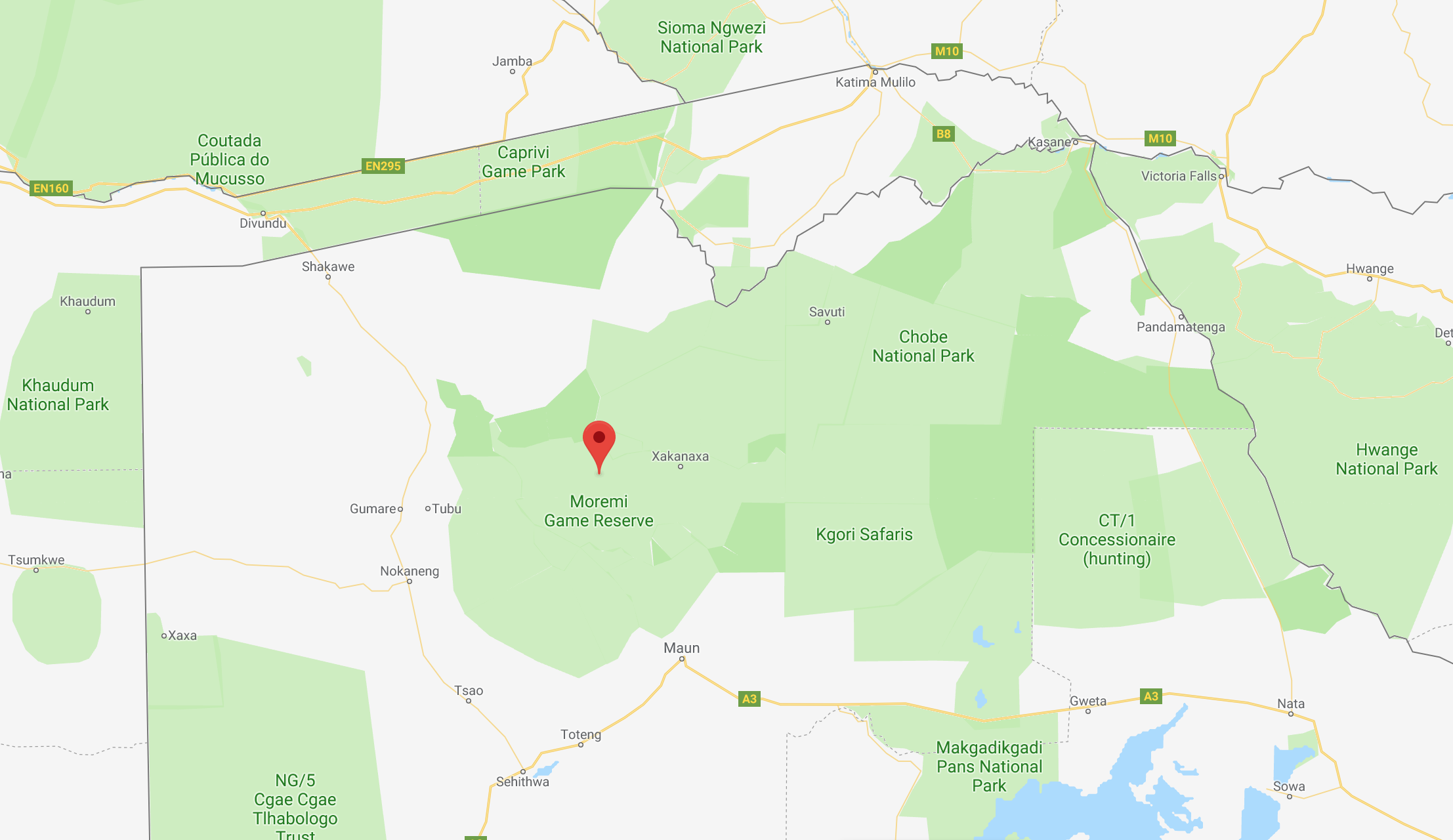
Included
 all drinking water
all drinking water alcoholic drinks and softdrinks (limited)
alcoholic drinks and softdrinks (limited) all excursions and parkfees
all excursions and parkfees all camping equipment
all camping equipment all meals
all meals all hotels
all hotels all transport and diesel
all transport and diesel professional guide
professional guide photography guide
photography guide insurance guarantee fund
insurance guarantee fund
Not included
 international flights and airport taxes
international flights and airport taxes extra nights
extra nights personal expenses
personal expenses tips
tips travel insurance
travel insurance cancellation insurance
cancellation insurance
botswana
okavango delta
5 – 15 november 2020
An amazing guided selfdrive trip through the Kalahari part of Botswana.
€ 5595
(single option + € 600)
Botswana
Voor wie Afrika in al zijn puurheid wil aanschouwen, is Botswana een must, want het bestaat vooral uit prachtige natuurparken en wildreservaten. 35 % van deze safaribestemming bij uitstek is beschermd natuurgebied.
Wat ik persoonlijk heel belangrijk vind: het land doet er alles aan om zijn kostbare natuurschatten te beschermen. Het land herbergt de hoogste concentratie aan olifanten ter wereld, de meeste wilde honden en een van de negen laatste grote leeuwenpopulaties. Een groot aantal wetenschappers zoekt uit hoe de bescherming van wildlife en habitats nog beter kan.
Het is in Botswana dat ik mijn hart verloren heb aan wildlife en fotografie.
botswana
okavango delta
5 – 15 november 2020
Luxe kampeersafari in de Okavango Delta
€ 5595
(single option + € 600)
De Okavango Delta
Het enorme moerasgebied van de Okavango Delta wordt gevoed door de ongeveer 1600 km lange Okavango-rivier. Ze ontspringt in het hoogland van Angola en mondt uit in de Kalahari. Het gebied beslaat zo’n 15.000 km2 en bestaat uit een systeem van rivierarmen en stroompjes, beboste eilanden, riet-, lelie- en papyrusvelden, grasvlaktes en savanne. Het water doet er ongeveer een half jaar over om vanuit Angola het meest zuidelijke punt van de Delta bij Maun te bereiken. Dit heeft tot gevolg dat de Okavango Delta als enige gebied in de regio een omgekeerd seizoen heeft. Juist in de droge periode staat het water er het hoogst. Dan trekken zebra’s, gnoes, buffels en olifanten de delta weer binnen, omdat het stijgende water voor een uitbundige plantengroei heeft gezorgd.
De meeste van de duizenden eilanden in de delta zijn begroeid met bomen waaronder wilde dadelpalm, mopane, wilde vijgenboom, worstenboom (kigelia), baobab en tortilis umbrella thorn (parapludoornboom). De dierenwereld in de Okavango Delta is overweldigend: naast olifanten, waterbokken, buffels en knobbelzwijnen vind je er groene meerkatten, nijlpaarden, krokodillen, slangen, schildpadden, hagedissen, vissen en talloze insectensoorten… Ook tref je er de grote jagers zoals leeuwen, hyena’s, wilden honden en luipaarden. Verder zijn er zeldzame antilopen zoals de lechwe en sitatoenga. De neushoorn, die door stropers in de jaren zestig al uitgeroeid is, was een van de weinige ontbrekende dieren in de delta, maar is nu gelukkig opnieuw geïntroduceerd.
De Okavango Delta is een paradijs voor vogelaars. Er leven meer dan 400 vogelsoorten waaronder talloze watervogels. Vogelliefhebbers komen hier helemaal aan hun trekken! Met een beetje geluk spotten ze de Pel’s visuil, kraanvogel, Sharpes reiger, karmijnrode bijeneter, papyrusrietzanger, moerasgraszanger, Lady Ross’ toerako, Afrikaanse schaarbek, koperstaartspoorkoekoek en ongetwijfeld de Afrikaanse visarend.
Op deze onvergetelijke avontuurlijke rondreis verkennen we 4 verschillende gebieden van de Okavango Delta tijdens het droge seizoen. Al het wild concentreert zich dan namelijk rond de Delta voor het water. We kamperen in de wilde, ongerepte natuur, maar we zijn wel voorzien van alle luxe.
De hele trip kamperen we in grote kampeertenten die doen denken aan heuse hotelkamers: comfortabele, netjes opgemaakte bedden en een eigen badkamer en toilet. En ook op culinair vlak worden we door onze safari-chef-kok in de watten gelegd. Alles wordt op het kampvuur klaargemaakt.
Moremi
Het Moremi Game Reserve ligt aan de oostkant van de Okavango Delta en beslaat met een oppervlakte van 5000 km² ongeveer een vijfde van het gebied. Moremi behoort samen met Chobe tot de wildrijkste gebieden van Botswana met honderden diersoorten.
De eerste 3 nachten slaan we ons kamp op in een van de mooiste gebieden van Moremi.
Elke dag heeft Moremi, een van ’s werelds meest bezochte wildreservaten, bekend om de enorme wildlife-populatie en het landschap een nieuw safari-avontuur in petto. De diepe en ondiepe kanalen en lagunes zorgen voor de vegetatie in het park. Het staat als een paal boven water dat het park beeldbepalend is voor Botswana. Vogelspotten in Moremi doet je versteld staan. Vogelsoorten als de Afrikaanse visarend, de Afrikaanse lelieloper, de Afrikaanse havikarend, de Sharpes reiger, de savannearend, de kroonkraanvogel, de heilige ibis en de bateleur-roofvogel strijken massaal neer in het park met zoveel gezonde vegetatie. Wellicht kruisen wilde dieren als de sitatoenga, lechwe, leeuw, luipaard, bosbok, giraf, koedoe, hyena, kuddes impala’s, zebra’s, olifanten en buffels ons pad. We verblijven hier 3 nachten.
Khwai
De meest oostelijk gelegen Khwai-rivier in de Okavango Delta is zeker in de droge periode van levensbelang voor de grote aantallen dieren. Het Khwai-gebied grenst aan Chobe NP en de Khwai-rivier wordt steeds smaller naarmate de rivier dieper Chobe NP instroomt. De waterstand is afhankelijk van het water uit de Okavango Delta. Tijdens het droge seizoen verzamelt het wild zich rond de rivier. Het vele water werkt als een magneet op olifanten, leeuwen, hyena’s, luipaarden en Afrikaanse wilde honden. Zin in een nachtelijke ‘game drive’? Misschien spotten we wel een genetkat, springhaas of grazende nijlpaarden! Roofdieren die je in het donker in actie ziet zijn veel actiever! In dit gebied mogen we ook ‘offroad’ rijden, zodat we ons veel beter kunnen positioneren voor goeie foto’s.
savute
Het Savute-gebied is simpelweg fantastisch. Het bijzondere aan de Savute Marsh is dat er 30 jaar geen water doorheen heeft gestroomd maar nu weer wel. In de laatste 150 jaar heeft het water in het Savute channel maar 4 keer gestroomd!
Water is hier schaars en daarom gedragen de dieren gedragen er zich erg vijandig ten opzichte van elkaar. Zo liggen olifanten en leeuwen hier regelmatig met elkaar in de clinch, iets wat elders op de planeet nauwelijks voorkomt. Leeuwenfamilies zijn hier uitzonderlijk groot, tot wel 40 stuks per groep. Dit is het gebied waar de National Geographic-series ‘Savage Kingdom’ en ‘the Flood’ gefilmd zijn. Als je die gezien hebt, sta je te popelen om te vertrekken!
Chobe Nationaal Park
De Chobe Rivier heeft een onwaarschijnlijke concentratie aan wilde dieren. Hier leven meer dan 2000 zebra’s, 4000 buffels en meer dan 45.000 olifanten. We doorkruisen het gebied met onze landcruisers en maken hier twee maal een fotoboottocht, waar we drinkende dieren en soms zelfs zwemmende olifanten op de gevoelige plaat kunnen vastleggen.
Zo ziet je dag op fotosafari eruit
Alles draait om het spotten en fotograferen van dieren. Het is dan ook ‘werken’, maar ook echt kicken van zoveel mooie beelden. We worden de hele reis perfect omringd, zodat we ons alleen moeten bezighouden met foto’s maken.
Gezonde ochtend
‘s Ochtends staan we heel vroeg op: om 5 uur. Na het ontbijt zijn we weg, de bush in, op zoek naar wilde dieren. Omdat we elke dag zo intensief bezig zijn, is goed eten belangrijk. Onze safari-chefkok voorziet ‘s ochtends een gezond ontbijt. Halverwege de voormiddag houden we koffiepauze in de schaduw van een boom.
Lunchen
we lunchen in het kamp en nemen we tijd om na de lunch foto’s te downloaden en te bespreken.
Een sundowner en lekker diner
Na zonsondergang klinken we met een sundowner (aperitief) rond het kampvuur en genieten we van een driegangenmenu in de wilde natuur: soep, hoofdgerecht en dessert.
accommodatie
We logeren in luxetenten met eigen douche en toilet… In the middle of nowhere, maar toch met alle comfort, dat je zelfs een tikkeltje luxueus mag noemen. Terwijl wij op safari zijn, gaat de crew aan de slag voor ons om het kamp op te slaan en lekkere maaltijden te bereiden. Als we terugkomen van game drive, wacht ons een warme douche en even later installeren we ons rond een fantastisch kampvuur.
Twee open Land Cruisers vervoeren ons door de natuurparken.
In Chobe maken we twee boottochten op de Chobe-rivier en we slapen er de laatste nacht in de luxueuze lodge van Pangolin.
Klimaat en kleding op safari
Lichte kleding (zowel in gewicht als kleur) is belangrijk tijdens deze trip. Voorzie voldoende bescherming tegen de zon (hoed, zonnecrème,…).
Pak een lichte, soepele reistas die niet zwaarder is dan 20 kg. Geen nood: op safari kan je je kleren laten wassen! Enkele weken voor vertrek ontvangen de deelnemers nog een uitgebreide informatie fiche met alles wat je moet weten voor een zorgenloze reis.
Is deze fotografiereis iets voor jou?

Ben je een beginnend natuurfotograaf? Of net een gevorderde fotografiekenner die Botswana nog op het verlanglijstje heeft staan? In beide gevallen ben je welkom op deze leerrijke trip. Carole voorziet individuele begeleiding en geeft ook in het kamp feedback en tips om je beelden ‘af’ te maken. Ook voor mensen die niet fotograferen is het de ideale trip om de smaak te pakken te krijgen. Zonder fototoestel is het evenveel genieten!
 Het is niet alleen een fotografiereis, maar vooral ook een avontuur! Dus zelfs als je geen interesse hebt in fotografie, is het evenzeer een fantastische reis om te beleven.
Het is niet alleen een fotografiereis, maar vooral ook een avontuur! Dus zelfs als je geen interesse hebt in fotografie, is het evenzeer een fantastische reis om te beleven. Als je ervan droomt om het echte wilde Afrika te leren kennen, zonder het gevoel te hebben in een ‘tourist-trap’ te zitten, dan is deze reis ideaal.
Als je ervan droomt om het echte wilde Afrika te leren kennen, zonder het gevoel te hebben in een ‘tourist-trap’ te zitten, dan is deze reis ideaal. Je hebt een normale fysieke conditie.
Je hebt een normale fysieke conditie. Geschikt voor alle leeftijden.
Geschikt voor alle leeftijden. Je niveau van fotografie doet er niet toe: Carole begeleidt je volgens jou kunnen.
Je niveau van fotografie doet er niet toe: Carole begeleidt je volgens jou kunnen. Deze reis is heel veilig, we hebben een heel goeie gids mee die ons begeleidt.
Deze reis is heel veilig, we hebben een heel goeie gids mee die ons begeleidt.
Kamperen in de wilde natuur
Onbekend is ongeliefd, zegt men wel eens. Het zal misschien sommige mensen afschrikken, maar ik kan je garanderen dat het echt veilig is. Zolang je je houdt aan bepaalde afspraken is er geen enkel gevaar.
Integendeel, het is echt een bevrijdend gevoel zo te leven tussen de dieren, in de vrije natuur. En de dieren, die trekken zich echt niks van ons aan… Over het algemeen gaan ze ons uit de weg. Ook in het donker, blijven ze steeds buiten de lichtcirkel.
Reisprogramma
5/11 – aankomst in Maun en transport naar Moremi
6/11 – de hele dag safari in Moremi, lunch in het kamp
7/11 – de hele dag safari in Moremi, lunch in het kamp
8/11 – ochtend safari in Moremi, rijden naar Khwai
9/11 – De hele dag safari in Khwai
10/11 – de hele dag safari in Khwai
11/11 – vroeg vertrekken naar Savute, safari in savute
12/11 – de hele dag safari in savute
13/11 – de hele dag safari in savute
14/11 – ‘s morgens rijden naar Pangolin lodge, boottocht in de namiddag
15/11 boottocht in de ochtend – transfer naar luchthaven Kasane

Inbegrepen
 alle drinkwater
alle drinkwater alcoholische dranken en frisdranken
alcoholische dranken en frisdranken  alle excursies en park ingangen
alle excursies en park ingangen boottocht met speciale fotografieboot
boottocht met speciale fotografieboot alle maaltijden
alle maaltijden alle overnachtingen
alle overnachtingen alle transport
alle transport  gespecialiseerde gids
gespecialiseerde gids fotografie gids
fotografie gids verzekering garantie fonds
verzekering garantie fonds
Niet inbegrepen
 internationale vluchten en luchthaventaxen
internationale vluchten en luchthaventaxen extra overnachtingen
extra overnachtingen persoonlijke uitgaven
persoonlijke uitgaven fooien
fooien reisbijstandsverzekering
reisbijstandsverzekering annulatieverzekering
annulatieverzekering
botswana
okavango delta
5 – 15 november 2020
Luxe kampeersafari in de Okavango Delta
€ 5595
(single option + € 600)
